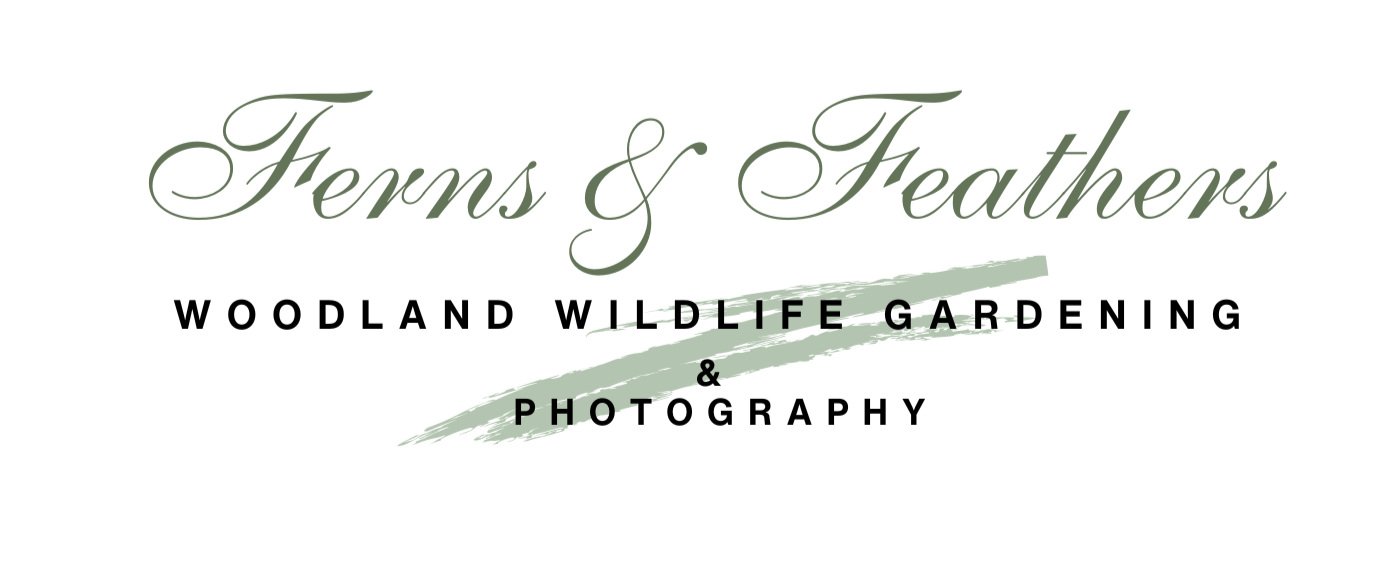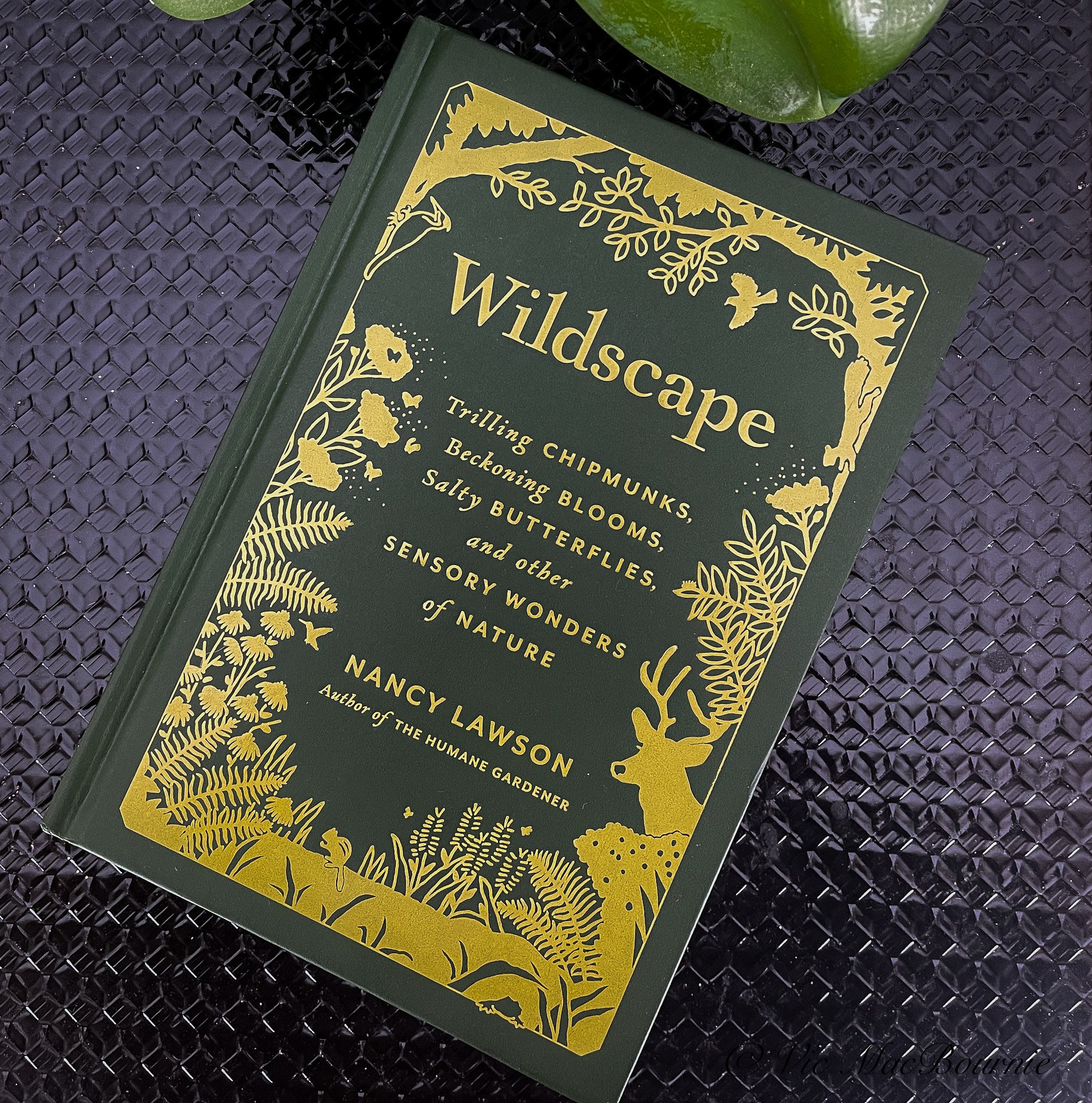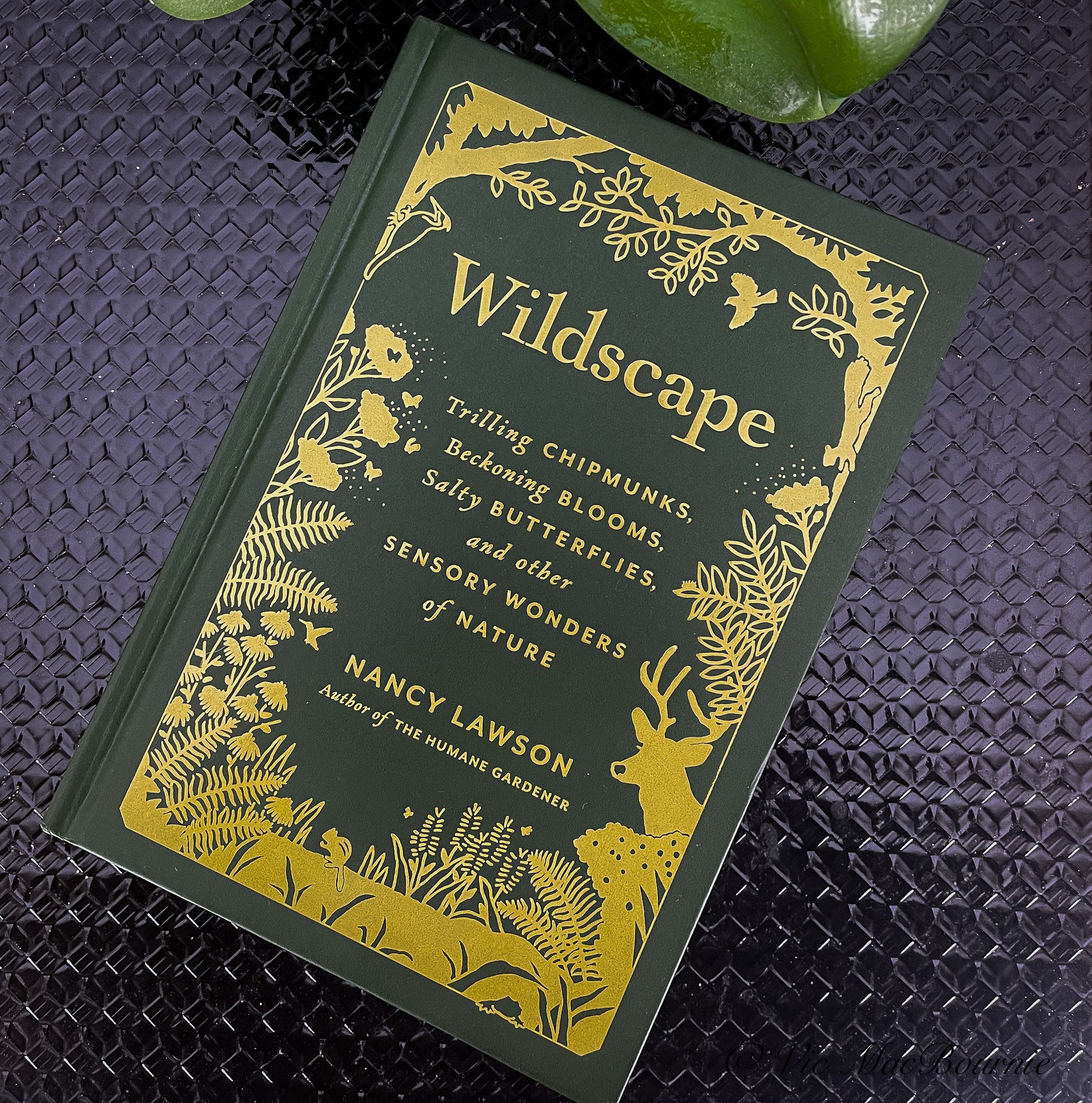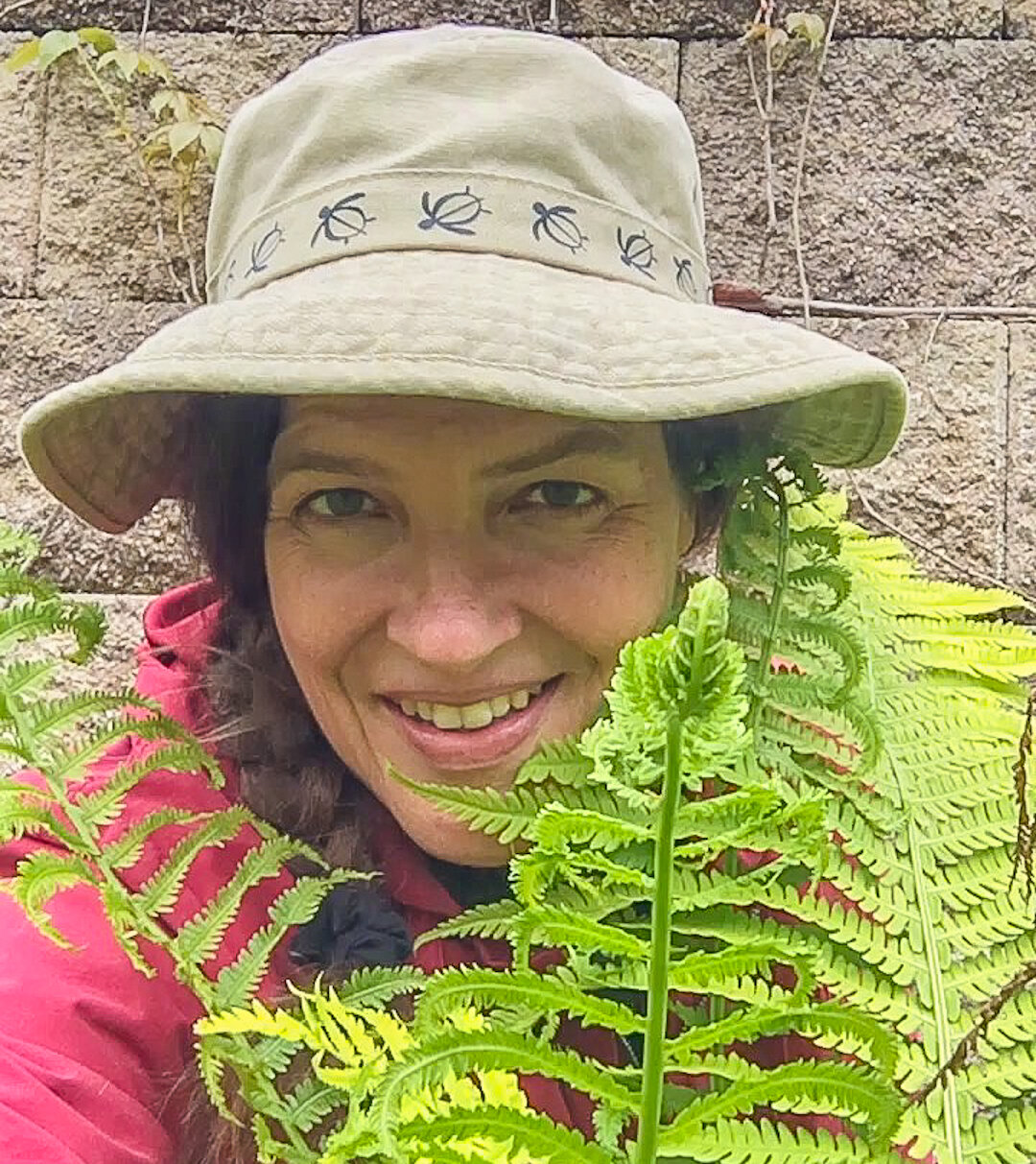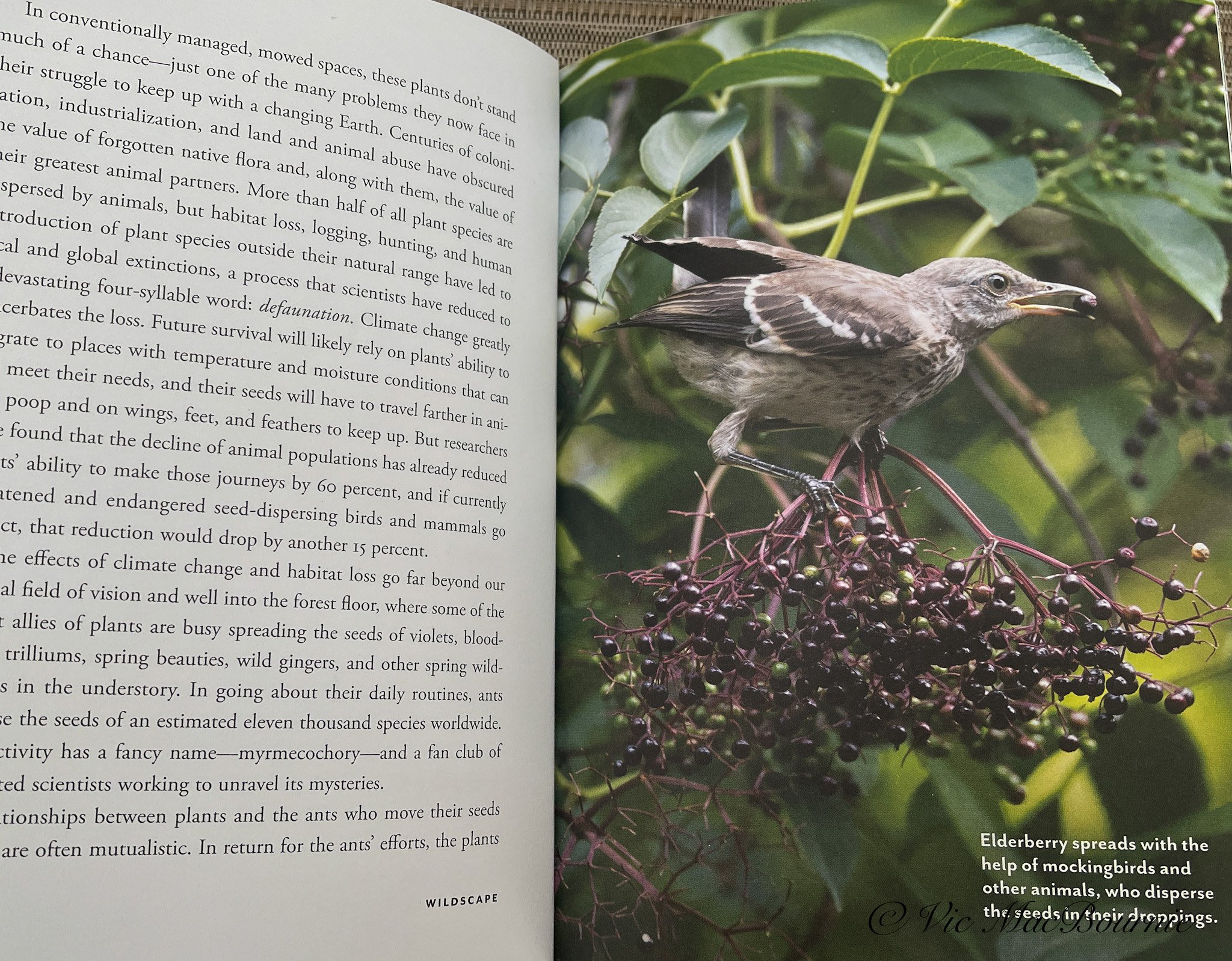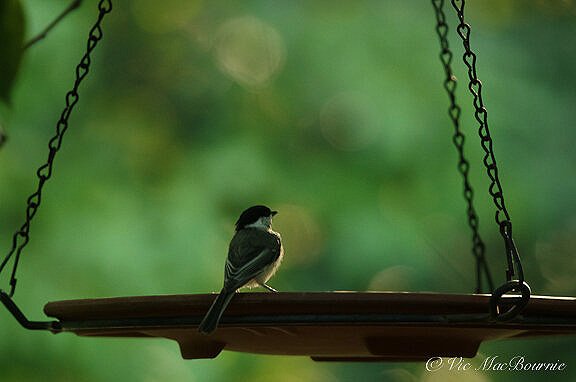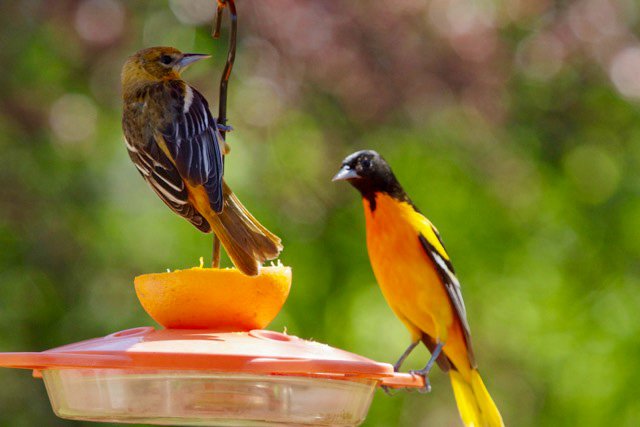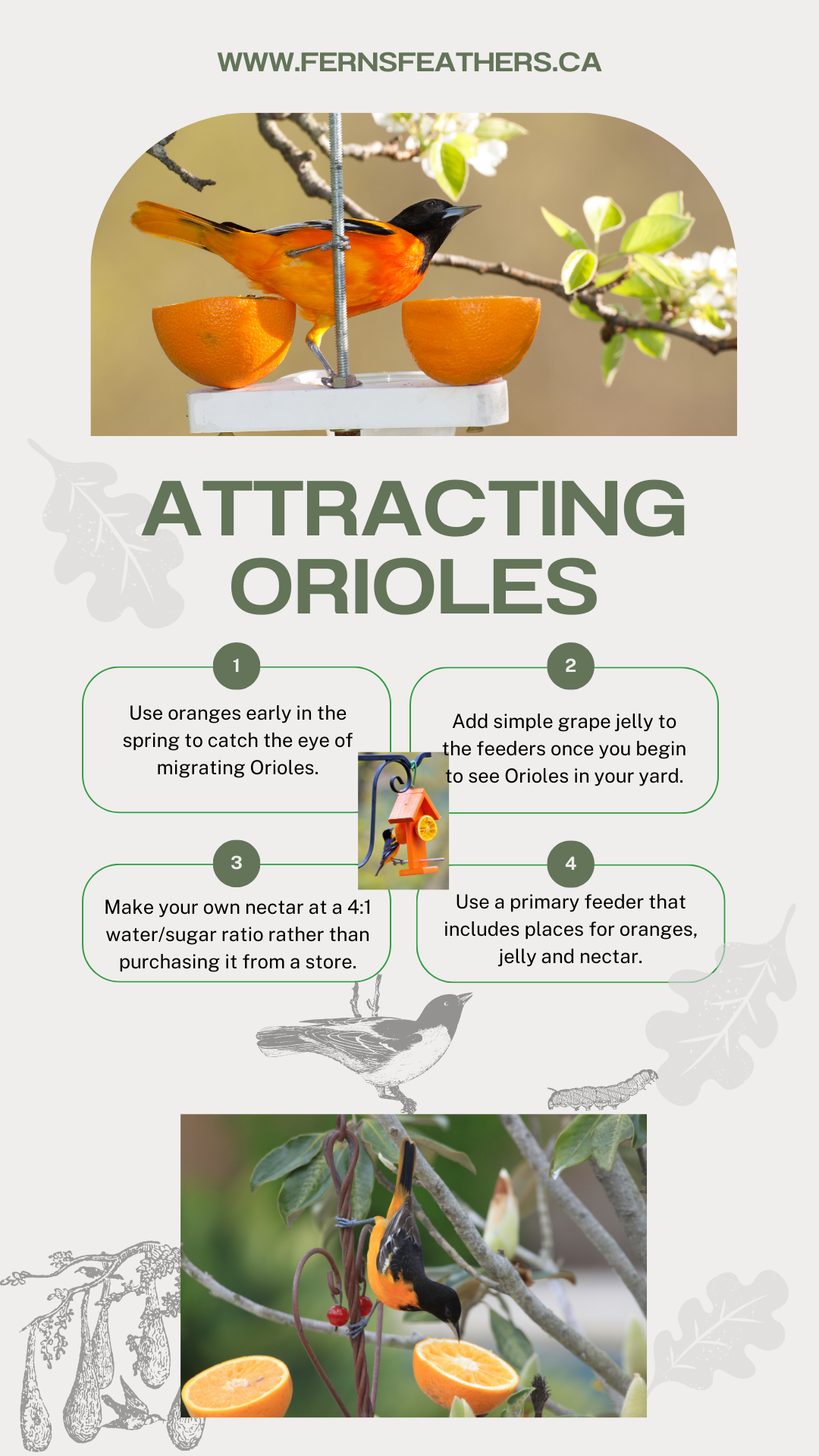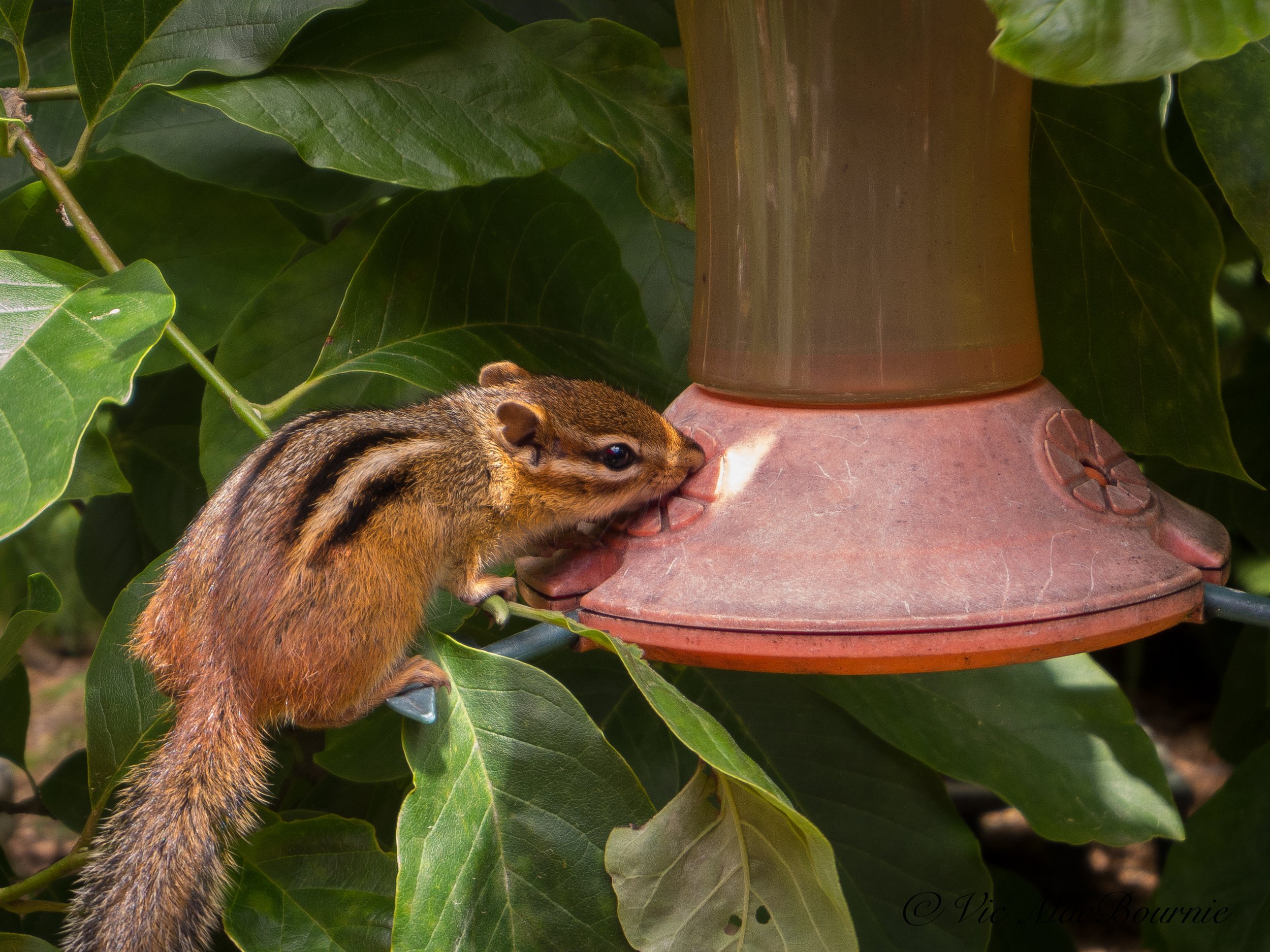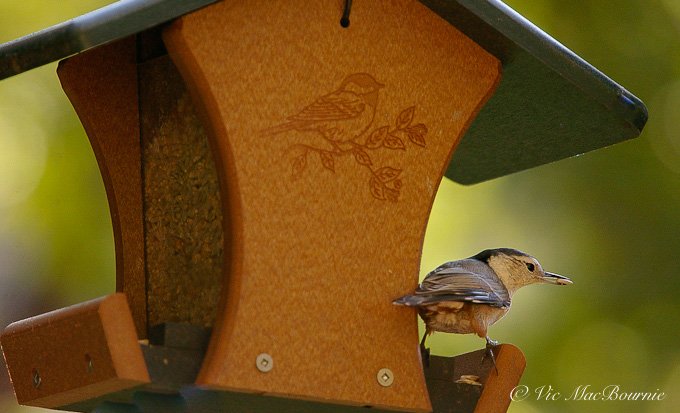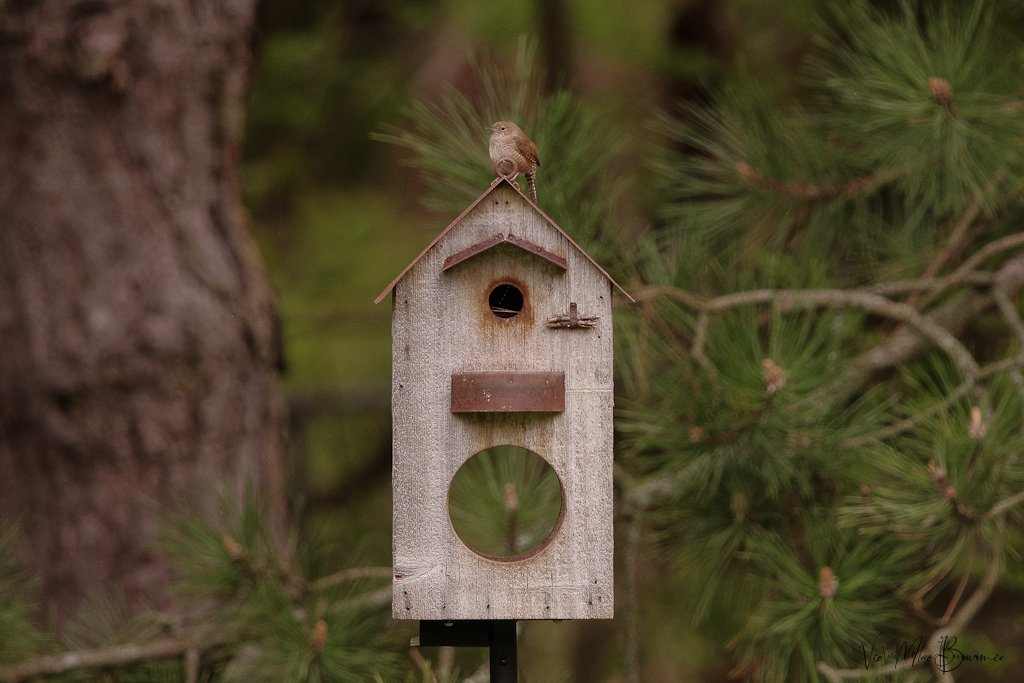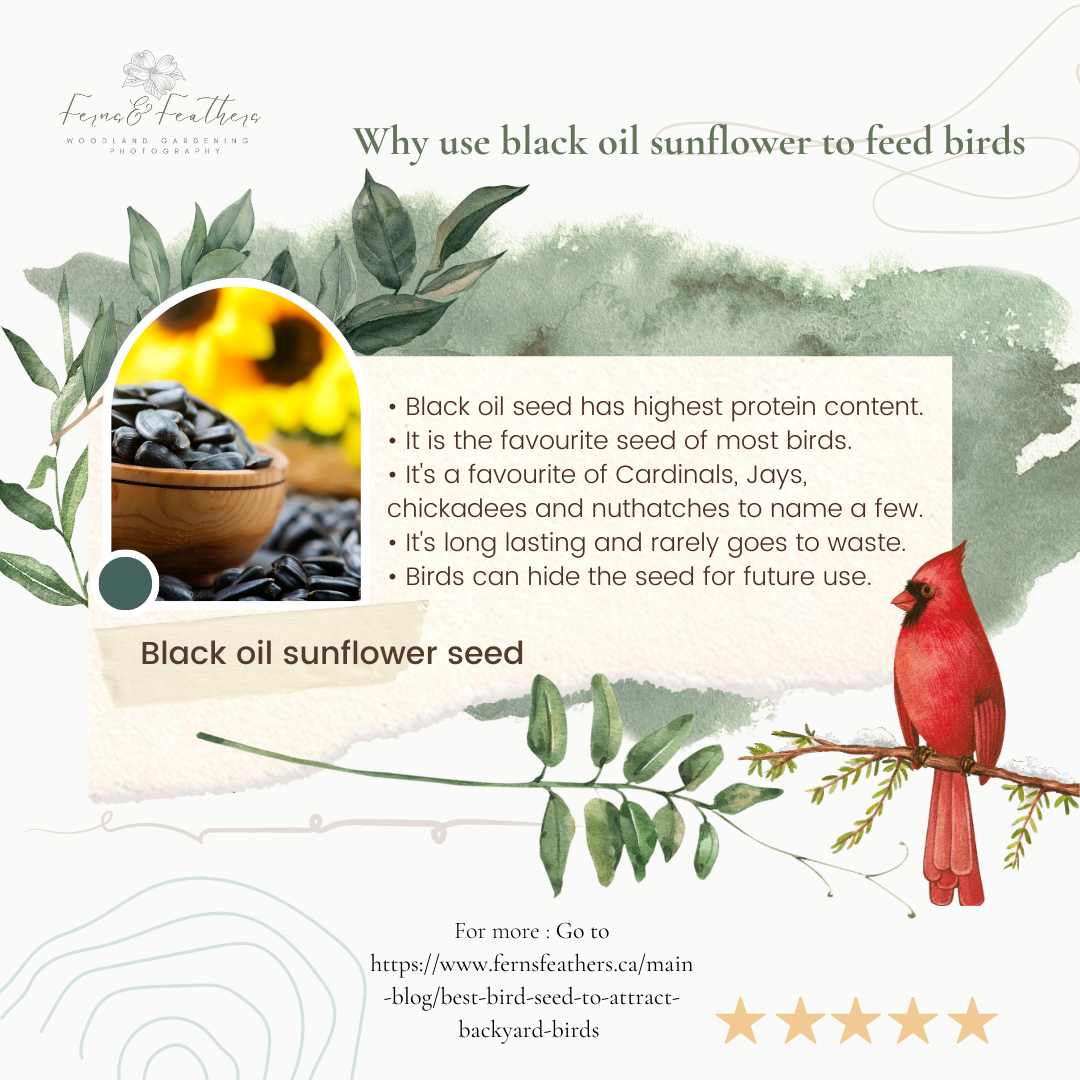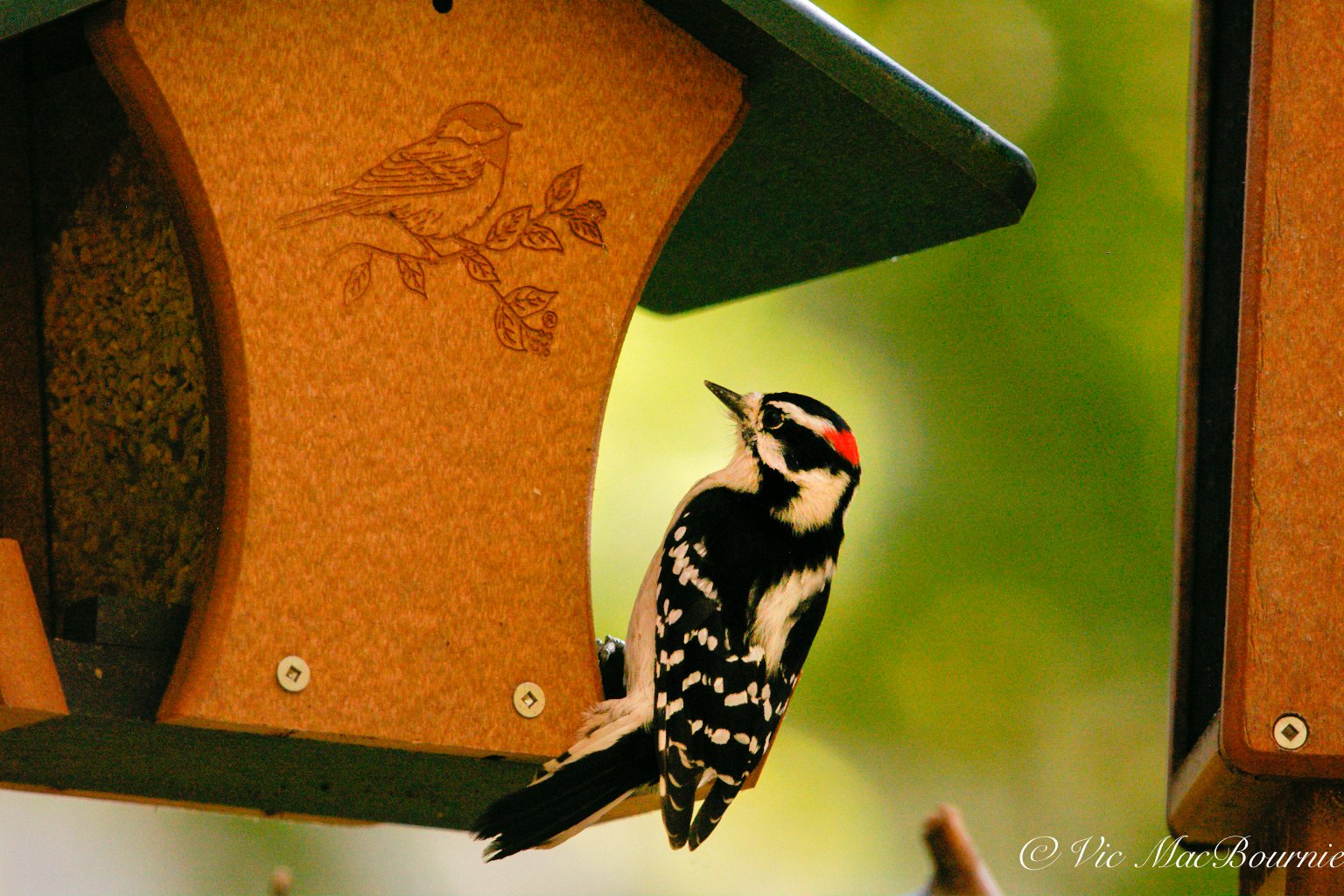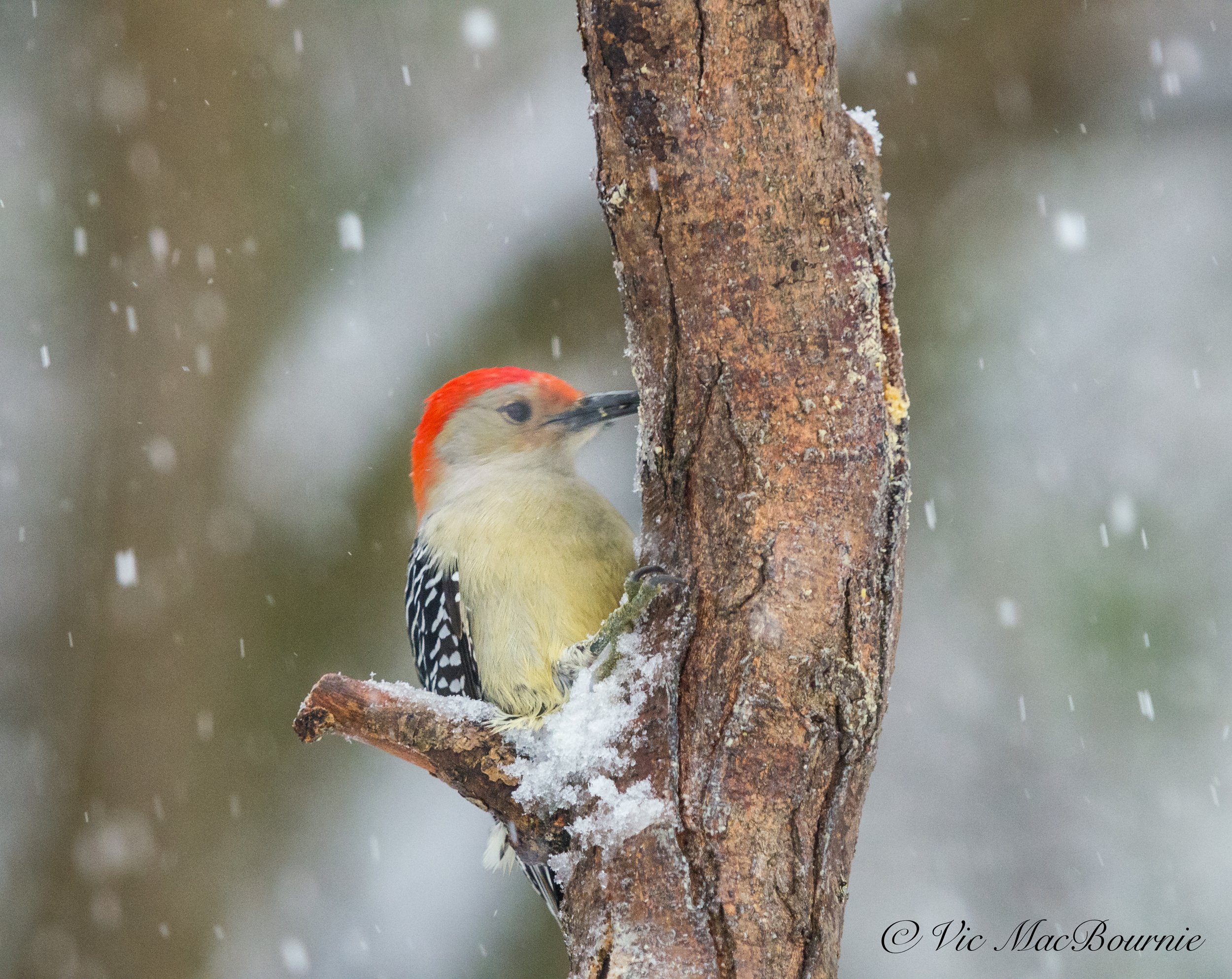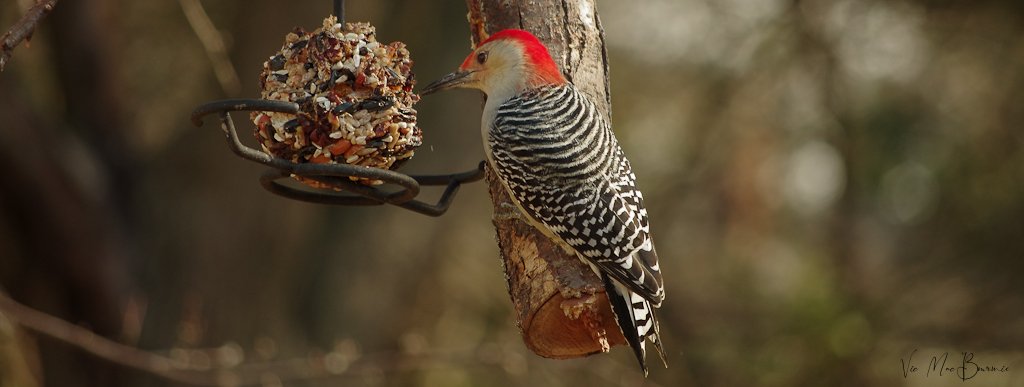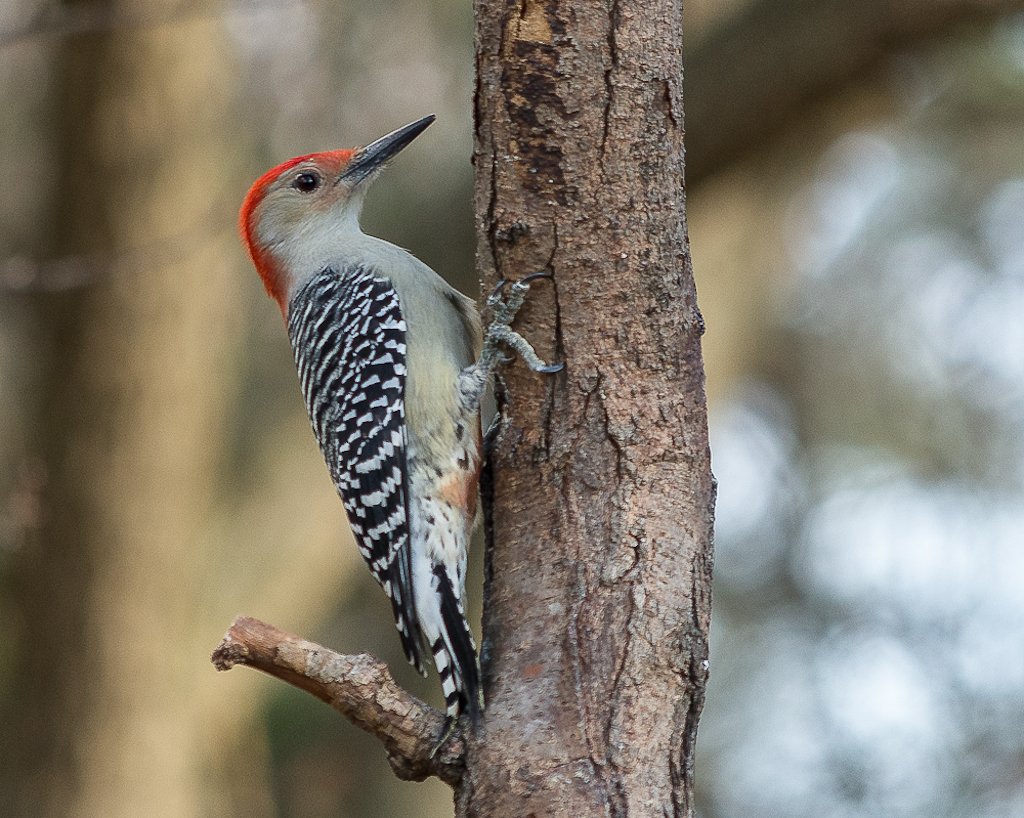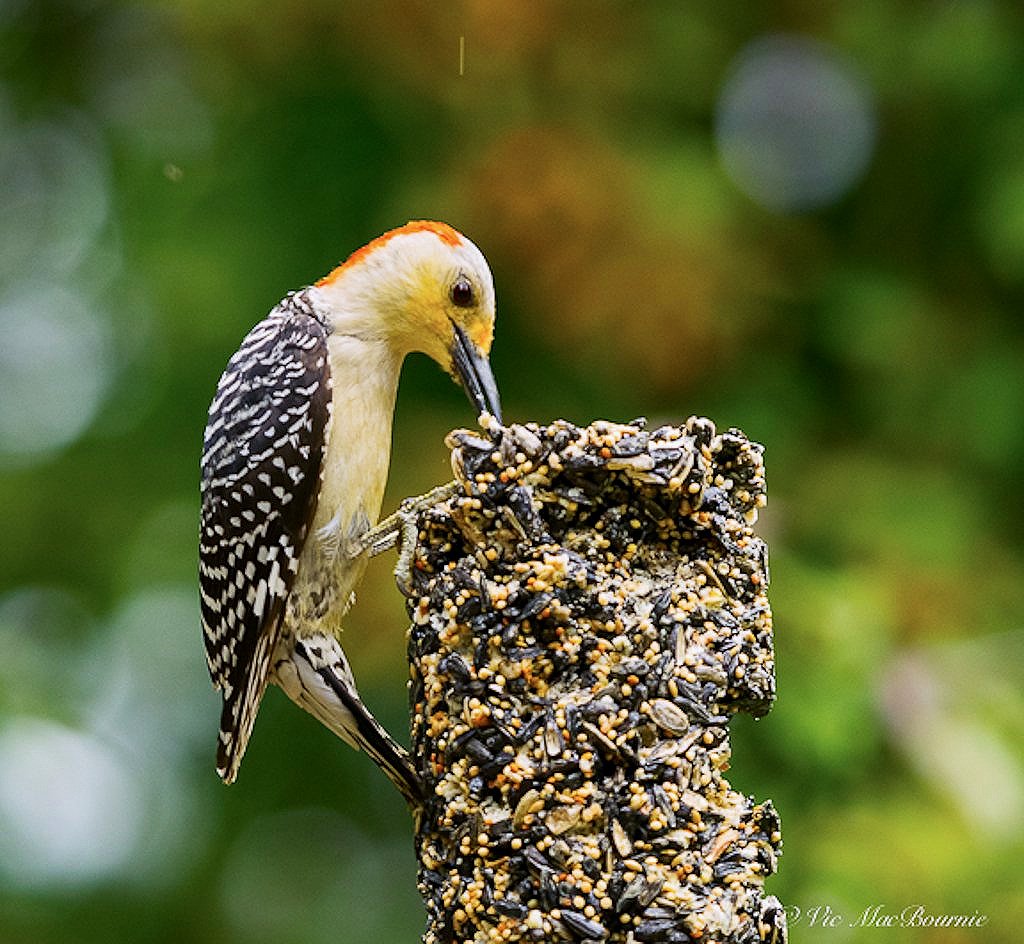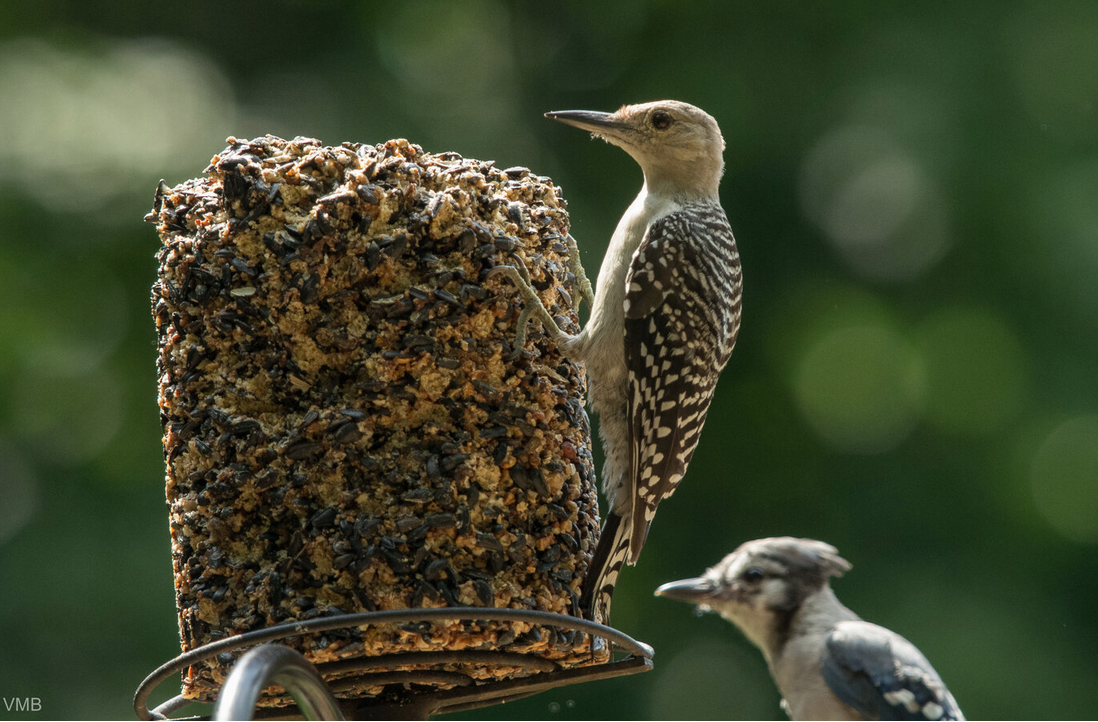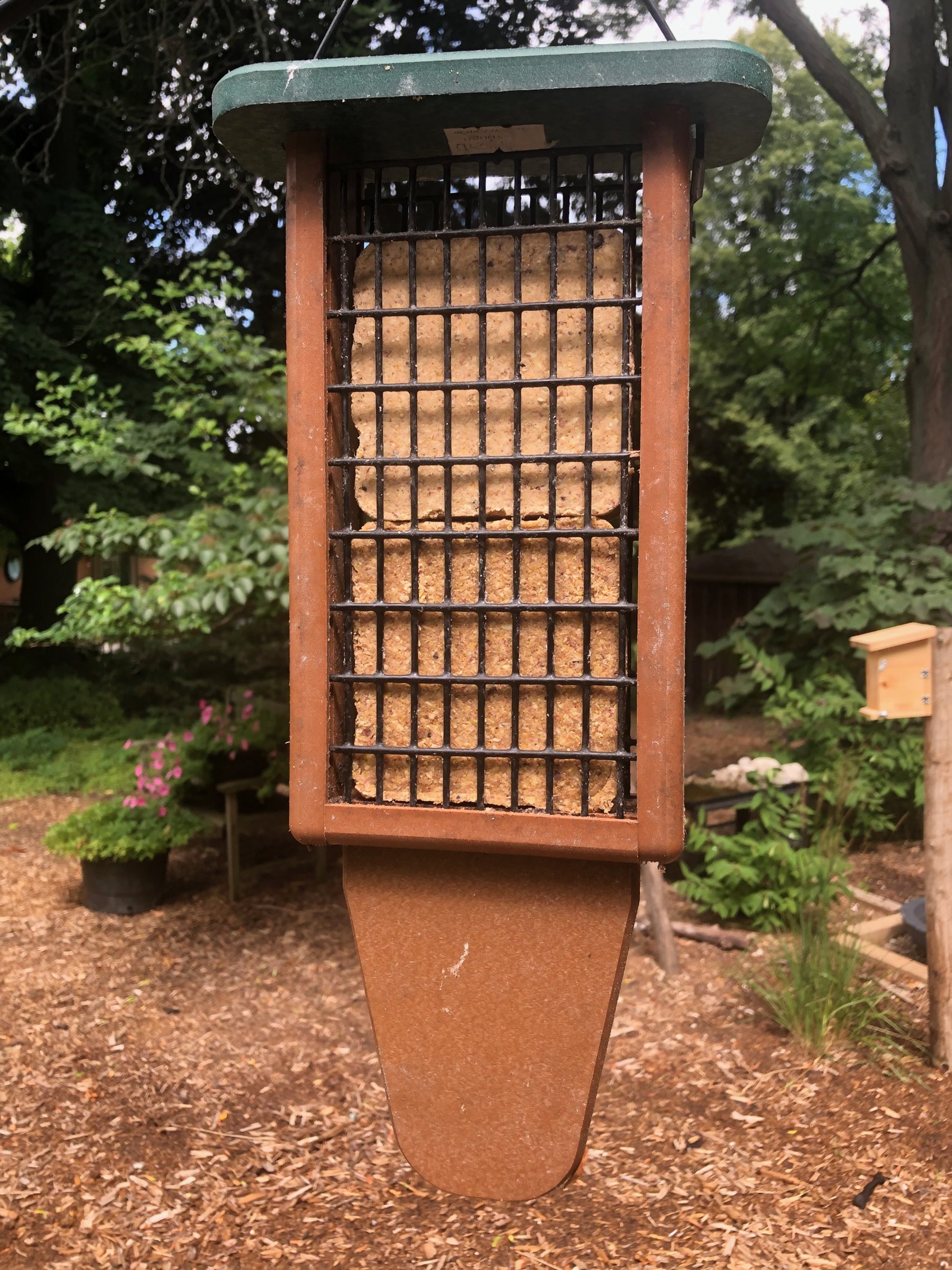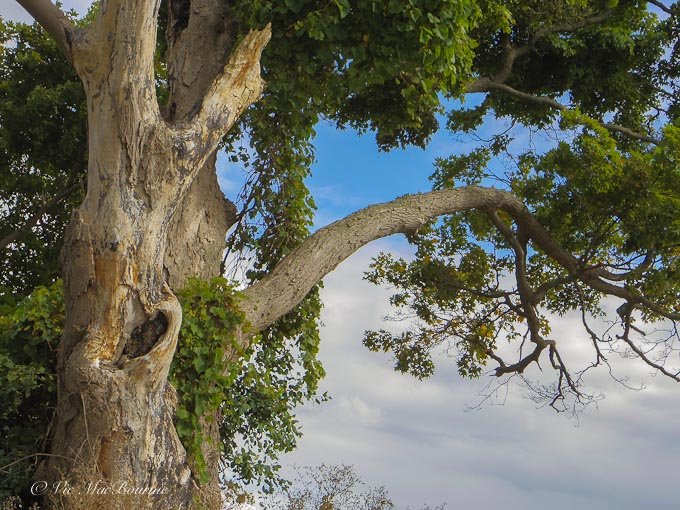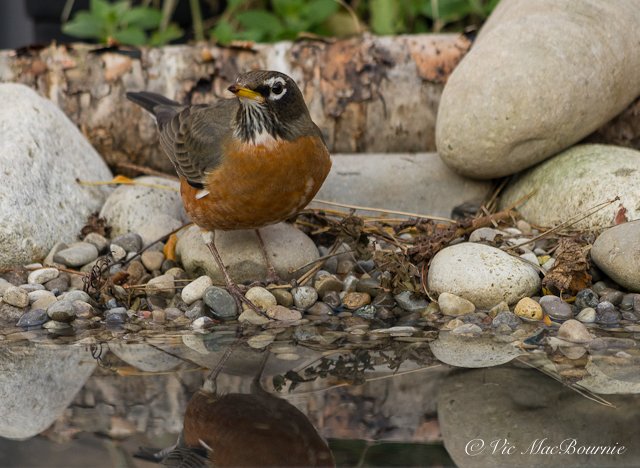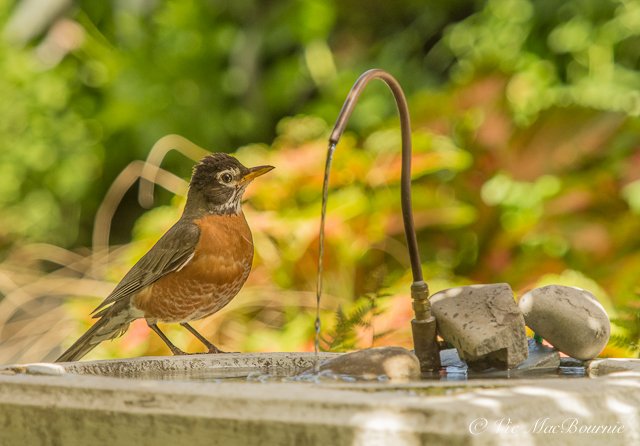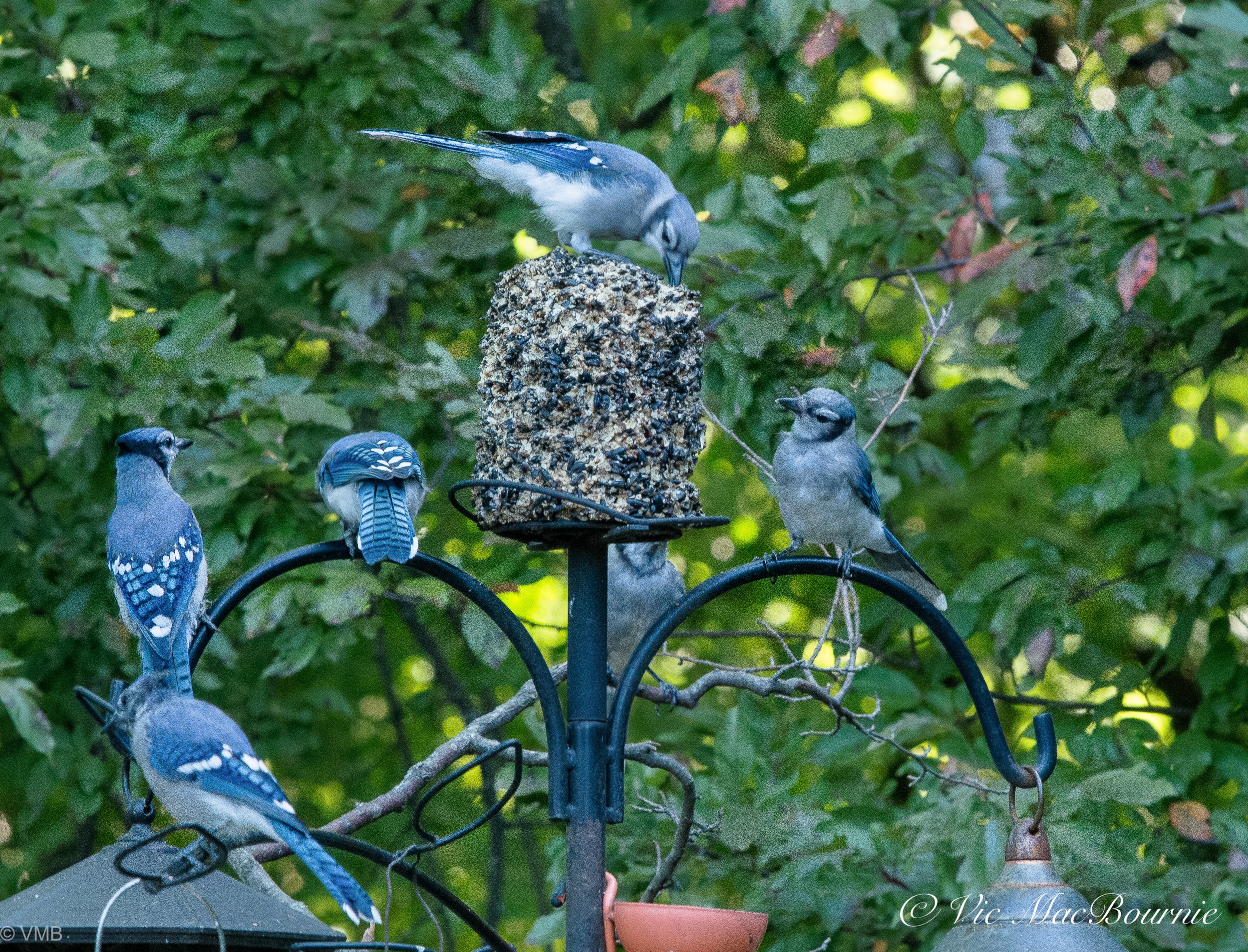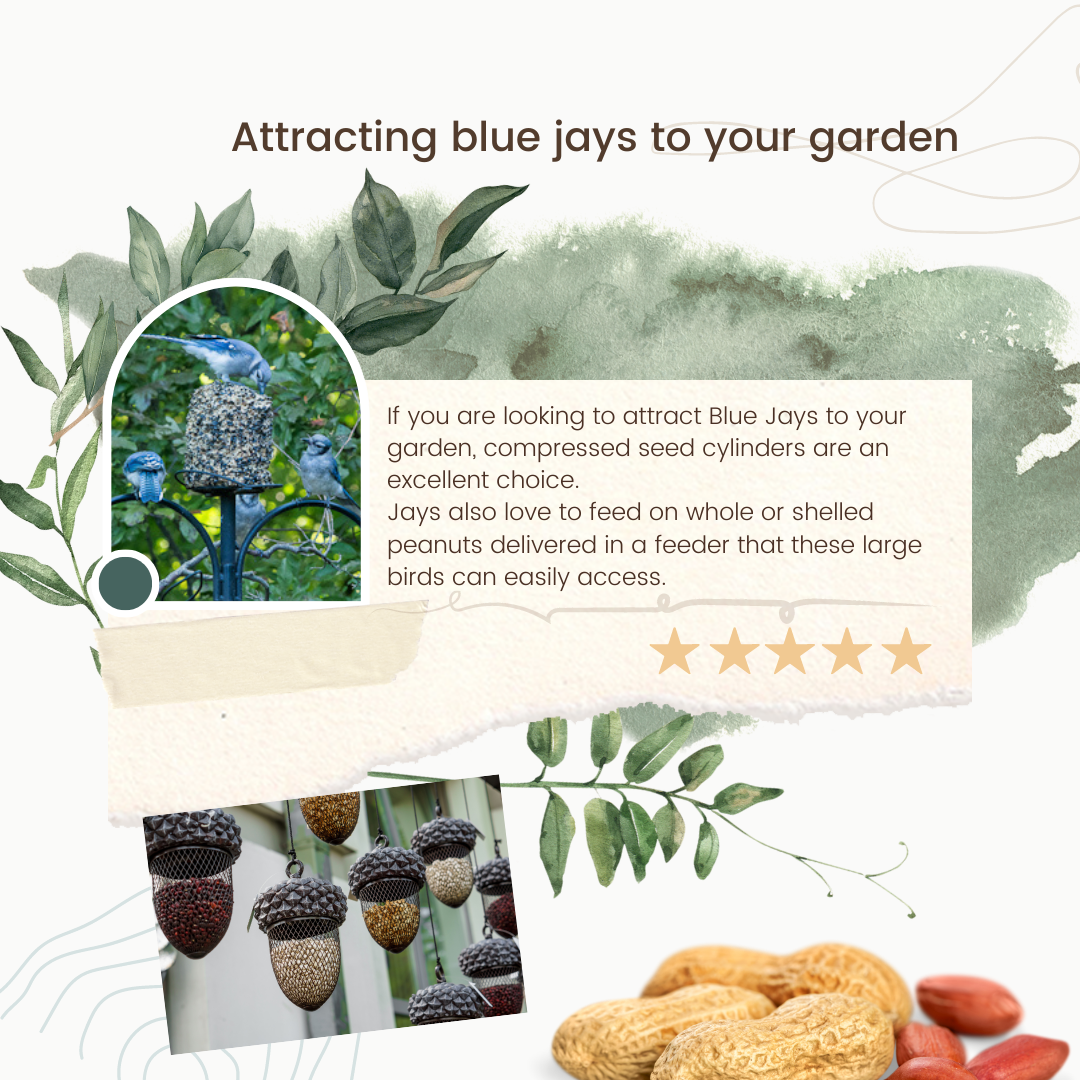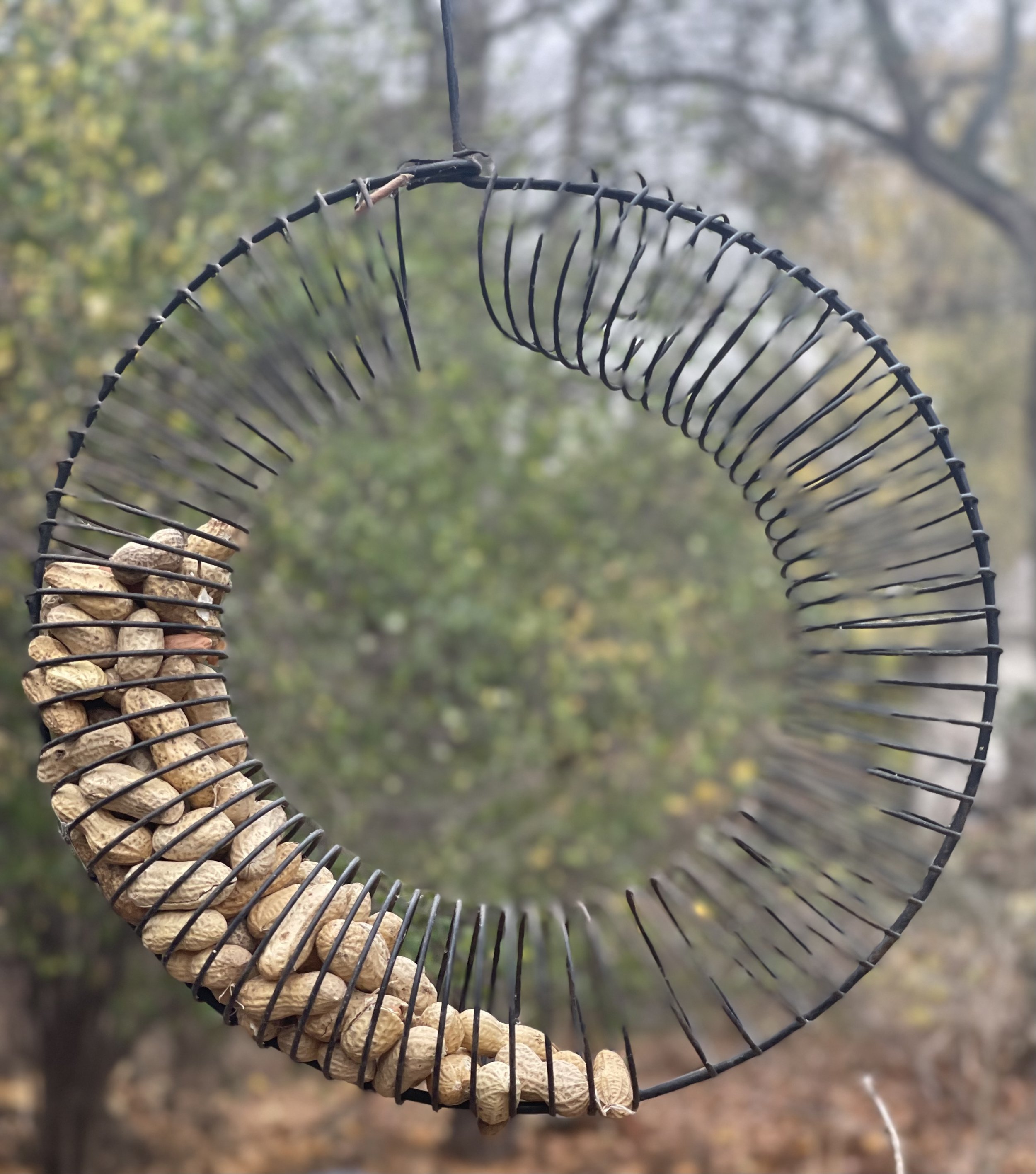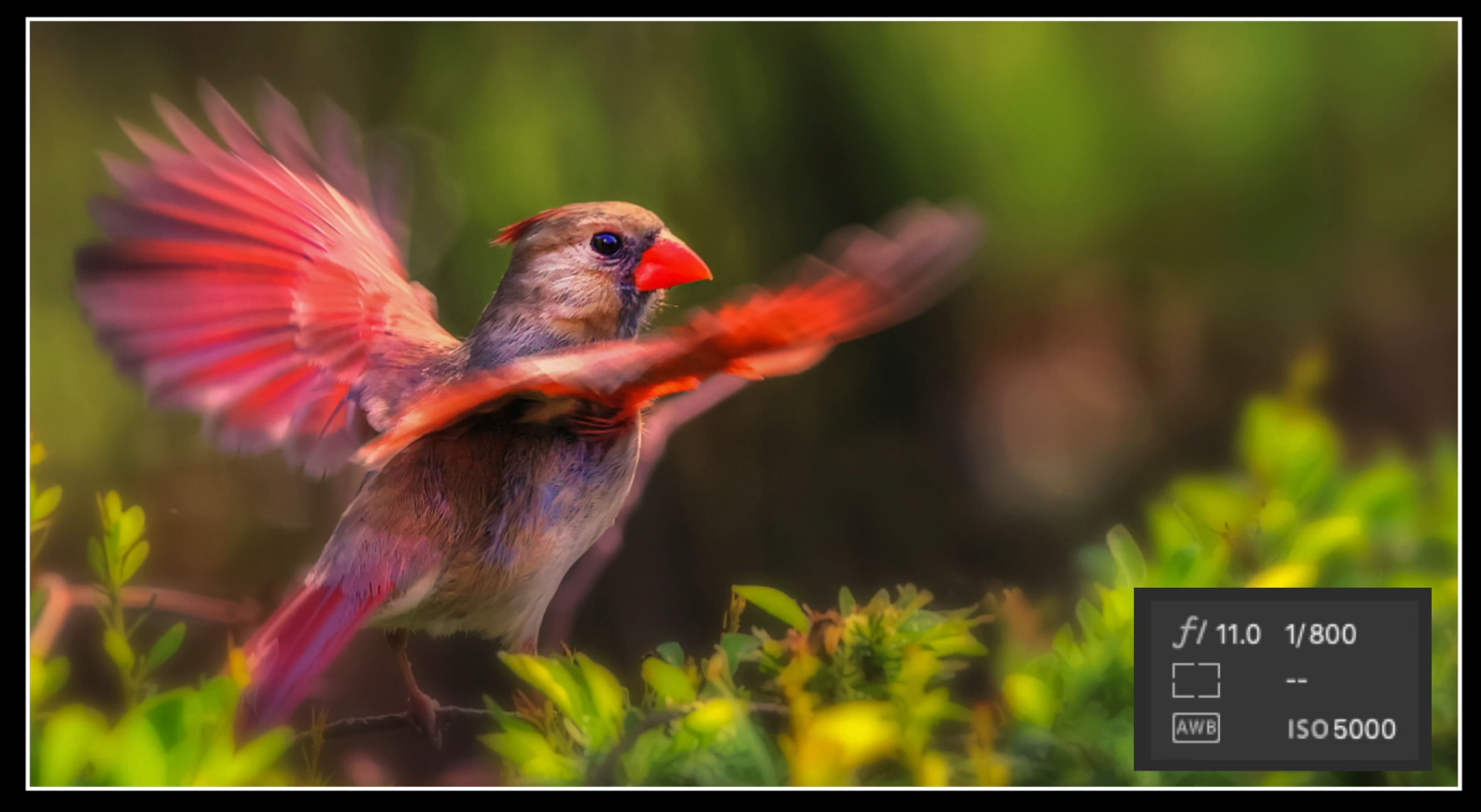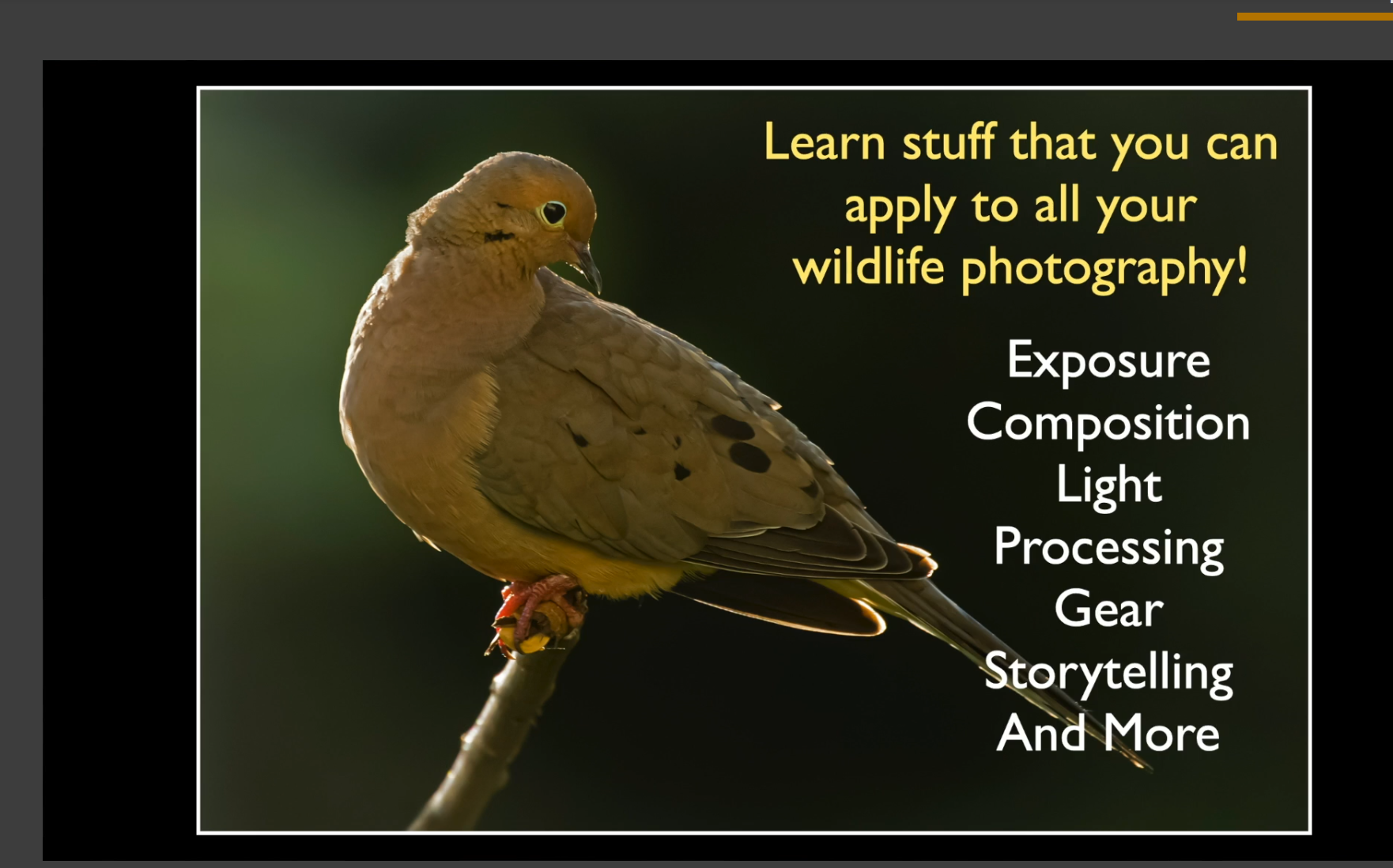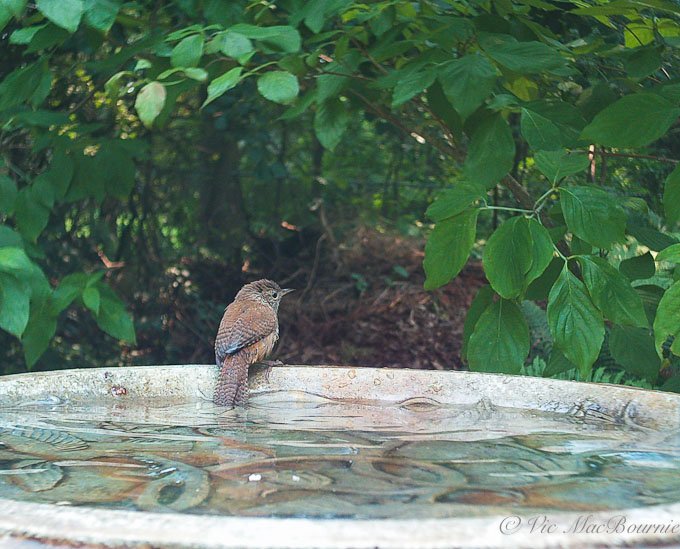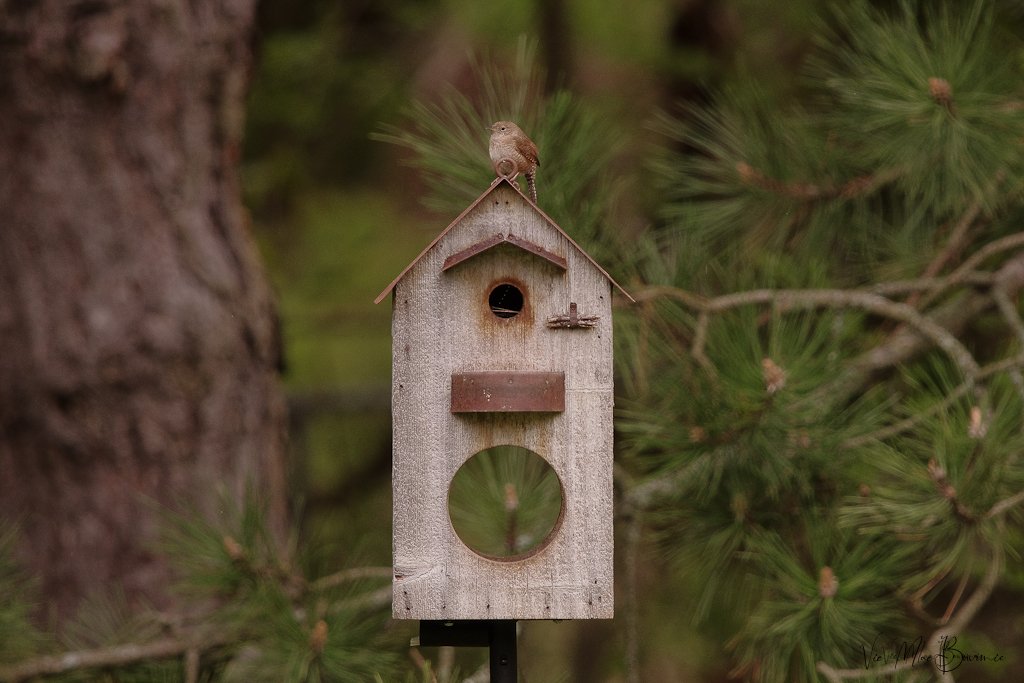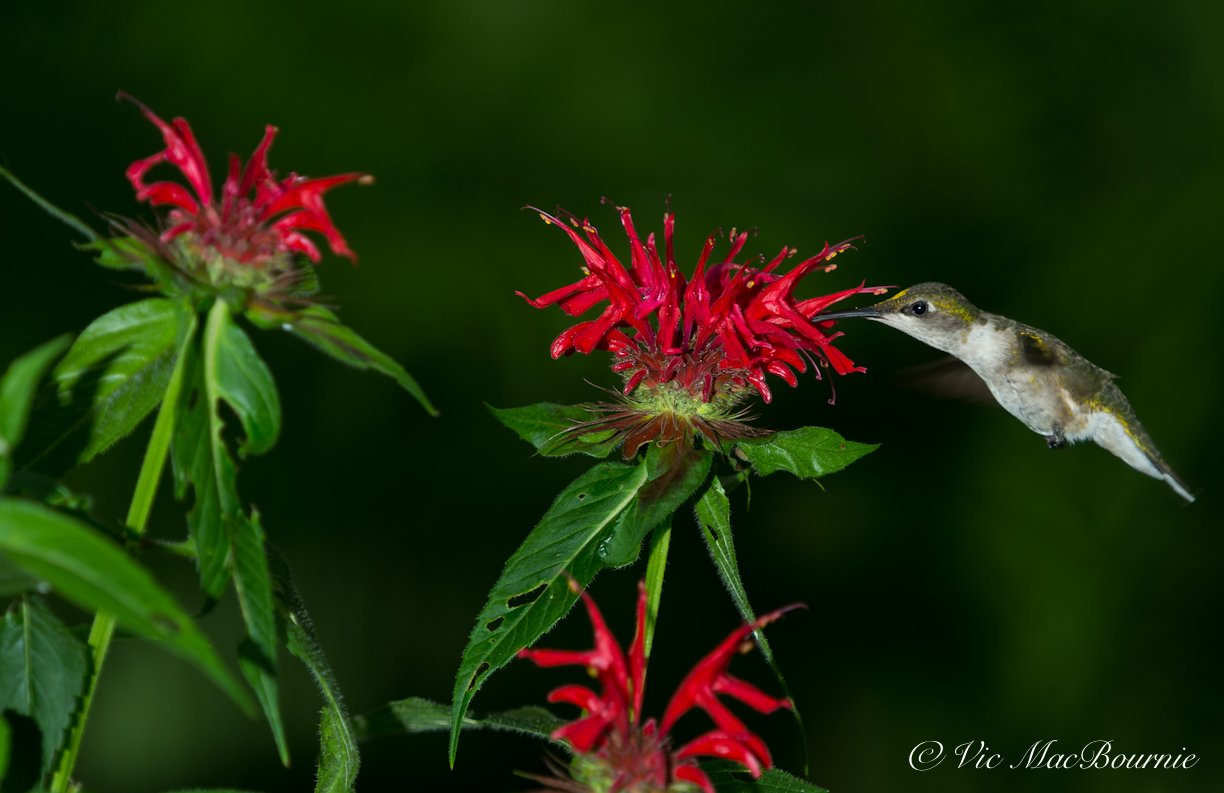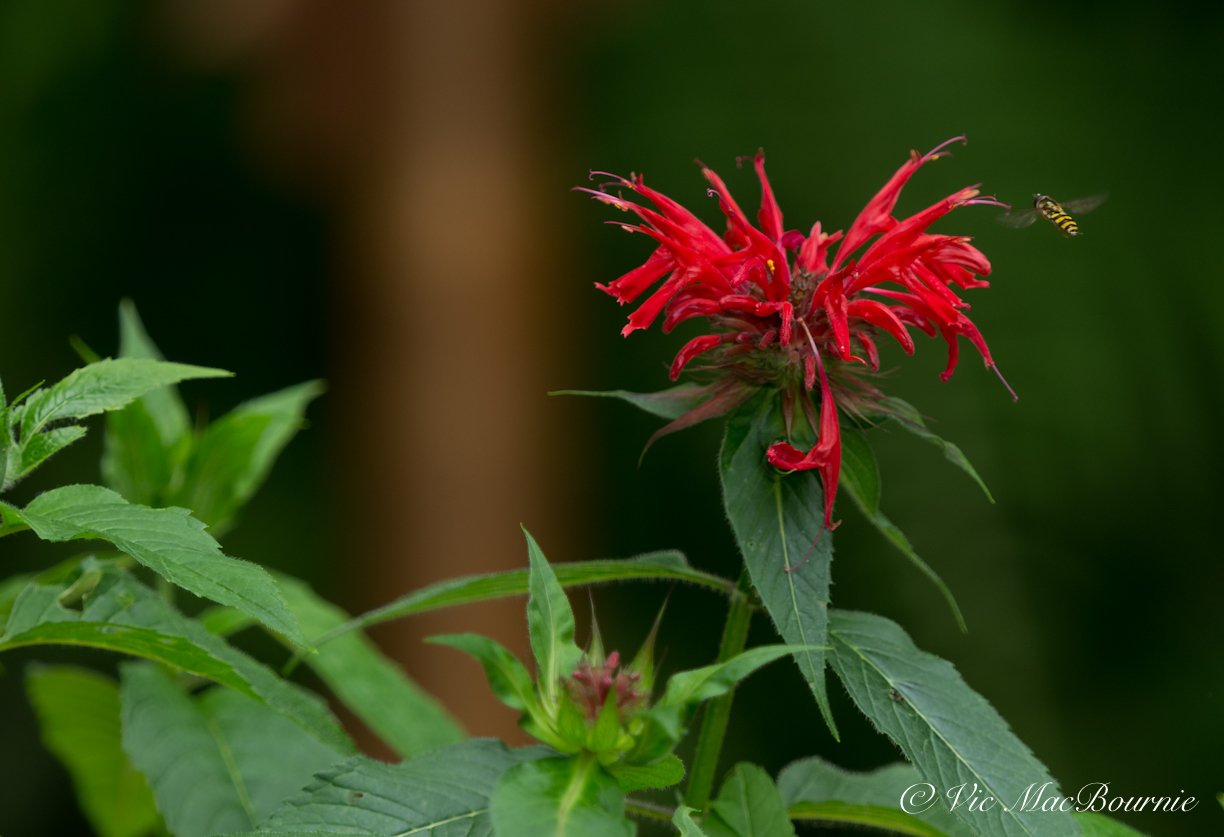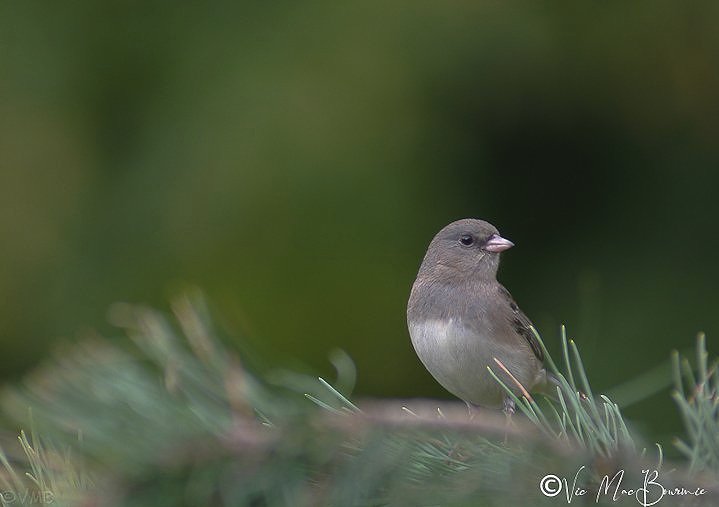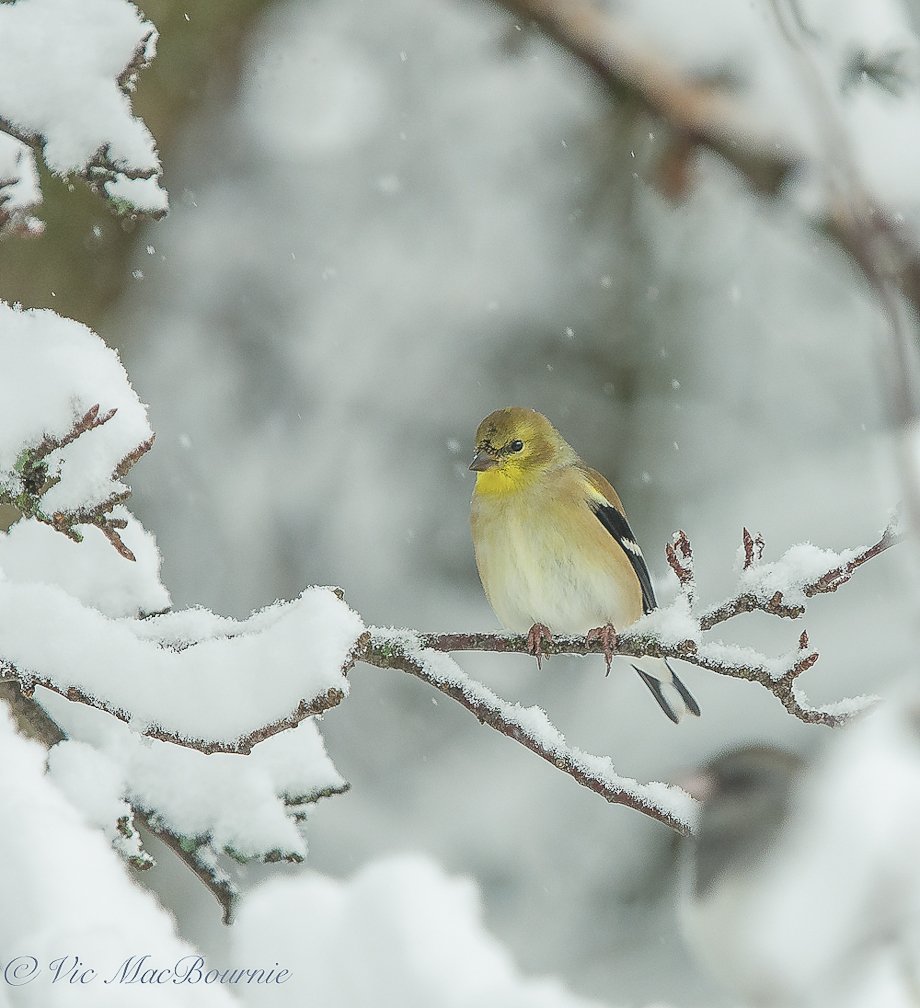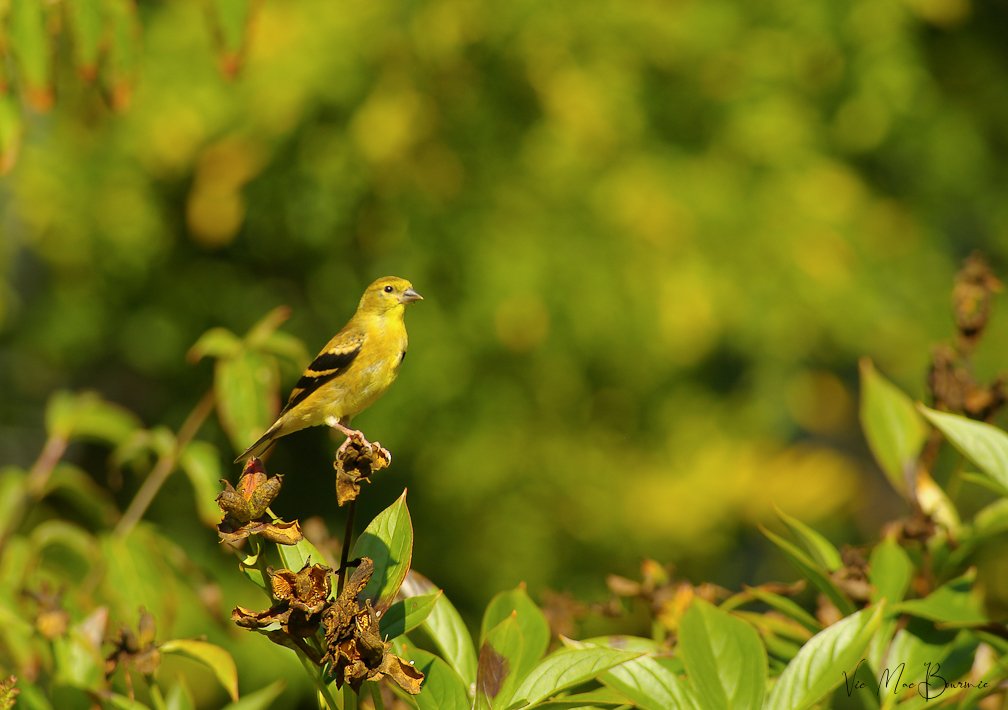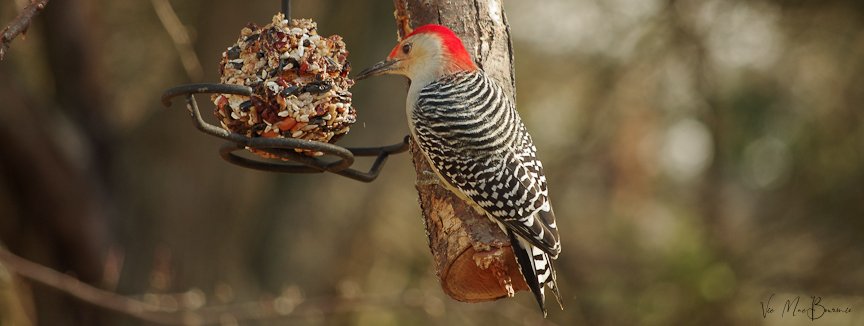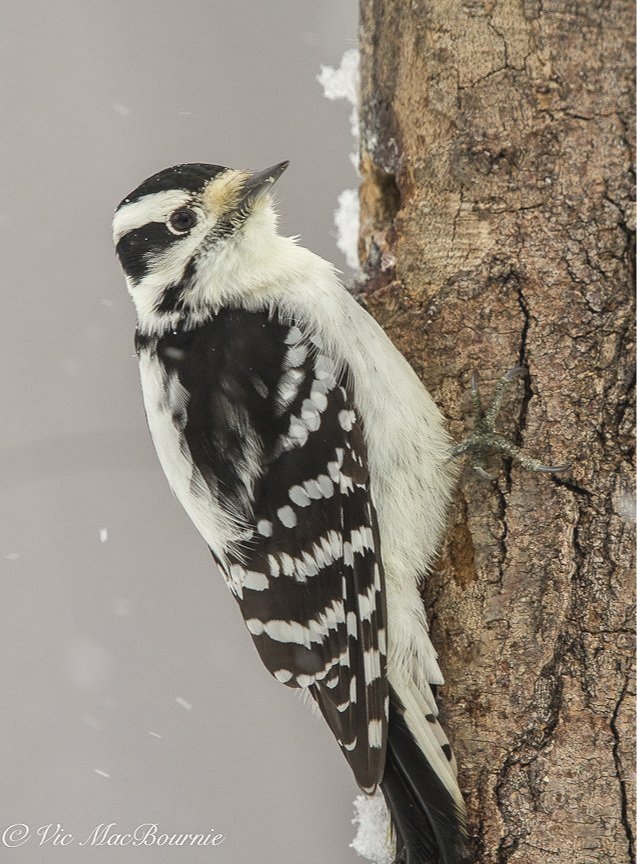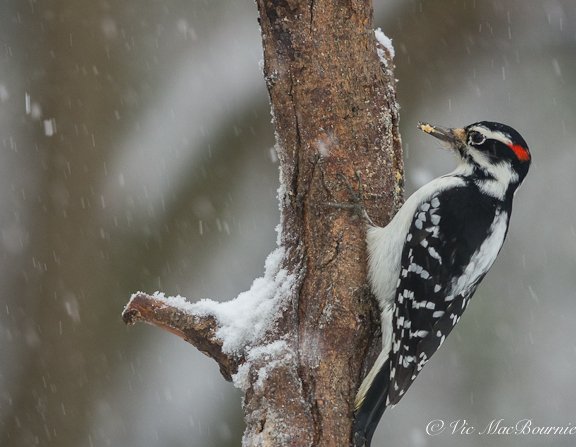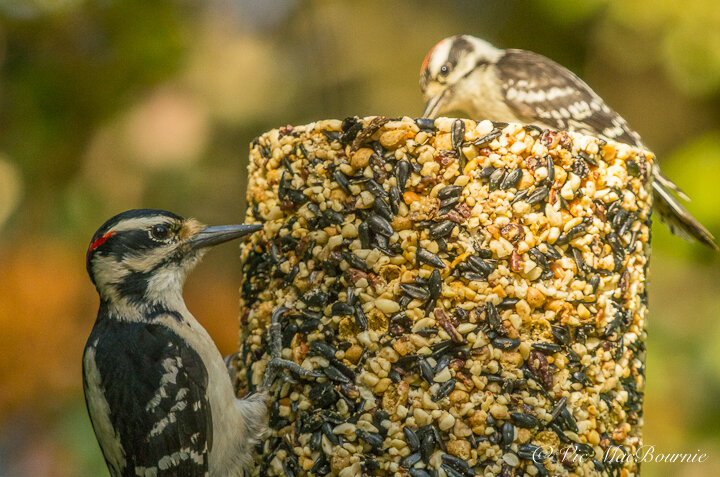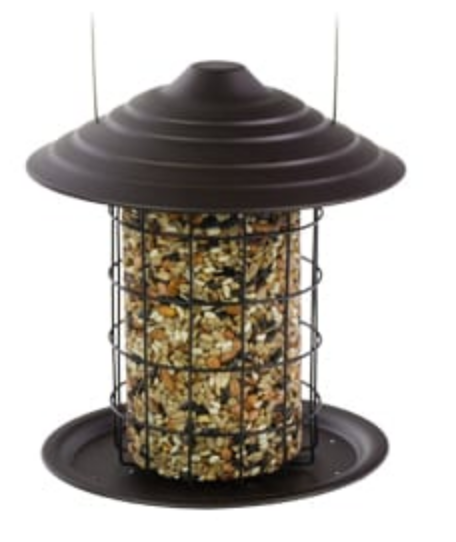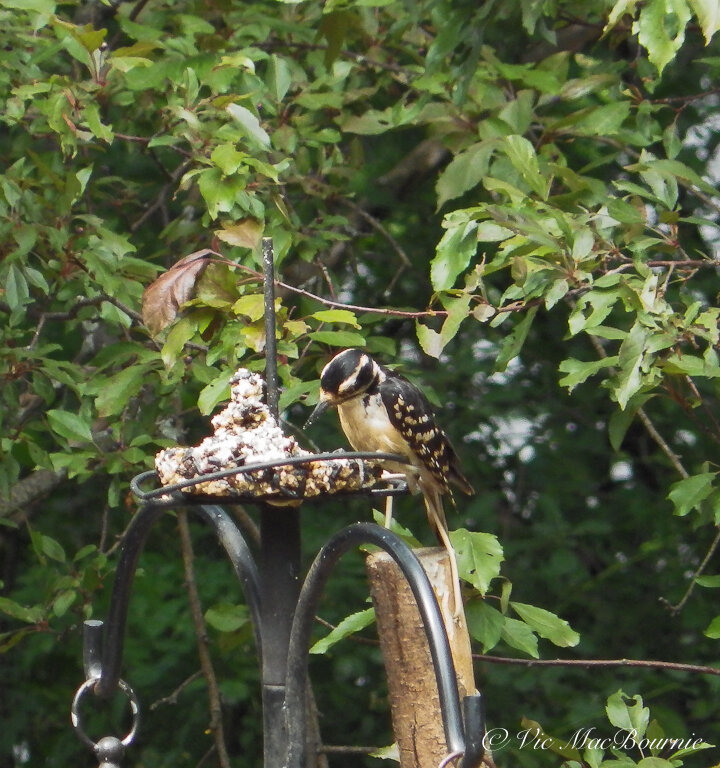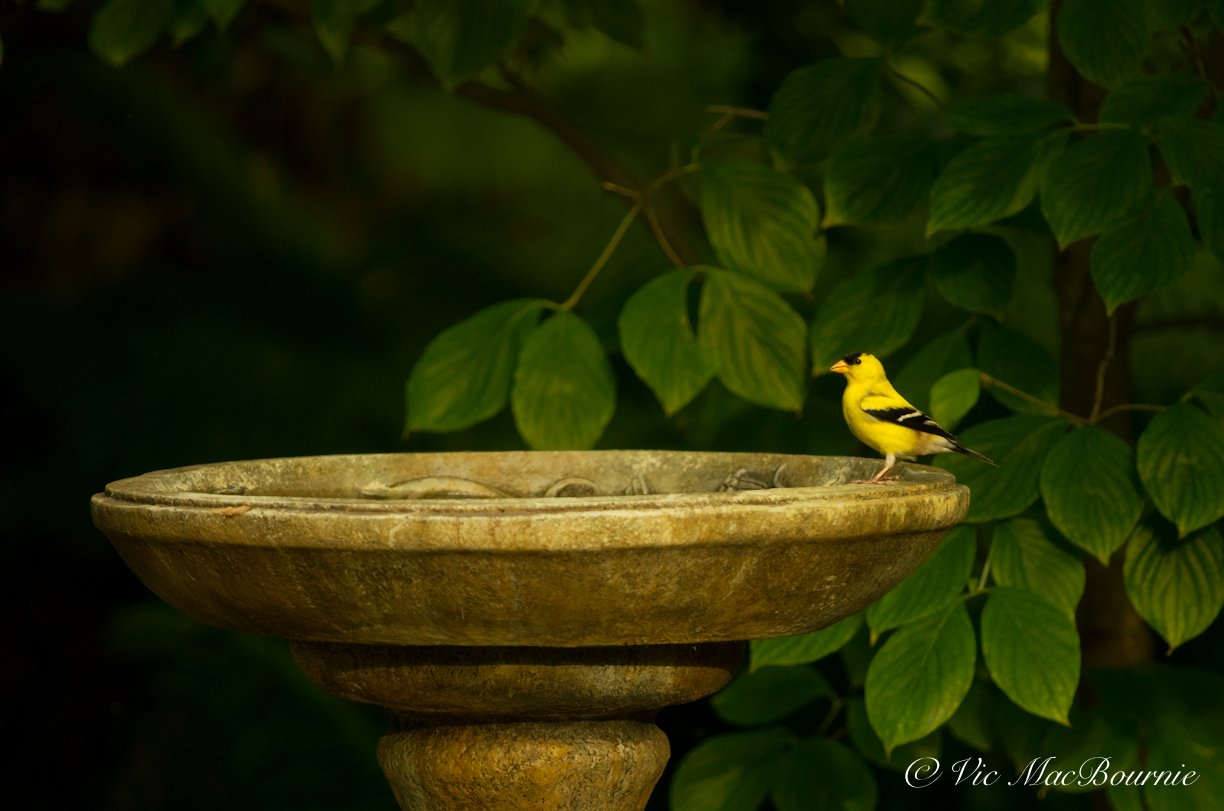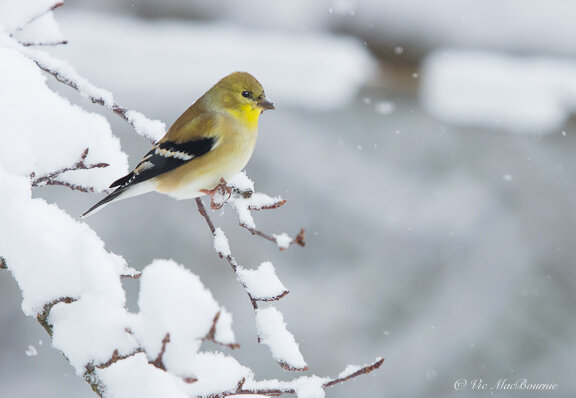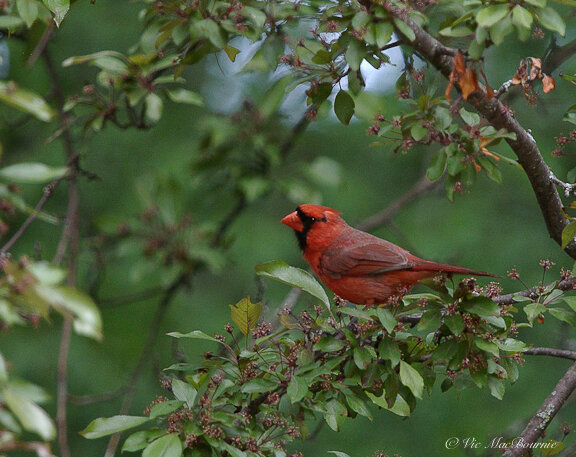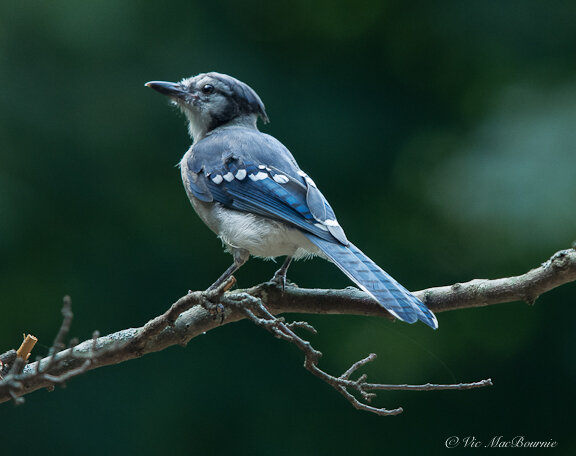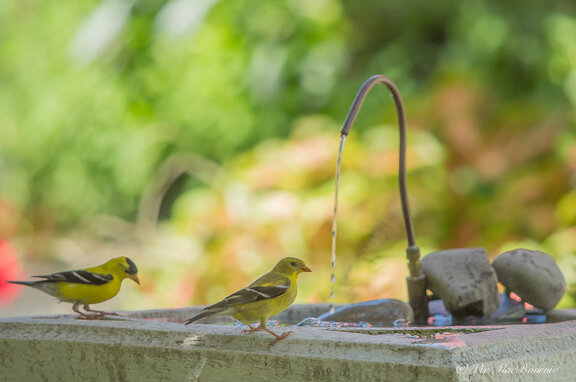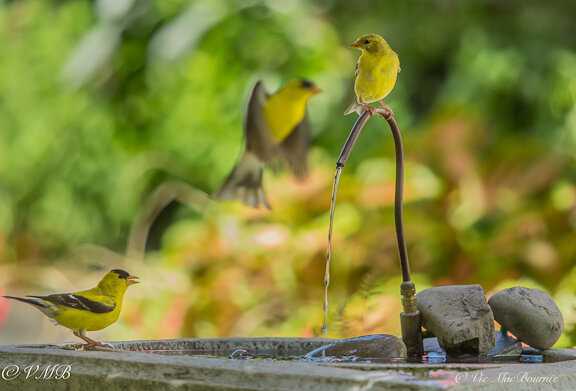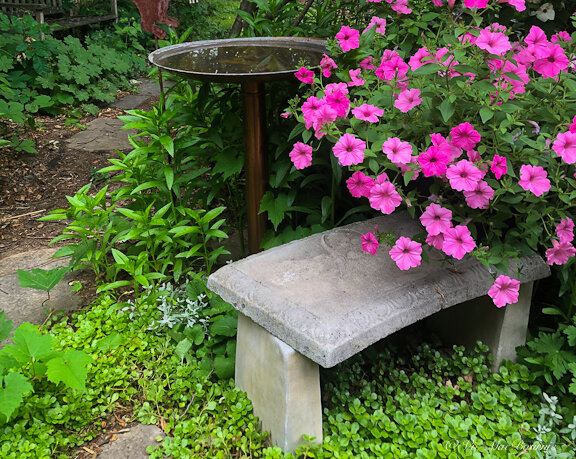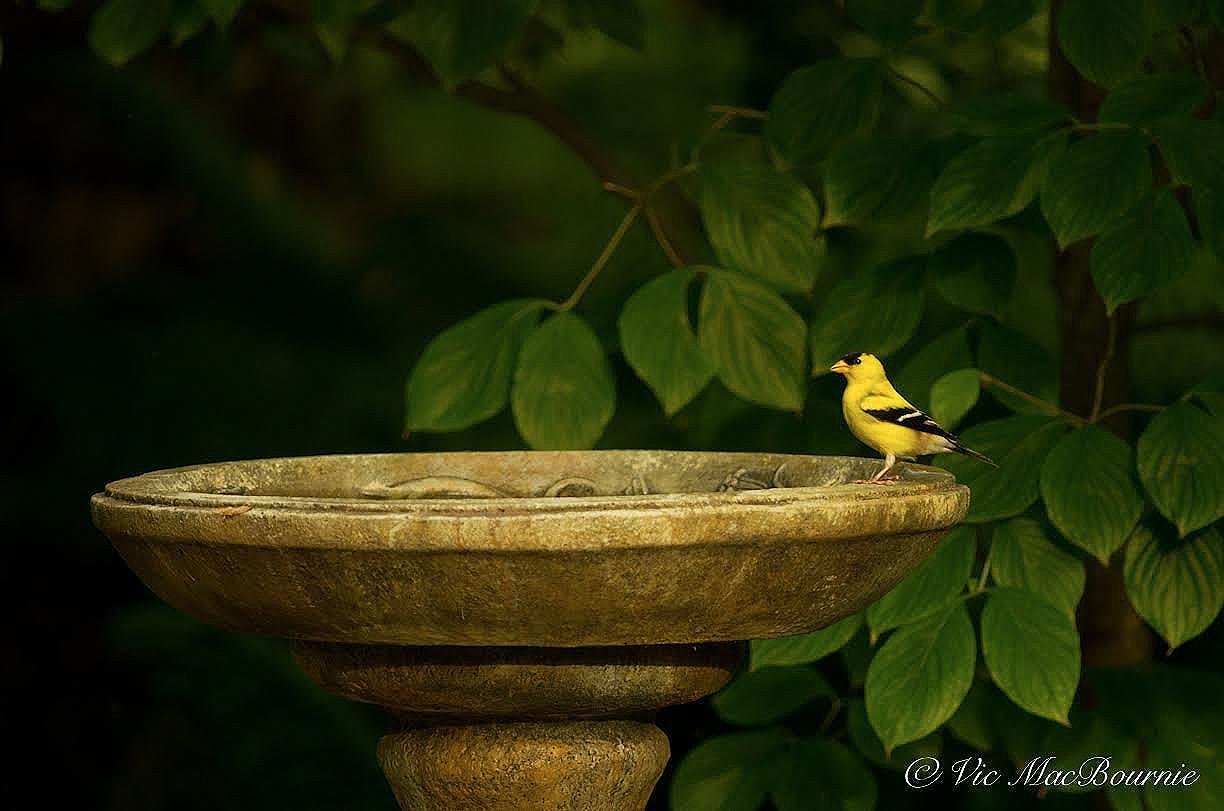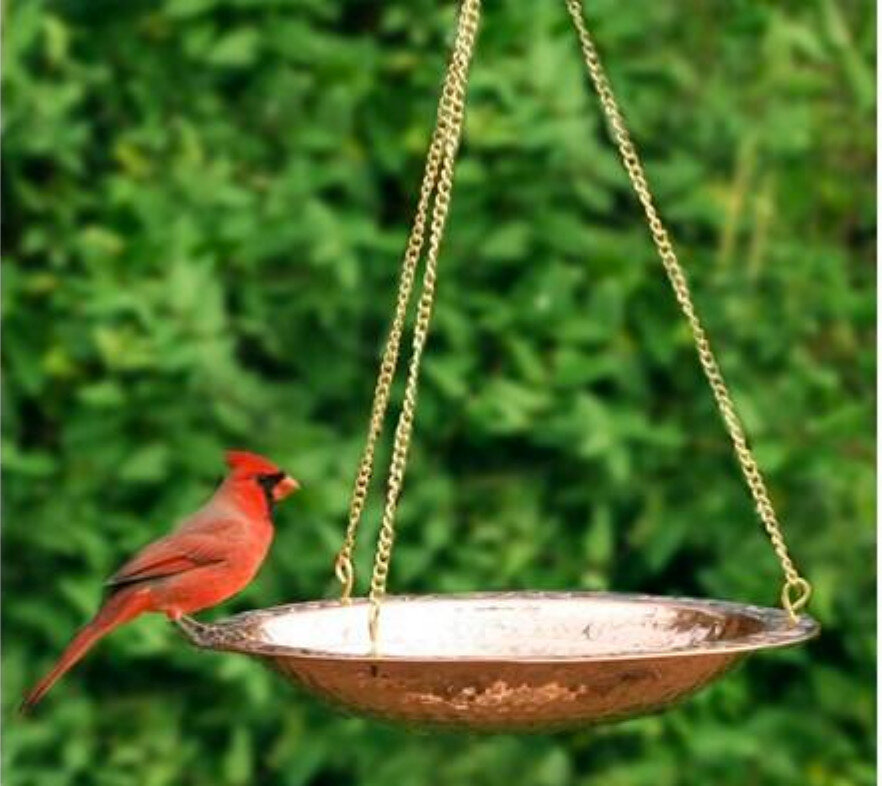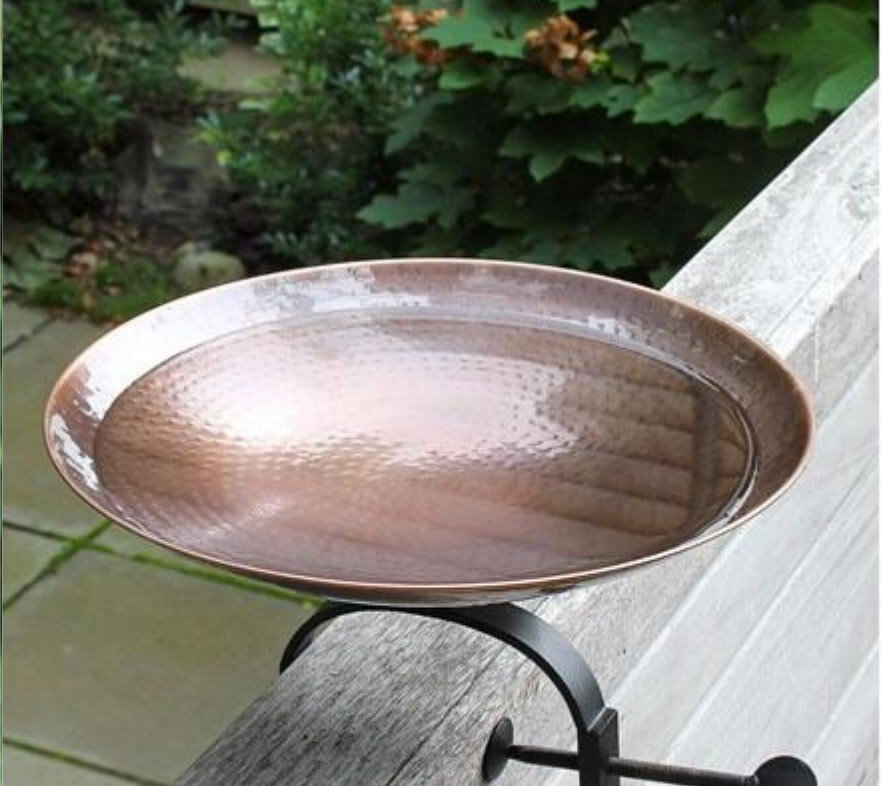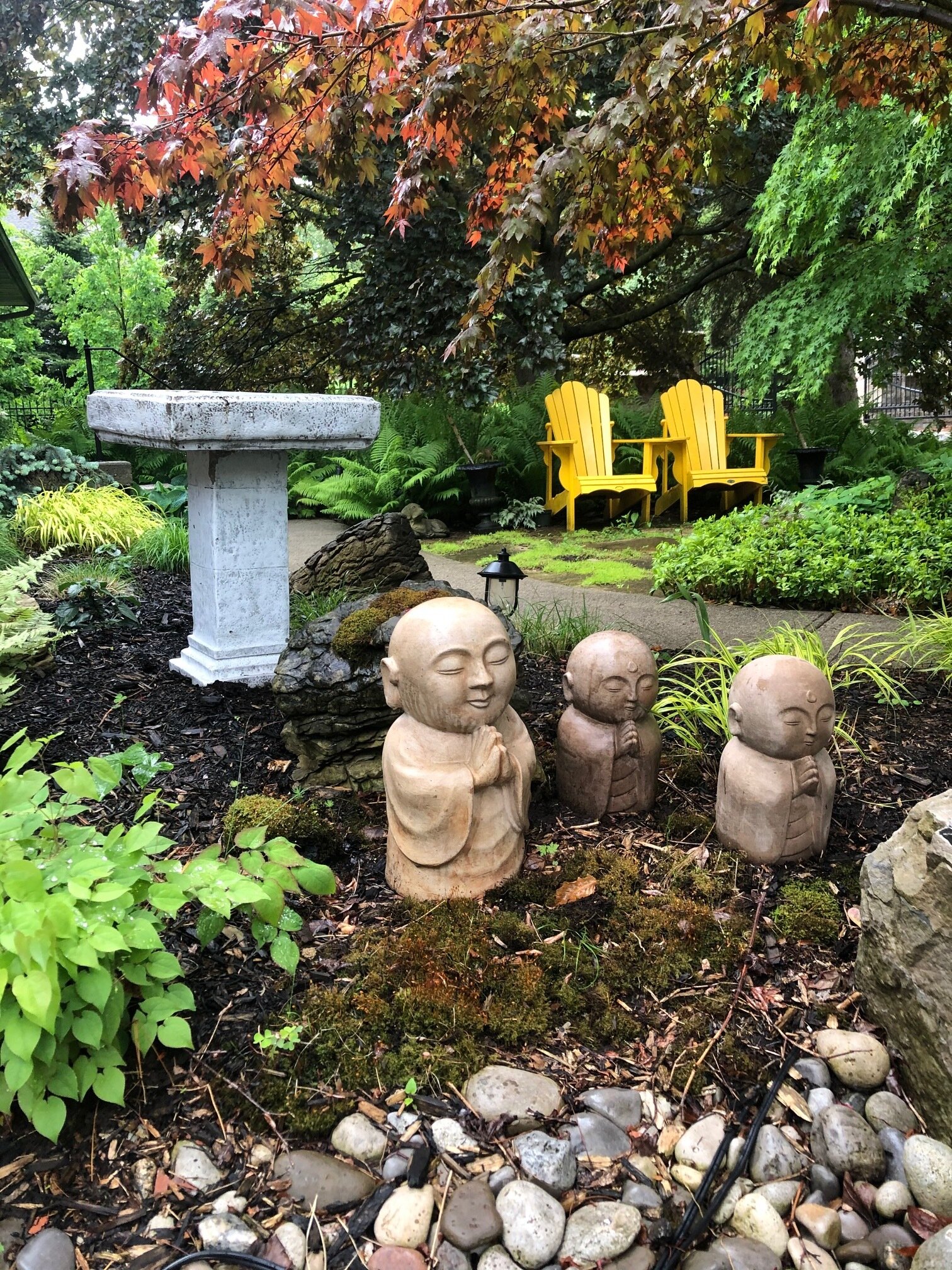Wildscape: Exploring the senses to live in peace in our gardens
Nancy Lawson, author of The Humane Gardener, explores how the senses come to life in our gardens both through our plants and wildlife.
Let natural sounds dominate our gardens
Nancy Lawson’s latest book, Wildscape, follows her highly acclaimed book The Humane Gardener building on the cornerstones of compassion and love for the fauna that make our gardens home.
If The Humane Gardener, was a plea for respect and compassion toward all species and a call for gardeners to welcome all wildlife to our backyards, Wildscape is a call to action for gardeners to recognize the problems humans are creating and how our actions are, in many cases, forcing garden wildlife to change natural behaviours to survive.
In her latest book, Wildscape (PA Press, Princeton Architectural Press, New York) Lawson explores the sensory wonders of nature and the incredible adaptations insects, mammals, birds, reptiles and amphibians are sometimes forced to make to survive and prosper in our gardens.
Take a moment to check out my comprehensive review of The Humane Gardener.
Lawson’s love and compassion for wildlife comes from a lifetime of helping wildlife. As a gardener and editor with the Humane Society for many years, her extensive knowledge of the relationship between fauna and plants in the garden comes honestly.
The 284-page book explores the senses of the garden donating a chapter to each sense. Beginning with scent in the garden and moving through the remaining senses from The Soundscape, The Tastescape, the Touchscape and wrapping up with the garden Sightscape.
For more on Wildscape, check out my reviews on:
• Cultivate your own vision of beauty.
The chapters are packed not only with her own fascinating observations from a lifetime of studying her own garden, but backed with extensive scientific evidence found through her wide-ranging knowledge and research into scientific and academic studies.
The results are not always encouraging. In fact, they can be downright depressing for those of us who care about the future of the world as well as the life in our gardens, the forests and woodlands around us.
The results, however, are certainly not surprising to anyone who is paying attention.
(Rather than write a single book review, I have decided that Nancy’s work is too important to not dive fully into each chapter. We’ll begin by focusing on Chapter 2 – the one that I think most gardeners fear the most. – The Soundscape.
How excessive noise affects our garden wildlife?
If you are one of the millions of people who, like me, are almost afraid to step outside in spring, summer and fall for fear of screaming, obnoxious, gas-powered leaf blowers, lawnmowers, grass edgers and the like, this book will help put your fears and frustrations into perspective.
In short, you have plenty to fear from your neighbour’s obsessive compulsion for the perfect lawn, the perfectly manicured edges and reliance on non-native flowers, shrubs and trees.
Unfortunately, those unnecessary gas-powered machines are not only destroying your summers, they are a direct attack on the survival of birds, animals and a host of fauna that are trying to survive in our gardens.
In her book Wildscapes, Trilling Chimunks, Beckoning Blooms, Salty Butterflies and other Sensory Wonders of Nature, Lawson doesn’t just write about the annoying noises, she documents how these loud, unnatural sounds in our gardens are disturbing the natural lives, reproduction and survival of our garden inhabitants.
How wildlife use sound to communicate in our gardens
Of course, it’s not all doom and gloom.
Lawson begins the chapter pointing out how being in the garden and recognizing the chorus of songs – from the smallest peeps of tree frogs to the sexual calls of insects helps bring the garden to life. She talks about how her own lack of hearing has forced her to listen more intently.
She also points out how many animals – chipmunks for example – depend on warning calls to keep the family safe. Lawson writes about frogs and toads communicating in through vocal calls and how insects depend on sound to communicate. The importance of sound – the ability to hear and communicate with it – is of vital importance in our gardens, as is the inability to hear it because other sounds such as machinery are masking the natural sounds.
Learning to listen to our garden visitors
Lawson writes about learning to listen to these sounds.
“The bench on the edge of our pond marks a border between two worlds. In front of me is a forest in the making, where brown thrashers churn the leaves, Carolina wrens snatch moths from midair, and red-shouldered hawks perch on tulip trees, waiting for their moment. Behind me is a land bereft, a carnage of stumps where, one after the other, nesting sites for bluebirds and owls have met their doom in the yards of neighbours who expand their own houses, but declare war on leafy green homes they’ve deemed too tall or too disruptive of their acres of turf.”
Wildscape (PA Press, Princeton Architectural Press, New York) explores the Sensory Wonders of Nature in our gardens.
“Eventually they’ll call in the hitmen to take out the last of the stumps too, leaving little left for the woodpeckers who feast on insects in dead wood and sending everyone else fleeing from the deafening roar of life being ground up. Noise often begets noise, and as trees disappear, so do nature’s buffers.”
Lawson goes on to explain that as the trees are removed, the sounds from distant highways begin spread over barren backyards, void of all but the smallest of ornamental trees and shrubs. She cites a study from the University of Georgia that showed Monarch caterpillars living beside busy roads became unusually stressed to the point that these docile beings actually became extremely aggressive due to the stress caused by the noise of traffic. Once it was removed, the stress levels returned to normal.
“I’ve often wondered how animals outside can get any good shut-eye at all,” Lawson writes before going on to write about a study in Belgium that showed traffic noise has significant negative effects on European songbirds, reducing how long they sleep and prompting them to leave their nest boxes earlier in the morning.
All troubling for the future of wildlife.
Gas-powered garden tools masking natural sounds
But nothing more troubling than the constant barrage of neighbourhood noise from gas-powered mowers, blowers and trimmers.
“Like physical illness, noise falls into two general categories: chronic and episodic. Noise pollution research has typically focused on the chronic variety, partly because it’s easier to study and partly because it’s so ubiquitous; most places in the United States are less than a mile from the road. As noise from other sources grows in volume and duration, with more homeowners hiring landscaping companies that deploy large crews of mower cowboys and leaf-blowing soldiers with machines strapped to their backs, the question becomes; at what point does the episodic become chronic, adding yet another layer of aural harm?”
Images of nature help to tell the story of how the senses play an important role in our gardens.
Little to no research exists on the effects of acute landscaping noises on our wild neighbours. But as Davis notes, if the occasional passing car emitting a seventy-five-decibel sound stresses out a monarch caterpillar, ‘It really makes you think: How many other stressors, are we exposing these caterpillars to in our daily lives?’
Lawson points out that, according to global analysis, migratory birds are now avoiding noisy areas.
“But what about the animals who must stay, with no other home to go to? Though wild birds can technically fly away, that’s not an option for nesting parents who can’t leave their young. I can afford noise-cancelling headphones, which help me work while neighbours saw down trees along the road and replace them with “This is Birdland” decorative flags to celebrate the Baltimore Orioles baseball team….”
“Just as noise begets noise, the songs of birds, frogs, crickets and grasshoppers can build on themselves too, drawing more wildlife back home. Together with a smattering of neighbours who also have started to hear the call of the wild and nurture habitat for them, we will try to turn this community into a real birdland – and a land for chipmunks, spiders, bees, trees, and peace-loving people too.”
What can we do to reduce noise in our gardens?
You can’t control your neighbours’ obsessive compulsive behaviours when it comes to creating obnoxious noise throughout the neighbourhood. You can’t do too much about them starting their gas-powered mowers and snowblowers as the sun is rising. They obviously don’t care about your feelings or the problems they may be causing to local wildlife. If they are waking you up, chances are they are waking the wildlife as well.
You can, however, do everything in your power to set a good example.
Invest in electric or battery-powered garden equipment and ditch the obnoxious, outdated gas-powered equipment. Eliminate as much grass as possible so that you can easily cut your grass with a much quieter electric or battery-powered mower. I often joke that I could cut my grass at 2 am and my neighbours would never know because my battery-powered Ryobi mower is so quiet.
Check out my comprehensive post on battery-powered lawn equipment.
After seeing and hearing my mower, my thoughtful neighbour purchased a battery-powered mower, and leaf blower. Now, I have to listen intently just to hear the whirring of the electric mower. I’m still waiting for our other neighbours to follow suit.
Respecting your neighbours goes beyond the human inhabitants – it should also extend to the wildlife.
Try to be a part of the solution rather than part of the problem.
How to attract the Mourning Cloak butterfly
The Mourning Cloak butterfly may look a little drab in its rough coat of brown and yellow, but it’s the butterfly’s ability to blend in with nature that helps to make it successful.
Host plants and ability to hide in plain sight is butterfly’s secret to success
It’s easy to overlook a mourning cloak butterfly. After all, it lacks the elegance of our swallowtails and the bright, colourful markings of our monarchs.
But don’t sell the Mourning Cloak short. Not only are they a tough, long-lived species, they can take the cold of even a severe winter and emerge the following spring.
The Mourning Cloak’s (Nymphalis antiopa) and the Camberwell Beauty’s (Britain), drab looks might just be the reason you are seeing it. In fact, it just might help these butterflies hide in plain sight.
They are often cited as the first butterflies of spring because rather than migrating like monarchs, these tough little guys do not participate in long-distance migration. Instead of migrating, research suggests that the mourning cloak butterflies overwinter in place.
Where does a Mourning Cloak overwinter?
If you are looking for another reason not to rake up your leaves and remove every fallen branch from the ground, look no further than the Mourning Cloaks. These butterflies rely on “antifreeze” chemicals in their blood to survive winter in cold climates, while they hide under bark, in woodpiles, under leaves and in rock crevices.
These butterflies are mid-size – smaller than monarch’s and swallowtails, but certainly larger than skippers and sulphurs. Although they are relatively common in most areas of North American and Europe, don’t be surprised if you are thinking that you don’t recall ever seeing one.
Unless you are paying attention to your butterflies, these ones can quickly disappear into nature once they land. Often mistaken for an old leaf, these guys are masters of disguise.
I have come across them in the garden and the only way I notice them is when I, by accident, scare one up into flight.
Where are Mourning Cloaks found?
This butterfly is native to North American and Eurasia. It has earned a reputation as a strong flyer and is often found during migration far from its more common range.
Not only is this butterfly present in abundance throughout all of the United States except Florida, its range extends up into the northern regions of Canada.
The Mourning Cloak is found in most environments including gardens, open woodlands, forest borders near streams and ponds.
For more on our native butterflies, check out my post on How to attract the Giant Swallowtail.
How long does the Mourning Cloak usually live?
There are lots of reasons for the butterfly’s success, not the least that it boasts one of the longest lifespans for any butterfly at an impressive 11 to 12 months.
In caterpillar form, you might know it as the spiny elm caterpillar.
What are the Mourning Cloak’s host plants?
Part of its success lies with the fact that, unlike monarchs and other butterflies that rely on a very narrow number of host plants, the Mourning Cloak is happy to use a large number of host plants to lay their eggs and raise their young in the form of caterpillars (bird food).
The growing importance and awareness of native plants in our landscapes has never been a more persuasive influence on what we should be planting. More gardeners are recognizing that butterflies need more than flowers to feed on to survive as a species. Equally important are the plants that the larvae need to live on before they emerge as adult butterflies.
Here is a list of host plants for the Mourning Cloak butterfly.
• Weeping Willow (Salix babylonica)
• White Poplar (Populus alba)
• Cottonwood (Populus deltoides)
• Black Poplar (Populas nigras)
• Alder (Alnus serrulata)
• Ironwood (Ostrya virginiana)
• Various Maple trees (Acer spp.)
• Sugar Hackberry (Celtis laevigata var. reticulata)
• Common Hackberry (Celtis occidentalis)
• American Elm (Ulmus Americana)
• Siberian Elm (ulmus pumila)
• Slippery Elm (Ulmus rubra)
• Hops (Humulus lupulus)
• Red Mulberry (Morus rubra)
• White Ash (Fraxinus americana)
• Common Pear (Pyrus communis)
• Carolina Basswood (Tilia americana)
• Sheep Sorrel (Rumex acetosella)
Why use a hanging bird bath?
A hanging bird bath is the perfect way to attract songbirds to your your garden by providing them a safe, discrete area to get a drink or a quick bath.
Do birds like to use a hanging bird bath?
A hanging bird bath can quickly become a favourite go-to spot for weary songbirds looking for a quiet secluded place to bathe or get a drink.
The very nature of the hanging bird bath provides some immediate protection for birds. It’s usually mounted high off the ground a safer distance from predators like cats or even foxes and coyotes.
The trick is deciding the best location to hang the birdbath.
Where should you put a hanging bird bath?
Unlike a typical bird bath, hanging bird baths can be tucked away in the foliage of a favourite tree or large shrub where the birds feel more safe and are able to fly to a taller branch for a quick getaway from most predators.
A hanging bird bath in a tree can also help protect songbirds from aerial attacks from predators such as hawks or owls who don’t see them hidden in the thick foliage or are unable to easily navigate through the tangle of branches to strike the songbirds.
But, for me, the greatest asset to using hanging birdbaths in the garden is the magic they create when hung in a tree beside my favourite sitting place.
I love being able to watch the birds fly onto a branch, make their way to the birdbath and either steal a quick drink or a bath all the while tucked away among the tree’s foliage.
Cardinals, Chickadees, the Tufted Titmouse, and Nuthatches are all regulars to the hanging birdbath. Our resident chipmunks sometimes sneak a drink as well.
Imagine what the birds are thinking when they first discover a puddle of water floating in their favourite tree, tucked away maybe even hidden in the tree’s foliage. It’s almost like they have found their own secret little garden oasis.
I like to put a small, fly-through bird feeder nearby or even floating above the bird bath to complete the perfect secret hideout for the birds.
Our hanging bird bath is tucked away inside the open branches of our mature yellow magnolia tree that overlooks the patio and is in line with my view into the garden. The bird bath sits beside a rustic birdhouse mounted to the tree’s trunk and a small fly-through ceramic bird feeder where they can stop for a sunflower seed or two before making their way to the birdbath.
In that small area is everything a songbird could ever want.
In fact, one of my fondest memories last year was watching a family of chickadees visiting the birdbath early in the morning as the sun rose behind them. The warm, rim light caught them perched on the edge of the birdbath taking turns drinking and bathing.
At the time, however, I did not have the camera by my side and missed the fleeting shot. The next morning I was ready with the camera and, sure enough, the chickadees returned for their morning baths providing me with a few minutes to capture them backlighted and celebrating a new day breaking in their secret garden.
Sitting and just observing the birds opens up a world of photographic possibilities. As the birds become accustomed to your presence, images like these become much easier and even predictable.
For more on adding bird baths to your yard, be sure to check out my other posts:
• Best bird bath for the garden
What are the best hanging birdbaths?
The best hanging bird baths are shallow enough to entice our smaller songbirds, with a rough enough surface to ensure they can get in and out easily and large enough to accommodate a couple of birds at a time.
Larger birds, such as Blue Jays, Mourning doves and Robins, tend to use the traditionally sized bird baths that are deeper, but will still come to hanging bird baths.
Also, larger birds tend to cause the hanging bird baths to swing more when they come in for a landing making them an uncomfortable spot for these birds when the more traditional bird baths are available. It’s always a good idea to have several different bird baths available to accommodate a variety of needs.
Our hanging bird bath is made from terracotta with a blue glazed ceramic bottom that prevents water from seeping through the terracotta base. The entire birdbath can be easily lifted off of the metal holder for quick cleaning. Three chains clip on to the metal holder and a large hook allows you to attach it to a branch or metal hanger.
The terracotta rim gives the birds a solid footing on landing, but the slippery glazed ceramic presents some challenges for birds who, I think, find the footing a little precarious at times. I like to put a small flat stone in the water to provide a comfortable spot for the birds to drink from.
Buy a hanging bird bath or make your own?
There are several commercial hanging bird baths to choose from. Look for ones that are easily tucked away in a tree or can be hung from a hook and would not break if battered around. This hammered copper hanging bird bath available at Amazon.com is an excellent choice. Besides looking great and aging beautifully, a copper bird bath has inherent anti-bacterial properties that helps to keep the water clean.
Other, less expensive examples include this simple terracotta coloured plastic tray also from Amazon. By adding a handful of pea gravel in the bottom smaller birds can feel safe.
This metal hanging bird bath is deep enough to double as a bird feeder say, during winter months.
If you are looking to add a beautiful piece of art to your yard, you might be interested in Evergreen’s beautiful Dragon fly motif glass handing bird bath. Evergreen on-line retailer of garden items, carries several different glass bird baths with various designs.
The dragonfly design features two light blue dragonflies making a whimsical statement against a green, yellow, and orange patterned background. This colorful hanging bowl, that can hold up to 3 cups of birdseed, can be used as either a birdbath or bird feeder. The bowl hangs from a metal chains that have a weather-resistant finish eliminating any worry about rust. The high-quality glass design, means it can be rinsed off for easy cleaning. Each bowl is approximately 14 inches in diameter and holds up to 32 ounces of liquid.
If you would prefer not to use glass in the garden, these elegant ceramic hanging bird baths from on-line retailer Vivaterra might interest you. Available in both Green and Blue, these unique ceramic hanging bird baths are embossed with a bird pattern giving it a charming detailed accent to your garden. The hanging baths provide the necessary depth for birds to bathe and relax comfortably.
Hanging bird bath is simple DIY project
Making your own is also not difficult. You can create a hanging bird bath as simple as drilling three holes into a plastic bowl and using copper wire and a hook to attach it to a branch, or tackle a more elaborate set up by creating a more natural bird bath decorated on the outside with branches and moss.
Another idea is to use an existing hanging basket. Plant up the edges of the hanging basket with lots of spillers, but leave the center open to insert a plastic bowl for the birds. The flowers should eventually hide the bowl from site. The combination is not only attractive, but it will create a potentially terrific outdoor photo studio where you can capture the birds bathing among the flowers and foliage.
Best Oriole bird feeders
Attracting orioles to your yard starts with having a high quality feeder that includes the ability to feed nectar, oranges and grape jelly.
Look for a high quality all-in-one feeder
Attracting Orioles to your backyard starts with giving these colourful birds a proper feeder that provides them with a variety of their favourite foods, including oranges, grape jelly and, of course, sugar water or nectar.
The best feeders provide areas for all three food sources, but there may be reasons to provide feeders that focus on one or two of the food sources at different times of the year.
In our yard, I use a number of different feeders – ranging from a simple nectar feeder similar to a hummingbird feeder, to DIY Jelly feeders and orange-half holders, to commercially bought Oriole feeders that hold nectar and a half orange to one that holds all three.
If you are buying a new feeder, I would probably aim for a feeder that holds all three – nectar, oranges and grape jelly.
However, this page of Oriole feeders from Amazon is a clear indication of how many styles of feeders are available.
These oriole feeders from Etsy show how many varieties are available and how easy some styles are to create as a DIY project.
These Oriole feeders from Maine-based Gardener’s supply are good choices as are these high quality Oriole feeders from the Canadian and American based Wild Birds Unlimited.
Where to locate oriole feeders
However, a feeder that provides all three of these foods might not necessarily prove to be very successful at attracting or encouraging the birds to return to the yard. Where the feeder is located in the yard, and how accessible it is to the birds can play an important role in the success of attracting orioles and keeping them coming back to your yard.
When you first put up the feeder, make sure that birds flying over head can see it. Tucking it away in a tree might seem like a great idea, but many of the migrating orioles will likely miss it and fly on by.
Hanging the feeder from a hook out in plain site is a good idea. You can hang it on your main bird feeding station, but Orioles generally prefer a quieter area, so finding a spot away from the busiest area of the garden is preferred.
More on attracting Orioles to your yard, on my earlier comprehensive post.
Once the birds find the feeder(s) however, I have found that they feel comfortable feeding with other birds around them. At this point, I might put up a feeder or start feeding oranges on my main feeding station in addition to the original feeder location.
I have had as many as 12 Orioles see image above) on our main feeding station working oranges, and grape jelly among the seed-eating birds like Blue Jays and Cardinals. The stylized steel branch is the perfect spot to hang additional feeders and the wire leaves is a perfect spot to stuff orange halves into for the Orioles.
Keeping them around and where do Orioles nest?
Orioles can be a little picky when it comes to setting up their summer homes. Remember, these are nest-dwelling birds that do not use bird houses or tree cavities. They create hanging nests fairly high in trees where they are safe from most predators. We had a pair nesting in a mature maple in our front yard one year. If you do not have tall trees nearby, you might have some difficulties keeping the birds around all summer.
Insects are key to keeping Orioles all summer
It’s also important to remember that orioles are primarily insect-eating birds. They are attracted to your yard with the oranges and grape jelly as a quick energy hit after a long migration, but will only stick around if there is an abundance of insects to feed their young.
With that in mind, you might also want to set out a dish of meal worms near their feeder to attract them and keep them around longer.
Your best chance to attract Orioles is spring migration
But that’s not to say that you can’t attract them to your yard during spring migration with orange halves, nectar and jelly.
If the feeding stations fail to provide the Orioles with what they need, they will often simply stop off for a quick meal and move on. And that’s okay too. Having these bright colourful birds around for just a few days in spring is still a joy.
That stay could just be for a few minutes to an afternoon or even a couple of days, but many of the birds will eventually move on.
If they do move on, don’t take it personally. It may not mean your feeding setup was not to their liking, but that their nesting site is traditionally farther north in their annual migration.
The key is to make your yard so enticing, that first-time nesting pairs and others choose your yard to set up their homes.
Oranges are your first line of enticement
In my years of attracting Baltimore Orioles to our garden, I have found that oranges are the best first impression to provide the birds to encourage them to your yard. After spending the winter in Florida and other warm climates where oranges are common food sources, it’s understandable why Orioles would recognize the orange halves at our feeders.
My first feeder did not come with a specific holder for an orange half. Instead, I simply insert the orange half over the steel rod that the feeder hangs from. This allows the Orioles to grip the rod and feed at the same time. Changing the orange halves to keep a fresh supply is easily done.
Many of the new feeders have spikes where the orange halves can be positioned. If you are buying a new feeder, make sure it has a location to display either orange halves, or orange quarters.
Don’t forget to stock up on grape jelly
If oranges are what attracts the Orioles to your yard, it’s grape jelly that keeps them coming back.
Our Orioles just love their grape jelly mixed with a little water. Our newest feeder even has three small reservoirs that are perfect locations to add a spoonful of grape jelly.
In the past, I created my own DIY grape jelly containers out of orange plastic caps from a food container that I hung near the main nectar feeders.
I soon realized, however, that the spent orange halves were also good containers to fill with grape jelly once the Orioles had finished with the oranges. The pulp in the oranges however, does absorb the jelly water making the halves short lived as an ideal feeder.
A small glass dish filled with grape jelly mixed in a little water is a favourite for our Orioles and it is easy to clean an refill on a daily basis.
One of our resident chipmunks took a liking to the nectar in the Oriole feeder this past summer.
Nectar is good for a burst of high-energy
One of the first feeders I purchased was a nectar feeder that looked like an orange-coloured hummingbird feeder. It has never performed that well for us in attracting Orioles, but one of our resident chipmunks sure took a liking to it last year. Everyday, the chipmunk would come and get its hit of sugar water from the feeder.
It enjoyed the nectar so much that it wouldn’t stop drinking no matter how close I got to it to get a picture.
Oriole nectar should be mixed the same as hummingbird nectar. Do not buy the store-bought nectar packages with the orange food colouring. Just mix 1 part sugar with 4 parts of water to create the nectar. I like to boil the water before using it to clear out any impurities in the water. I also find it stays clear longer if it is boiled.
There are lots of high quality Oriole nectar feeders that are available. This plastic feeder from Home Hardware is an excellent choice. Don’t be surprised if it also attracts hummingbirds.
Best Oriole feeder conclusion
There are so many high quality Oriole feeders available today that it is difficult to recommend one brand or style. In fact, if you are like me you probably have Orioles visiting your hummingbird feeders more than your actual Oriole nectar feeders. I believe that this is because the Orioles are more accustomed to seeing the red hummingbird feeders and know there is a treat waiting for them inside.
The fact that Orioles are attracted to our DIY feeders as they are the commercial varieties also says a lot about how picky they are or are not when it comes to their favourite food.
But providing them with oranges, jelly and nectar in one convenient spot is your best chance at making a first impression with these wonderful birds. If a combination feeder can get their attention, you can use more dedicated style feeders to keep them coming back.
There are feeders that take an entire jar of grape jelly that some have reported are excellent magnets for the orioles. I can’t help but think these also attract their share of bees and wasps to the sugary jelly. They may even get moldy if the jelly is not eaten quickly enough.
I have also seen beautiful handmade Oriole feeders available on Etsy that would make a lovely addition to your garden. Most of these are excellent secondary feeders that could be added once you have success attracting and keeping the orioles around all summer.
One last thing to remember, Orioles enjoy a dependable source of water as well. Don’t forget to ensure water is available.
One of my favourite series of images I was able to capture was a female Oriole bringing her entire brood of babies down to our on-ground bird bath for most likely their first bath. That was a frenzy of excitement for both the birds and the photographer (image above) and a reminder of why it’s worth the effort to attract these beautiful birds to your yard.
Bird feeders for sale: Cashing in on Kijiji and other on-line sellers
These bird feeders from Wild Birds Unlimited are a good example of the new recycled resin feeders available at a number of locations.
When it comes to bird feeders for sale, my best deals have come courtesy of on-line purchases.
Sure, there are some good buys from on-line sellers like Amazon, Wayfair and Gardener’s Supply Co., but my best buys are local purchases courtesy of Kijiji, Craigslist, Facebook Marketplace and other local on-line garage sale type sites.
It may take a little more effort to find these items on places like Kijiji and Craigslist and arrange for pickup, but anyone who is starting out in backyard bird feeding and are looking to save a lot of money getting started, would benefit from spending time regularly checking for items on Kijiji, Craigslist, other on-line garage sales and even local thrift stores.
It’s not unlike creating a woodland garden, time and patience is key to your success.
(For more on creating a budget-friendly garden check out my story here.)
If you are looking to set up a bird-feeding station, be sure to check out Setting up a Bird Feeding Station.
My latest Kijiji purchases are two excellent bird feeders – one a top-of-the-line Wild Birds Unlimited recycled plastic hopper feeder in perfect condition and the other a brand new three-tube copper-look feeder still in its original box. Both set me back less than $35 Cdn. – $19 for the Wild Birds Unlimited hopper and $15 for the copper feeder.
New from nature stores or birding stores, these feeders are double and triple the costs you pay on these on-line sites. I’ve even seen entire bird feeding stations with poles, hooks and feeders sell on these on-line sites for pennies on the dollar. I suspect it’s the result of people who try feeding the birds only to find that they are not interested or that the seed on the ground is attracting unwanted critters.
But we know how to deal with that problem. Check out my post for more on keeping mice and rats away from your feeders.
If you are looking to add to your arsenal of bird feeders on a budget, be sure to check out sites like Kijiji and Craig’s List regularly. These on-line sites are to birders, what thrift stores are to home decorators.
The Wild Birds’ Feeder alone, which has a lifetime guarantee, is more than $120 Cdn. brand new and worth every penny.
These are just the latest of a wealth of bird feeders, bird houses and other bird related products available on sites like kijiji that discerning shoppers can purchase at a fraction of the cost of buying new.
I strongly recommend purchasing the recycled resin bird feeders rather than wood ones. Take a moment to check out my full post on Why we should buy recycled resin feeders.
Kijiji, Facebook marketplace and Craigslist are really just on-line garage sales people use to sell items they no longer have a use for anymore. There are others as well. Many neighbourhoods have their own on-line marketplace where similar deals can be found. Local thrift stores are also good places to visit regularly to pick up garden and bird products on a budget.
These are perfect places to cash in on homeowners who, for some reason, have decided that feeding the birds is no longer something they are interested in continuing.
Maybe it’s the mess that bird feeding can create, the critters it may attract, or the expense of purchasing food that mostly goes to feed the local squirrel population that makes the sellers decide that this bird feeding hobby is not for them. Whatever it is, if you are willing to wait and check the listings regularly, there are often lots of choice available for those of us who have committed to feeding the birds.
In just the last year, I have purchased two bird feeders, two screech owl houses, a rustic bird house/feeder and three bird baths from sellers on Kijiji. I could have bought a lot more if I really wanted, but that’s a pretty impressive haul as it is.
In fact, these on-line garage sales are the first place I go whenever I’m looking to make a purchase. Although birding supplies seem to be in abundance, I have picked up everything from a large water pond container, and complete bubbling rock system (including the bubbling rock), to a nice little native White Pine tree from sellers.
Outside of gardening circles, other purchases include ipods, audio equipment, cameras, camera equipment, car parts and a truckload of square-cut blue flagstone that became an integral part of our garden structure.
A WBU classic hopper bird feeder for under $20
Back to my latest buy. If you are not familiar with Wild Birds Unlimited recycled plastic hopper feeders, you should definitely check them out. They are among the best feeders you can purchase and there were actually two of these feeders available on Kijiji recently when I looked.
These high-end feeders and similar ones are not impossible to find because of what I wrote earlier about new birding enthusiasts who lose their enthusiasm for one reason or another.
There are many reasons people decide to no longer feed birds. The couple I bought the feeder from told me they were moving and would not have a yard to feed birds any longer.
Without a doubt Wild Birds Unlimited products are among the best available. Products from nature and bird stores tend to be top notch but good buys are available on home made bird houses and bird feeders as well.
To make it even better, the heavy-duty, high-quality feeders made from recycled plastic are actually helping the environment by recycling plastic bottles.
In the words of Wild Birds Unlimited: “Imagine a wood-free bird feeder that actually looks like wood! Our EcoTough® Classic won’t crack, fade or rot and has a lifetime guarantee. The Classic has curved ends so you can see birds feeding on both sides at the same time. Perch drains allow seed to drop out of the feeder for ground-feeding birds to eat, and angled perches let empty seed hulls be blown away by the wind. The removable screen bottom is treated with EcoClean® Antimicrobial Product Protection, providing 24/7 product protection. EcoTough® feeders and houses are environmentally friendly, high quality products that are made from recycled plastic milk jugs. These feeders and houses prevent used milk jugs from making their way into our landfills.
To check out Wild Birds Unlimited feeders go to their website here.
Triple-tube feeder delivers for a variety of birds
Anyone who is a regular Costco shopper knows to grab the deal while you can because it will not likely be there on your next visit.
That’s exactly what happened to me when I passed on a beautiful triple feeder several years ago. On my next visit to Costco, I strolled through the doors – cash in hand and eager to buy – only to discover that model was sold out and replaced by a similar looking feeder, but one that sported only a large, single feeder tube. I bought that one and have used it for years. Unfortunately, it’s beginning to show its age and it’s almost time for a replacement.
So, when I saw the triple tube feeder, still in the original box for a fraction of the cost of the original, I snapped it up.
Who says you can never get a second chance?
The triple-tube feeder really delivers when it comes to attracting a variety of birds.
Unlike the single-tube feeder that can deliver only a single food source, the triple tube can provide, for example, a finch blend, a tube of highly desirable black-oil sunflower and maybe a general no-mess blend. The mix can change depending on the season and, of course, during migration when white prosso millet can be offered in one of the tubes to attract Indigo Buntings.
The result is a greater variety of backyard garden birds.
And isn’t that what it’s all about.
While I get great enjoyment from my bird feeding stations, providing natural food sources to our feathered friends is always the goal we should aspire to in our gardens. I have written a comprehensive post on feeding birds naturally. You can read about it here.
More gardening on a budget links
Ten money-saving tips for the weekend gardener
DIY Bark Butter feeder for Woodpeckers
DIY reflection pond for photography
Click & Grow is ideal for Native Plants from seed
Remove your turf and save money
Hiring students to get your garden in shape
• As an affiliate marketer with Amazon or other marketing companies, I earn money from qualifying purchases.
Bird seed: Complete guide to attracting favourite backyard birds
Choosing the best bird seed to attract specific birds to your garden starts with knowing what seed they like and using the proper feeder. Black oil sunflower seeds are a great start but other seeds will ensure you attract the greatest variety.
How to choose the best seed to attract a variety of birds
If you are looking to attract specific birds to your backyard, providing them with their favourite bird seed will go a long way toward your success.
First, it’s important to learn what seed your favourite birds prefer in your area and then find a good reliable source of fresh seed to provide them.
When in doubt, use straight black oil sunflower seed. It is by far the best overall seed to feed backyard birds. But you may miss out on some of the best birds if you stick to straight black oil sunflower seed.
Don’t make the mistake of using a general, inexpensive bird seed mix from your local department store – many of these blends are full of filler that birds will only spill to the ground.
Milo – a small, round whitish grain – is most often used as filler in inexpensive mixes.
There is nothing wrong with milo. It will not harm birds, but it is not their preferred choice and often ends up on the ground. If you either see a lot of milo in the seed mix, or it is listed as one of the primary additions in the mix, it’s probably best to avoid that seed mix.
The result of too much filler is, at best, a mess under the feeders, and, at worst, an invasion of mice and rats filling up on the discarded feed. (More on keeping mice and rats out of the garden.)
Millet is a good choice for ground foragers
Don’t mistake milo for millet. They look similar, but millet in small quantities is favoured by ground-foraging birds like Juncos, sparrows and mourning doves. It’s still probably best to leave it out of the feeders, but throwing a handful on the ground or in a platform feeder is a good idea.
By keeping the above tips in mind, there are blends at your local department stores that are good, but just recognize they come at a higher cost than the cheap mixes.
You are better off feeding the birds less with a high quality seed mix than filling the feeders with a low quality mix that results in problems and eventually stops you from getting the full enjoyment out of feeding your backyard birds.
It’s also important to realize that birds do not count on our seed to survive. They are quite capable of looking after themselves and their families.
Studies have shown, however, that birds – especially chickadees and other regular visitors to our feeders – do better if supplemental bird food is available.
It is our responsibility to ensure that feeding the birds in our yards is not detrimental to their health. Keeping the feed fresh and the feeders clean should be a top priority.
More reading: Why recycled resin feeders are better than wood feeders.
Black oil sunflower: The best all-round choice
If in doubt, a good quality black oil sunflower seed is an excellent all-round choice that the majority of birds will readily eat.
Black oil sunflower is favoured by most birds because the seeds – in comparison to the common striped sunflower seeds – have a higher oil content, are easier for small birds to handle and are more nutritional for backyard birds. The black oil sunflower seed is extremely high in protein, as well as fiber, calcium, vitamin b-complex, vitamin e, potassium and iron.
They are favoured by our colourful Northern Cardinals, Evening grosbeaks, Blue Jays and House finches, in addition to chickadees, nuthatches, Tufted titmice, Mourning doves, grackles, Gray catbirds, Pine siskins and a host of others.
How to attract Cardinals to your feeders
Most birders enjoy seeing both male and female cardinals at our feeders.
If you are looking to attract these colourful but somewhat shy birds to your backyard, consider providing them with a large hopper feeder filled with a combination of safflower and black oil sunflower seed both in an out of the hull.
By leaning more heavily on the safflower seed, other birds will focus on a feeder filled with black oil sunflower and leave the safflower for the cardinals.
Safflower is a top seed choice for attracting cardinals. One of its other benefits is that it discourages squirrels, grackles and even sparrows from feeders because they dislike safflower seeds.
The small white thin-shelled seed is readily eaten by cardinals, nuthatches and chickadees.
A good mix will attract the greatest variety of birds
Feeding only the small black oil sunflower will limit the type of birds that are regulars at your feeders.
It’s important to offer a variety of seeds to attract the greatest variety of birds.
Compressed seed cylinders have always been a popular choice in our yard. They are available in a number of different mixes including ones that have meal worms compressed in with the seed mixture. Check out my full story on compressed seed cylinders.
Specialized bird or nature stores will even create specialized mixes for different times of the year (winter, summer, spring and fall), for different habitats (woodland, rural, urban, town and country.)
If done well, these mixes can be especially helpful to attract the birds that are in your area either year round or seasonally.
Wild Birds Unlimited, with stores across the United States and Canada, offer seven primary blends ranging from No-mess blends, to a deluxe blend, supreme blend, tree nut blend, finch and wildlife blends. Individual stores may offer further blends developed for birds in a particular geographic area.
Canada’s Urban Nature Store (link to store website) (Amazon.ca link) also offers a host of blends as well as straight seed.
The Kaytee brand of wild bird seed available at Amazon and elsewhere also offer a high quality seed and variety of quality mixes.
Nyjer or thistle seed is a favourite of Goldfinches
There is no question that Goldfinches are attracted to Nyjer or thistle seed, but only if it is fresh and of high quality. Nyjer/thistle seed that is past its prime, or worse, beginning to get mold growing on it, will be ignored by the birds.
But that may not be the only reason the birds are ignoring your thistle or nyjer seed.
Nyjer/thistle seed can be tricky. The seed actually comes from India and is part of their thistle plants. Before the seed can be imported into North America or parts of Europe, the seed must be cooked. Over cooking the seed removes the protein and makes them useless for birds.
If you notice that the finches are not eating your Nyjer seed, chances are it’s either well past its prime, going moldy or was over cooked in the factory prior to packaging.
If you notice the birds are not eating your Nyjer seed, don’t waste your time, purchase a new supply of Nyjer for your feeder.
You are much better off buying smaller amounts of nyjer seed and using it as quickly as possible rather than buying a large bag and storing it for prolonged periods of time.
It is important, therefore, to ensure you buy seed from a reputable seller that moves a lot of stock. Purchasing Nyjer at your local department store may not be the best idea. The seed may have been sitting on the shelves for months before you purchased it.
No-mess mixed seed is a solid choice
I have found that using a no-mess mix heavily weighted with shell-less sunflower seeds is the best choice as the primary food source for birds in the backyard.
It’s expensive, yes. But it has so many benefits that overpower any negative factors around price that it is my go-to seed choice for our recycled resin hopper feeders.
By using less food, and the fact that none is wasted and left on the ground, I feel it is the best value in the long run.
Consider adding in a couple handfuls of shelled black-oil sunflower to make the no-mess seed stretch further.
Birds will most likely store the shelled sunflower seeds in tree bark away from the feeder so it is unlikely to build up on the ground below feeders.
Final thoughts on best bird seed
First, let’s agree that feeding birds can be expensive. It gets even more expensive when most of that seed goes to feeding squirrels, raccoons, mice and rats.
Preventing animals from getting up to the feeders and the feed from getting down to the ground is critical to keeping costs down and deterring these animals.
Using a high quality food that birds will not waste or throw to the ground is an investment worth making. A no-mess mix is an excellent choice and by adding black oil sunflower seeds to your liking you can reduce the overall cost.
Most important, the high quality seed will attract the birds you are trying to bring into the garden and add to the joy and excitement you were hoping for in the first place.
Take the time to find a good source for seed and don’t over feed them to the point that the seed sits for long periods in the elements.
The best and most economical way to feed birds is the natural way through properly landscaping your yard using native flowers, shrubs and trees that include seed, berries, fruits and nuts.
If you are interested in moving in this direction, check out my comprehensive post on using native plants to feed birds.
Over time you can use bird feeders as nothing more than a supplemental feeding station to attract very specific birds.
Happy birding.
How to attract Red-bellied woodpeckers to your woodland garden
Red-bellied woodpeckers are woodland birds that have made their way into backyards across the south and into northeastern United States up into Canada.
Identifying Red-bellied woodpeckers can be tricky
The Red-bellied woodpecker is a regular at our bird feeders thanks to one special food source and a delivery system that keeps it coming back throughout spring, summer, fall and, especially, winter.
This woodland species is an attractive, medium-sized, black-and-white barred woodpecker with a name that might suggest a bright red belly shining for all to see but, in reality, the red on the belly is a barely perceptible hint of reddish orange tucked closer to the bird’s rump than its belly.
Given that the splash of red on the birds’ belly is barely perceptible, you could be forgiven if you wonder how this bird even got its name.
This hidden patch of red on its belly is the primary reason the bird is often misidentified in the field by new birders expecting to see a big bright red belly similar to that of an American Robin.
Even trying to identify the males from the females is quite difficult.
The main difference is that the males have a red crown and nape on their heads, while the females only have the red nape and lack the red crown. (In other words, only the males have the bright red head patch from their foreheads to the base of their neck. Females have red only on their neck. See images below to see the differences between both male and female Red-bellied woodpeckers.)
Red-headed vs Red-bellied woodpeckers
This flashy red on the Red-bellied woodpeckers’ rounded heads often leads to a further misidentification with the Red-headed woodpecker.
The vibrancy of the Red-bellied woodpecker’s head may have originally resulted in them taking the name “red-headed” if it was not already taken by its fellow, even more impressive, red-headed cousin.
The red-headed woodpecker is actually quite rare in comparison and sports a complete, almost blood-red head and solid black body with white tail feathers and a bright white breast.
The red-bellied woodpecker is also easily mistaken for a Hairy Woodpecker, which is about the same size.
For more on identifying different woodpeckers, check out my earlier post here.
How big is the Red-bellied woodpecker?
The Cornell Lab of Ornithology describe the Red-bellied woodpecker’s size as somewhere between an American robin and a common crow.
The Northern Flicker, which share some of the same characteristics but is more buff in colour, is slightly larger than the Red-bellied woodpecker.
Both the male and female red-bellied woodpecker measure about 9.5 inches (24 cm) long, and weigh in at between 2.0-3.2 oz (56-91 g). Their wingspan stretches out to between 13.0 and 16.5 inches (33-42 cm).
Red-bellied woodpeckers are happy to feed from the common hopper-style feeders, but they much prefer the large seed cyclinders of compressed peanuts and sunflower seeds that sit on top of our bird-feeding station.
How to identify Red-bellied woodpeckers
When trying to identify these birds, it is probably better to focus on the banded, zebra-like pattern on their back, instead of looking for their faint reddish splash of colour on their bellies.
Both the male and female have sturdy, thick black bills that are excellent for drilling for food in the bark of hardwood trees. Their legs and feet are gray.
What is the range of the Red-bellied woodpecker?
These birds may be common in the eastern woodlands but they are actually birds of the southeast regions stretching down as far south as Florida. According to studies, in the first half of the 20th century, this bird was declining in its more northern limits.
More recently, however, the Red-bellied woodpecker is actually expanding its numbers farther into the north reaching the southern limit of eastern Canada including Quebec and even Newfoundland, where they are more rare.
Backyard bird feeders are often cited as a main reason for this expansion northward.
Red-bellied woodpeckers numbers are reported as stable and in the range of about 10 million breeding birds.
These birds are more or less resident birds that do no not migrate any great distances. Reports show that some birds may move to a more northerly location in fall and remain through winter.
What is the oldest Red-bellied woodpecker identified?
The oldest known woodpecker was a male found in Georgia where its band indicated it was more than 12 years old.
Most of the woodpeckers, however, do not live more than 11 years with a range of between 4-11 years depending on the type and their range.
Most of the Red-bellied diet consists of insects and spiders, but when insects are more rare, they are also happy to dine on other foods, including seeds, berries and fruit. In fact, during some seasons they eat up to 50 per cent seeds (including pine cones and acorns in the wild).
In the fall and winter they will also eat plenty of fruit such as wild grapes and other berries that remain on the trees and shrubs throughout the winter.
It’s always a good idea to include berry- and fruit-producing trees and shrubs to provide natural food for backyard wildlife.
(Be sure to check out my complete post on using native flowers, shrubs trees and vines to feed birds and other wildlife.)
What do Red-bellied woodpeckers eat in our backyards?
In our backyard, the Red-bellied woodpeckers are quick to come to the feeders to fill up on sunflower seeds and peanuts.
Red-bellied woodpeckers are happy to feed from the common hopper-style feeders, but they much prefer the large seed cyclinders of compressed peanuts and sunflower seeds that sit on top of our bird-feeding station.
I purchase the cylinder specifically labelled for woodpeckers and they seem to do the trick.
A dish of dried or live meal worms will certainly help get their attention and compressed seed cyclinders that include meal worms, berries, nuts and sunflower seeds are always welcomed by these noisey birds.
These large cylinders are by far their favourite, not only for their easy source of seeds, but for the ease that the birds can get at the food.
The cylinders provide a very natural perch for the woodpeckers to take advantage of their large beaks to extract the seeds.
Sitting in my Tragopan photographic blind watching the woodpeckers working the seed cylinder is fascinating with bits of seed flying in all directions. The cylinders keep the birds at the location for a number of minutes, making viewing and photographing them a real joy.
(Be sure to check out my comprehensive post of Using seed cylinders in the garden. Not only are they a great food source for birds, but because they hold the seed better than hopper feeders, they help to deter mice and rats from eating seeds that are thrown to the ground by Jays and other picky birds.)
As winter progresses, I like to add more high-protein suet to their diet.
Suet bricks are popular and easy to add to the specially made cage feeders, but don’t overlook DIY suet logs that are easy to make from an old branch. Just drill some holes in it and pack the holes with suet for a more natural feeder that works particularly well if you are trying to photograph the birds in a more natural setting.
I like to use a product called bark butter to work into the holes. It is particularly attractive to a host of backyard birds.
(Check out my separate post on the benefit of Using bark butter to attract woodpeckers.)
Because they are quite large woodpeckers, the suet feeders with the tail prop work extremely well and are highly recommended. The recycled resin feeders, while they are more expensive, are easier to clean and will last a lifetime. This Songbird Essential suet feeder from Amazon combines the recycled plastic with a large tail prop for larger woodpeckers including The Pileated woodpeckers. Gardener’s Supply Company has their own take on the suet feeder with prop also in a recycled resin.
In addition, suet feeders that force the birds to hang upsidedown while they are feeding also work well and they are particularly good if squirrels regularly feed on your suet.
(Check out my post on why Modern resin bird feeders are a better choice than wood feeders.)
And, don’t be surprised to see a Red-bellied woodpecker on one of your hummingbird or a Baltimore Oriole feeders during the summer.
Not only will they help themselves to orange slices and the grape jelly set out for the Orioles, these woodpeckers have discovered the sweet nectar in the feeders and will help themselves to the instant source of energy. They may also be attracted to insects that are constantly around the feeders.
(Check out my earlier post on attracting Baltimore Orioles and another post on attracting hummingbirds to your garden.)
A snag or old dying tree creates an ideal habitat for woodpeckers and other tree-dwelling birds.
Dead trees (snags) are important habitat for Red-bellied woodpeckers
Woodpeckers are tree-cavity nesters, so it’s important to leave dead trees (snags) in your garden for them.
In a natural setting, these birds will typically nest in a dead tree or, in more suburban areas where dead trees are harder to come by, in a rotting fencepost or even in the side of a wood-sided home if given the opportunity.
They like to nest less than 50 feet above ground but have been known to nest more than 100 feet above ground.
They have also been known to use larger nest boxes in more urban settings and some specialty bird stores sell size-appropriate boxes.
The importance of leaving dead trees in the yard cannot be underestimated. Not only may you discover a pair nesting in the tree, but the dead tree offers hiding places for a host of insects the woodpeckers will feed on with their long, sticky, forked tongue that can actually protrude as much as 2 inches into crevices to pull out insects and beetle larvae hiding in the snags.
In addition, woodpeckers, along with other birds like Chickadees and Nuthatches, also store food in the crevices of tree bark and snags to snack on later when food is more scarce.
(Be sure to check out my comprehensive post on why we should leave dead trees in our yards.)
Do Red-bellied woodpeckers mate for life?
Unlike blue jays and other birds, Red-bellied woodpeckers do not mate for life, but they are monogamous during a mating season. They usually pair up in late winter and remain together during the nesting season. They will find a new mate the following year.
The Red-bellied woodpecker breeds once per year, usually in March or April, when the female lays an average of 4 eggs. About 12 days later the babies begin to emerge and have fledged the nest within about 27 days. They remain around their parents for between 2 and 10 weeks before going out on their own entirely.
Red-belly woodpecker wrap up
Attracting Red-belly woodpeckers is not really difficult if you are lucky enough to live in their range. It helps if you are also lucky enough to live near a forested area or have created a large woodland-style garden where these birds can feel at home.
Include large snags, berry and fruit trees and vines, a reliable source of water and good quality sunflower and nuts at your bird-feeding station. A large seed cylinder and suet placed into a resin feeder with a tail prop will go a long way to attract these very vocal and fun birds to your yard.
And, while they are setting up residence, don’t forget that their voracious appetites for insects and spiders will help to keep their numbers down.
American Robins: How to attract them to our yards
The American robin has always been a mainstay in our backyard whether they are eating crabapples or enjoying themselves in the bird bath.
More of these spring harbingers are remaining all winter
Most of us remember the first sign of spring involved an orange breasted bird and a worm.
Once we saw our first Robin pulling a worm out of the grass it was officially spring. Today, many of those same orange breasted birds are sticking around all winter living off berries, bugs, larvae and anything else they can scrounge to get them through our winters.
Milder winters resulting from climate change are certainly playing a role in more American Robins remaining in their northerly limits, but the threat of sudden and prolonged periods of freezing temperatures combined with heavy snow fall can certainly put the birds in severe danger.
It’s another good reason to ensure we do our best to supplement our bird feeders with more natural food for the birds – berries, fruit and even meal worms – especially during the winter.
Be sure to check out my comprehensive post on the best plants to feed birds naturally and save money.
Robins are regulars in our backyard
Throughout most of the winter, I watch a small flock of American Robins feeding off of our two crabapple trees in the back of the yard. I suspect it is an important food source for the resident Robins, when other food supplies in the area are scarce.
The American Robin is probably one of the most familiar birds in North America. In fact, it is actually the state bird of three northeastern states – Connecticut, Michigan and Wisconsin.
Where did the American Robin gets its name?
The American Robin got its name from European settlers who named it after the more diminutive and cheerful European Robin, which sports an equally impressive red breast and is often referred to as “Robin Redbreast.”
Although it is easy to see that the colouring of the two birds resulted in the identical names, the similarities more or less end there.
The American robin is actually a member of the thrush family and is much larger than its European namesake. Those who have studied the history, say that the two birds were given the same name as much for their character as their colourings. Both birds readily adapt to urban areas and are happy to live among humans, in fact, they eagerly stay close by to benefit from potential insects we sometimes stir up in the garden.
Whether you are in England digging a new garden bed or New York, chances are a robin is nearby watching your every move. And, don’t be surprised if they come right down to your feet to nab an unearthed worm or other insect.
It turns out the European settlers didn’t stop giving North American birds the Robin moniker after bestowing it upon the American Robin. Apparently, even our beloved bluebirds were tagged with the name robin. That’s understandable since the Eastern bluebird sports a lovely orange breast and reflects many of the traits of the European robin when it comes to size and characteristics.
But that didn’t end the Europeans obsession with naming our birds after their beloved robins. Towhees originally earned the name ground robin and Baltimore Orioles were called the Golden Robin.
Obviously all four sport red-orange breasts that undoubtedly played a role in being compared to the friendly European robin, a mainstay in any British garden.
In fact, the American robin in all but colouring, is more related and shares more things in common to the Eurasian blackbird. Other than its colouring –which is all black – the blackbird is also in the thrush family and sports similarly to the American robin, a yellow beak and white around its eye.
Early Americans also called the bird the wandering thrush, which seems a more accurate description.
Robins love a good bath
If there is one thing in our garden that the robins love most, it’s our many bird baths sprinkled about. if you are looking to attract Robins to your yard, a couple of good, solid, large bird baths are essential. You will be amply rewarded, if you can keep a good reliable source of water for them throughout the winter.
Be sure to check out my article on creating a DIY heated bird bath for the winter.
American Robin is actually a woodland bird
Although the birds are a common sight in residential yards and parks, this wasn’t always the case. American Robins are actually woodland or forest dwelling birds that have learned to adapt to the abundance of food – primarily worms in grass – in surburban landscapes.
Many of our American Robins end up returning to woodlands and more “wild” areas in the winter,where they can more easily find food – in an abundance of berries and other fruit as well as overwintering insects and larvae.
Creating a more natural yard, by planting plenty of native berries as well as leaving leaf litter for overwintering insects and larvae, will help to attract these wonderful birds throughout the winter.
Creating this natural food source in your woodland/wildlife garden will also go a long way to ensure the survival of the American Robin in your neighbourhood.
Robins love their bird baths. Be sure to ad a birdbath or small pond to attract these members of the Thrush family.
How do Robins survive winter?
During the winter, it is common to see the Robins travelling in large flocks where they work together to find natural food sources. Winter roosts can be huge with some estimates reaching more than two hundred thousand birds.
But, just because you see flocks of Robins in your area one year, does not mean they will necessarily return the following year.
Robins tend to be nomadic birds that don’t follow the typical north to south migration route. Individual Robins get around and may winter in completely different geographic areas from one winter to another. They have been known to travel long distances between states following the abundance of food in any given year.
Each spring, however, Robins return to their original nesting area and have even been known to use the previous year’s nest – with some modern improvements of course – if it proved successful the previous year.
A few facts about Robins
• In more northern regions of Ontario for example, Robins continue to be known as the harbingers of spring. They tend to show up around the end of March through early April as the warmer weather thaws the ground making worms and other insects more accessible.
• Worms only make up 15-20 per cent of the Robin’s summer diet. The rest is made up of other insects, fruits and berries.
•Robins tend to eat more earth worms in the early morning when they are more visible and closer to the surface, and turn to fruit later in the day.
• Robins belong to the Thrush family – family of birds known for their beautiful songs. Because Robins tend to hang out in neighbourhoods and around other human-dominated habitats, their spring songs are very familiar to most of us wheter we know it or not. Their rich, cheerful songs fill our neighbourhood each spring when they are particularly vocal announcing the arrival of spring and their readiness to mate and get on with building their families. Robins are known to sing their songs throughout the day and even will after sunset.
• Because Robins are comfortable in our gardens and around humans, it is not uncommon to have a pair nesting close to our homes and high-traffic areas such as on top of exterior lights, in hanging baskets on garden ornaments or just about anywhere the pair can find a good sturdy structure to build their nest. Last year, our neighbours had a pair nesting in a wreath near their front door, seemingly oblivious to all the comings and goings.
The birds’ ease around us often provides excellent opportunities to observe the family as they grow up in front of our eyes.
They can be the perfect opportunity for children to be exposed to the beauty of nature as they watch the parents on the nest, feeding the young and eventually watch as the fledglings leave the nest.
If you have children or grandchildren who express an interest in nature, be sure to check out my comprehensive post about why children need more nature in their lives.
Robins can nest up to three times in a breeding season, often using the same nest. However only about 40 per cent of the nests produce young and only about 25 per cent of those young Robins survive through fall to take on the winter. About half of the Robins that go into winter survive to mate the following spring.
Given those statistics, it’s not surprising that American Robins have an average lifespan of about 1.5 to two years, but they can live longer if given the right environment. For example, the longest lived American Robin recorded in the wild was almost 14 years old.
How to identify the American Robin
The American Robin is one of the easiest birds to identify with their rusty red belly against a greyish-black upper body, a bright yellow beak and white markings around their eyes.
These rather large birds measure around 25 centimeters long and weigh in at 77 grams, making them the largest thrush in North America.
The can be found right across North America from the farthest reaches of Alaska in the north, across to Canada’s Newfoundland and down south from Florida across to California.
Are American Robins threatened?
Robins face a hose of deadly foes around our residential gardens from the over use of insecticides especially on turf grass where they feed on worms and other insects, to the presence of unnatural predators such as cats, and collisions with windows.
Be sure to check out my two earlier posts on protecting birds from stray cats and how to protect birds from window strikes.
A more serious threat that has recently attacked American Robins is the mosquito-born virus West Nile that has killed a stunning number of both Robins and Blue Jays.
Be sure to check out this link for my comprehensive post on Blue Jays and West Nile.
Despite these challenges, the good news is that studies are showing that the American robin populations over the past 40 years have slowly increased. This increase is thought to be related to their ability to adapt their lifestyle to live comfortably in our suburban neighbourhoods.
The combination of a more readily accessible food source (worms), safe nesting places (unnatural as many of them are) and milder winters have no doubt combined to provide American robins with a fabourable environment despite the many threats they face in the suburban landscape.
What’s the best Blue Jay feeder?
Here are two bird feeders you will want to check out that are magnets for our noisy blue jays.
Two of the best feeders to attract Blue Jays
Attracting Blue Jays to your yard begins with having the right bird feeders to deliver their favourite food.
In our yard, there are two feeders that do an excellent job attracting our northern blue jays year round.
The best Blue Jay feeders are both simple and inexpensive, and deliver Blue Jays’ their favourite foods in a convenient way that allows them to perch comfortably while feeding. A seed cylinder spike, and a wreath-style whole peanut feeder are two of the best feeders for blue jays.
If you follow this website, you’ll know that my all-round favourite bird feeder is a simple attachment to the Wild Birds Unlimited Advanced Pole system. It involves nothing but a spike that sits on top of the pole and holds a variety of compressed seed cyclinders.
This is a very simple system that works for me and the birds. The one problem I have is that the seed cyclinder is directly open to the elements. This allows the Jays and other birds to have easy access to the sides as well as the top of the seed cyclinders, but it also allows water to eventually get into the seed and begin to break down the “glue” (it’s actually a gelatin that works like glue), leading to the enventual early demise of the seed cyclinder.
There are seed cylinder feeders that include toppers to help protect the cyclinders from being totally exposed to the elements. I think they are certainly worth considering, especially if you live in a particularly rainy or snowy environment.
The spike is simply the delivery system for the seed cyclinders, so it’s paricularly important to provide the Blue Jays with their favourite foods in the cyclinders. Look for compressed seed cylinders high in their favourite foods – black oil sunflower seeds, regular sunflower seeds and unshelled peanuts.
The round peanut feeder above and pictured below is a real favourite of Blue Jays giving them plenty of space to land. Their strong beaks enable them to easily pull the peanuts out from between the springy wire circles holding them.
One of the main reasons the cylinders are so attractive to blue jays and less attractive to some other backyard birds, is the fact that blue jays have very strong beaks that allow them to pound at the cyclinders to get the seeds they want. Our cyclinders are most visited by blue jays and woodpeckers. Other, smaller birds, are left to pick up the pieces of seed that fall off when the jays and woodpeckers attack the cylinders.
If you are interested in more information on attracting Blue Jays to your backyard, check out my post on Blue Jays and West Nile.
The spiked bird feeder that holds the compressed seed cyclinders doesn’t have to go on the top of a pole. Attachments are available to use a spike and seed cyclinder attachment as an accessory on other parts of either the WBU Advanced Pole System or other bird feeding station. Some spike-style accessories can be hung on feeders after inserting the seed cylinder, so there is no excuse for not adding one to your bird feeding station.
Blue jays flock to the Wreath feeder for peanuts
While the seed cyclinder feeders are excellent for attracting blue jays to your yard, I think the wreath feeder filled with shelled peanuts is the best feeder to attract the birds.
The main reason for the success of the wreath feeder is what we will them with – shelled peanuts. I think shelled peanuts are blue jays’ favourite food. And, because the shells are difficult for smaller birds to penetrate, you can count on your blue jays to get most if not all of the peanuts. The wreath feeder can accommodate a number of blue jays at one time and provides them a good perch to remove the whole peanuts from the cyclinder.
Woodpeckers also enjoy whole peanuts in the wreath, but they primarily peck away at the peanuts rather than remove them to eat elsewhere like blue jays do.
The only problem I have with a wreath-style feeder is loading it with peanutes. While it’s not particularly difficult, I find loading them by hand can be a little bit tedious. I’m sure there are better ways to load peanuts into the feeder, but so far I have not discovered it.
The wreath feeders are a particularly effective way of delivering whole peanuts, but there are several other ways to deliver whole peanuts that can also work.
The Urban Nature Store in Canada actually groups their feeders according to what feeders are best for specific birds. Check out their list of best blue jay bird feeders just to get a feel for what feeders are best.
Check out your local bird store for other peanut feeders.
Rick Sammon: How to photograph backyard birds
Rick Sammon, often referred to as the “Godfather of Photography,” puts both his photography skills and love for teaching together at KelbyOne with his course on photographing Birds in the backyard and beyond.
KelbyOne course: Tips to turn anyone into a backyard bird photographer
Rick Sammon knows photography and he’s looking to share what he knows – especially when it comes to Backyard bird photography.
Whether it’s capturing a colourful cardinal, documenting his latest travel adventure, or nailing a backyard bird in flight, Rick is more than willing to share his expertise and practical how-to advice after more than 40 years of photography.
That includes, at last count, more than 50 books on photography, regular monthly articles in Outdoor Photography and an envious portfolio of more than 25 instructional courses on KelbyOne, The Ultimate Source for Photography Education. In fact, Photographing Backyard Birds is his 25th course offered on KelbyOne.
For more on photographing backyard birds, check out my many articles on this website, including: Using props to photograph backyard birds; Beginners Guide to backyard bird photography; Building a backyard reflection pond and using the Tragopan blind to get up close to birds. If you are setting up feeders, check out my post on why we should be using recycle resin feeders.
The award-winning photographer is a Canon Explorer of Light and an inspirational image-maker that is known in photographic circles as “The Godfather of Photography.”
Click on the link if you want more on KelbyOne on-line photographic courses.
Along with Rick’s books and how-to videos, throw in his blog, iPhone and iPad apps, a podcast and an expanding following on social media. He has accumulated nearly 800,000 Google+ followers, and he has been recognized as one of the top photographers to follow on Google+.
Rick doesn’t hesitate for a minute to impart his knowledge to other photographers. Each year, between photo assignments, Rick gives more than a dozen photography workshops (including private workshops) and presentations around the world.
Rick admits that he does not want to fit into any one style of photography. “I’m an A-to-Z type of photographer. I do it all – and I enjoy the freedom of not specializing,” he told Canon in an interview.
“When you are through changing, you are through,” he adds.
But, we are here to focus on Rick’s KelbyOne presentation of Backyard Bird Photography and Beyond.
A review of Photographing Backyard Birds on-line course
I was lucky enough to take Rick’s one-hour course and am happy to give readers a taste of what they can expect after signing up.
The one-hour course features a total of 250 slides to help illustrate his talks and keep viewers focused on capturing great photographs. Many of the images include tips on post processing in both Lightroom and Photoshop, including examples of images that many of us would discard. Rick shows how most can be saved through post processing.
Click on the link if you want more on KelbyOne on-line photographic courses.
Rick starts with the basics and progresses through photographing around garden ponds and lakes. He offers tips on ISO settings, anticipating action, creating controlled backyard sessions, and tips to learn from your mistakes.
He kicks off the video with 11 tips every bird photographer needs to know. The tips provide an ideal starting point for viewers.
Rick starts with probably the most important tip – the need for patience. When it comes to capturing images of birds, there is no denying the need for patience, whether it’s sitting in a blind beside your feeders, tracking more elusive warblers, or capturing waterfowl on a backyard pond.
Rick doesn’t hesitate to share information on the lenses he uses expounding on the benefits of long zoom lenses and the use of teleconverters.
Along the way he talks about dealing with different lighting conditions, the importance of catch lights in the eye, and using fast shutter speeds to stop motion and keep the subjects sharp.
Rick combines the necessary technical information along with practical information about attracting and feeding birds. He even touches on the best feeders and bird feed to use to get the results you are after.
For someone just starting out in backyard bird photography, the tips alone would provide enough valuable information to make the course worthwhile, but Rick is just getting started.
In the remaining episodes, rick explores bird and wildlife photography around garden ponds and larger bodies of water as well as travelling to nearby wildlife parks where photographers can capture birds of prey that would be almost impossible to get in the wild. Rick shows how backgrounds, lighting and manipulating the image in post processing is as important for captive subjects as it is for wild ones in a natural setting.
Who should take this backyard bird photography course?
I recognize not everyone is as excited about sitting in a blind in a forest for several hours to capture a single image of a common woodpecker. Not everyone is interested or capable of investing in expensive lenses and travelling to the world’s birding hot spots to capture images.
But capturing bird images in the comfort of your backyard is another thing all together. It takes minimal effort to set up a feeder and put out an interesting perch for them to land on while you enjoy your morning coffee.
Rick’s course is a gateway into the world of backyard bird photography and is aimed at those of us who are happy to create an environment to bring birds to us rather than go to them. For beginner bird photographers, it will provide you with the building blocks to success. For more advanced photographers it should help take your work to a higher level and provide ideas that you may not have considered in the past.
Even if you are familiar with most of the tips Rick provides, seeing them put together in a focused, professional presentation complete with powerful illustrations will inspire you to get out in the garden at all times of the year and capture images of our feathered friends.
For those of us who enjoy improving the images on the computer in Lightroom and Photoshop, Rick’s course will inspire you to revisit many of the images you might have given up on in the past and revive them.
Photographing Birds in the Backyard and Beyond is simple enough for the beginner, but detailed enough to keep experienced bird photographers interested. It’s also inspiring enough to encourage non-birders to give the art of bird photography a try. Afterall, they are waiting for you just outside your back door.
What is the KelbyOne on-line photography program?
Before I explain the KelbyOne on-line photography program, let’s take a look at the founder of the program, Scott Kelby. I was introduced to his work many years ago when I purchased one of his incredibly informative Photoshop books from my local Costco. Since then, he has gone on to write a plethora of books and articles on everything from Lightroom and Photoshop to getting the most out of your iphone camera.
Scott is the brains behind KelbyOne, the extensive on-line photography educational program boasting more than 100 of the world’s best and most entertaining photographers sharing their knowledge and expertise with the photographic community and anyone looking to expand their knowledge about their hobby or their chosen profession. It’s all online and can be accessed from your computer, tablet or even from your phone. There is no need to leave the comfort of your home to gain a wealth of knowledge.
Courses on everything from travel photography, to portraiture, to creative landscapes and Black & White photography are just a few of the more than 900 on-line courses available.
Students can purchase courses individually for as low as $9.95 or by monthly subscriptions for less than $20.00. There is also a yearly membership for those looking for the ultimate learning experience. The courses offer something for everyone whether your are a beginner, hobby photographer, or a seasoned professional.
“Our goal here is to make learning something that you look forward to. This way you, our community of photographers, can move past the hurdles and bring to life the images that are stuck inside of you. We feel like the content has to be fun, cinematic, and inspiring, and taught by the most personable and experienced photographers in the industry,” states the KelbyOne site.
Carolina wren: How to attract this spunky little insectivore
Attracting Carolina Wrens begins with creating a habitat to attract insects to your yard. Insects account for close to 95 percent of their diet, but they will come to bird feeders in winter, especially those with suet and peanuts.
Rewild your yard to attract Carolina Wrens
The Carolina wren is a noisey, spunky little bird that is, at least from a distance, easily mistaken for a sparrow.
But up close, there is no mistaking these little guys.
If you are looking to attract Carolina Wrens to your yard, you will have to create habitat that encourages an abundance of insects in your yard. If your backyard is a typical neat and tidy suburban yard with few native flowers, shrubs and trees, you will need to get to work rewilding the space.
It goes without saying that pesticides have no place in the garden. Native trees, shrubs and plants are vital to attract insects along with brush piles and more natural areas in the garden that will be attractive to insects. A pond is also an attractive place for all types of birds and wildlife including insect life.
The Carolina wren is a small, sometimes elusive bird that makes its presence known, especially in spring when its song fills woodlands and backyards.
In our yard, the Carolina wrens are often seen on the ground checking out the leaf litter in search of insects. In spring they are busy checking out trees and shrubs for caterpillars and small insects.
Although Carolina Wrens are primary insectivores, they will readily come to backyard feeders, especially in winter where they will feed on suet, peanuts and sunflower seeds.
How large are Carolina wrens?
Although it is the second largest wren in the United States – just behind the cactus wren – it measures only about five and a half-inches (12.5 to 14 cm) in length, with an 11-inch (29 cm) wing span.
They can be quite shy and difficult to see in the woodlands and forests where they are common in the southeastern United States and up into southern parts of Canada. Once on the nest, however, they become quite active and vocal little visitors.
If you are trying to identify the sexes, all the chattering is coming from the females while the male likes to sing.
A Carolina Wren searches through debris for food in early fall.
Carolina Wrens (Thryothorus ludovicianus) make their living in open woodlands and are regulars in naturalized yards where they can be seen working brush piles and tangles looking for their primary food source – insects.
For more on using native plants to attract birds and other wildlife, be sure to check out my article on Using native plants to attract birds. If you are using feeders, take a moment to check out my article on using recycled resin feeders rather than wood ones.
Other birds, such as American Robins and Indigo Buntings are primarily insect-eating birds and can be difficult to attract to your yard with just bird feeders.
For years, we’ve had these fiesty birds nesting outside our bedroom window in spring. A word of caution, if you don’t like getting up early in the morning, don’t hang a nesting box outside your window. These little guys are a lot noisier than you my think given their size. To hear their song check out the CornellLab audio recording.
How can you identify Carolina Wrens?
Carolina Wrens have reddish/cinnamon plumage on their backs and buff-coloured undersides. They weigh in at only 18 to 23 g (0.63 to 0.81 oz), and are easy to identify with their white throats and eyebrow stripe, and long, upward-cocked tail.
This image helps to show the diminutive size of the Carolina Wren while it dries off after a good soaking in the birdbath.
Climate plays a major factor in this wren’s range
Although the Carolina wren is common enough throughout the southeastern United States up through southern Ontario, the birds’ northern range varies depending on the severity of the winter.
Climate change is likely playing a role in this bird making its way farther north and remaining in more northern areas throughout the winter.
The birds’ numbers expand into more northern ranges in mild winters, only to shrink back during more severe winters.
Bird feeders can play important role in Carolina Wren survival
According to a 2011 study in Michigan, bird feeders with suet and peanuts play an important role in survival rates of these birds during harsh winter months.
The CornellLab posted an interesting article stemming from Project FeederWatch that focused on Carolina Wrens and bird feeders during winter months. Carolina Wrens’ diets, is known to be only about five per cent seeds and other vegetable matter with the remaining 95 per cent being insects.
Using a recycled plastic suet feeder like the one below, is a good way to provide a food source for woodpeckers, Carolina Wrens and other insect-eating birds. The benefits of using the recycled plastic feeders vs wood feeders is spelled out in one of my earlier posts.
Wild Birds Unlimited sells a number of the recycled plastic suet feeders that are worth checking out.
In winter, they struggle to survive during periods of high snow cover where insects are difficult to find.
In the Michigan study, three different habitats were monitored from city parks, residential areas as well as rural areas. The study showed that the wrens abandoned these sites when there were no feeders available.
The conclusion: When Carolina Wrens’ food supply is limited by heavy snow and cold temperatures, bird feeders play a critical role to their survival.
Their study also concluded that Carolina Wrens prefer suet and peanuts and that “one peanut alone can provide more than a third of their daily metabolic need!”
In Conclusion: Carolina Wrens need our help
It’s easy to think our bird feeders are vital to keeping backyard birds healthy. Just look out the window after a snowstorm and you’ll wonder how these birds could survive without us. But they do. And what many of us fail to realize is that many of the birds in our neighbourhood don’t even, or rarely, eat seeds.
In fact, most birds, even those that appear at our feeders, depend on insects for their survival and the survival of their offspring.
Attracting these birds requires more than putting out feeders. Creating habitat for both the birds and, more importantly, insects is the key to these birds’ survival.
Let parts of your yard go a little wild. Build a brush pile and include some form of water in your yard and chances are you will begin to see more insect-eating birds like the Carolina Wren.
Monarda and Cardinal flowers: Native reds Hummingbirds can’t resist
Monarda and Cardinal flower are two native reds Hummingbirds can’t resist. Both have similar tube-like flowers that are perfect for hummingbirds and other pollinators.
A female Ruby-throated Hummingbird works the bright red Bee Balm.
Add these two fine reds to your garden and enjoy the pollinator party
Hummingbirds love reds and the combination of Monarda and Cardinal flowers prove just too irrisistable for them.
You could almost say these native red flowers combine the natural sweet flavours that keep our hummingbirds, bees and butterflies drunk with excitement over the natural abundance of their favourite food. But, that might be pushing the whole red wine thing a little too far.
In our garden, the Monarda begins to bloom in early July and the hummingbirds quickly add them to their daily feeding rounds. I notice, however, that the Cardinal flowers – growing just a few feet away – are not far behind the Monarda. Within weeks the area beside our patio will be a haven for hummingbirds looking to fill up on the sweet natural nectar that these two native reds provide.
If you are looking for more information on growing native flowers, you might be interested in going to my comprehensive article: Why we should use native plants in our gardens.
Our feeders, too, are nearby but given the choice, Hummers will prefer to visit the more natural nectar sources. It’s a good idea to keep this in mind when you are trying to attract hummingbirds and other garden pollinators. Provide their natural food and chances are they’ll visit more often and stay longer.
If using native plants to feed birds and pollinators in your garden interests you, you might want to check out this post on feeding birds on a budget.
Create a natural stage for Garden photography
In addition, the more natural stage for the hummingbirds and butterflies will turn you into a master when in comes to garden photography. There’s nothing like the male Ruby-throated Hummingbird, with its red throat, working the bright red Monarda and scarlet Cardinal flowers. Set up your camera and telephoto lens nearby, grab a glass of your own favourite “red” and just wait for the hummingbirds to arrive. It shouldn’t take long before you are rewarded with some great photographs.
How to grow Bee Balm (Monarda)
Monarda (Monarda didyma) often referred to as Bee Balm is a member of the mint family (Lamiaceae). It joins Wild Bergamot (Monarda fistulosa), that features light lavender to pinkish-white flowers, in the Lamiaceae family that counts 16 species native to North America.
(Go here for my full story on Wild Bergamot )
Monarda can really put on a show. Blooming for up to 6 weeks through mid summer to early fall on tall (up to 4 feet), sturdy square and hollow stems, these attractive perennials have deep roots with shallow rhizomes that account for its spreading habit. It can form large drifts in your garden creating a magnet for hummingbirds and other pollinators including those cool Clearwing hummingbird moths, native bees including bumblebees and, of course, Ruby-throated Hummingbirds.
Like it’s sister, Wild Bergamot, the Monarda flower is actually a cluster of 20 or more flowers (fistulosa) arranged in a round head. The fistulosa (tubular or pipe shapes) make them ideal for long-tongued insects, bees, moths and butterflies to feed on. The plants’ nectar is so sought after by insects that you may notice holes carved out of the flower stems where “tongue-challenged” insects have bore through to get at the nectar.
The plants easily take to a garden and are at home growing along other garden plants, in a sunny meadow-style planting or as specimens in sun, part-shade. Bee balm actually prefers average soil (too rich and you are liable to have tall, lanky plants that don’t hold up well on their own.) Powdery mildew can be a problem if the plants are grown in a wet, humid area without good airflow.
Keep the plants watered but not wet and you’ll be blessed with a great show all summer.
• If you are considering creating a meadow in your front or backyard, be sure to check out The Making of a Meadow post for a landscape designer’s take on making a meadow in her own front yard.
How to grow Cardinal flowers
Cardinal flowers prefer a more wet environment than Monarda so growing them side-by-side will be difficult. Ours grow several feet apart and through hand watering I am able to keep the Cardinal flowers’ feet in more moist soil. Our Cardinal flowers have found a home on the outside edge of a yellow magnolia so also get get less sun than the Monarda plants.
Take a moment to check out my full feature on growing the native Cardinal flower.
Cardinal flowers are considered short-lived perennial but by spreading the seed in your garden, you can enjoy the flowers for years to come. Try placing the spent flower heads atop the soil in a moist part of the garden and you should be blessed with more and more flowers each year. They grow on long spires that can reach up to 4 feet. The flowers bloom as they make their way up the stalk.
In conclusion: Two reds can make a right
Planning your patio should involve more than where the best seating options are, unless, of course, you’re planning the seating options around the best wildlife viewing spots. By making an effort to plant attractive native plants such as Cardinal flower and Bee balm that attract hummingbirds, butterflies and birds, your patio or deck transforms from just a place to sit and entertain, into a place to be entertained.
As summer heats up, I can’t imagine a better time than being outdoors on the patio or deck with my favourite red and a couple of feathered friends dropping by on regular visits.
Attract Juncos: Habitat might convince Snowbirds to stay all year
Dark-eyed Juncos are common visitors to our gardens, especially in winter when these sparrow-sized birds are scene looking for seed on the ground beneath our feeders.
You have to admire the Slate-coloured, Dark-Eyed Junco. While many of our backyard birds are flying south to the Southern United States, Mexico and Central America, these spunky little birds think -15C (5F) and three feet of snow is paradise.
Compared to their traditional breeding grounds in the deep Boreal forests of northern Canada where a high percentage of them spend their spring and summer breeding months, I guess the freezing temperatures and blizzards of Southern Ontario and north-eastern United States feel quite balmy to them.
These hardy, ground-feeding members of the sparrow family, with a slate-coloured top and white undersides, seem happy enough to scrounge on the ground under our bird feeders for scraps left behind by Cardinals, Blue Jays, Woodpeckers and a host of other more fussy birds that unwittingly share their discarded seed with the Juncos at our our feeders.
And if you provide the right habitat, including their favourite native plants, roosting locations, a fresh source of water and a good source of food, you may be able to convince these little guys to stick around your woodland year round.
How long do Juncos live
No one said their lives were easy, but they have been known to survive in these harsh conditions for up to 11 years of age. Experts predict a life span of between 3-11 years depending on climate conditions, predation and other factors.
Digital painting shows a male Slate-coloured, Dark-eyed Junco perched on a branch during a snowstorm.
How did Juncos get their name?
Their name is derived from the Latin word juncus which is Spanish for “rush.” The dark-eyed junco’s latin name (Junco hymelalis) actually means winter junco from the Latin work hyemalis which translates “of the winter.”
Juncos are ground feeders so leave your leaves
In the fall and especially the spring, you’ll most often see these ground-feeders rooting through the fallen leaves looking for insects to feed nestlings. Leaving your fallen leaves is critical for ground-feeding birds like Juncos. Here is an earlier article on why we should be leaving our leaves where they fall.
Actually these birds are quite widespread and are found throughout the north America from Alaska to Mexico, California to New York and from one end of Canada to the other. You can expect to find them in coniferous and mixed forests, but they are just as happy in scrub land along rural roadways and, of course, flitting about in the lower shrubbery of our woodland gardens.
They certainly are not flashy birds and often go unnoticed in the garden accept when they briefly flash their white outer tail feathers thought to confuse predators during an aerial attack.
How did Juncos earn the name: Snowbirds?
Juncos, are also lovingly known by many as snowbirds, since they seem to appear along with the first snowfall of the season. Apparently, even famed birder John James Audubon called them the snowbird.
I like to think that they earned their name before the term “snowbirds” was popularized by Canadian seniors heading south in winter. I think their colouring earned them the name “Snowbirds.” The Junco’s slate-coloured plummage on their backs (the males are darker than the females) and white undersides are often associated with the leaden stormy skies of winter above and fresh snow below. That’s a much nicer interpretation than a bunch of us old Canadians heading to Florida, considering few Juncos even make it that far during migration.
While these hardy little birds are more than willing to take on our frigid temperatures than most birds, not all dark-eyed Juncos arrive from the depths of the Canadian northern forests. In some areas they are year-round residents.
In fact, in our Southern Ontario woodland, Juncos are year-round visitors. Although some of them choose to stay year-round, there certainly is an influx in fall as winter approaches. They are also more noticeable as their activity picks up during or immediately after a snowstorm.
This little female Junco searches for seeds under native Northern Sea Oat grasses. These little birds will even spend the night tucked into the grasses to escape cold winds.
In the more northern areas of the U.S. in New England and Minnesota, for example, early migrants start arriving as early as August but the more northerly birds don’t start their overnight migrations until late October and November. By December the migration is completed but some birds who migrated into parts of Ontario and the northern states may move farther north in particularly bad winters.
At our hopper feeders and tray feeder, Juncos tend to go after the black-oil sunflower, that are easily cracked with their stout, light pink bills. If given the chance, though, they are not opposed to stealing suet from the larger woodpeckers and blue jays if the suet feeders are left unattended.
In our neck of the woods, the slate,dark-eyed Junco dominates, but you may not know that there are actually two species of Juncos in North America and seven sub-species. The two species are the Slate-coloured, dark-eyed that make up about 99 per cent of the birds in North America, with a small number of yellow-eyed Juncos taking up residence in South-East Arizona. the Oregon dark-eyed Junco is the other dominant sub-species found mostly in Western United States. It sports a dark hood, a brown back and rufous flanks. Others include the Pink-Sided Junco and the White-Winged dark eye junco.
Junco on a pine branch in mid summer. Although many migrate farther north for summer, a percentage of them stick around if they can find good habitat in our woodland gardens.
In our garden, the Juncos like to hang out in groups of anywhere from a few individuals to as many as 30. these groupings or small flocks feed over a territory of about 10 acres in the wild, a smaller area if food is abundant at backyard feeders.
This winter I have noticed that the Juncos are particularly attracted to our DIY heated bird bath. Without a doubt they are the most regular visitors to the bird bath – either coming down to get a drink of water or occasionally stopping by for a quick bath. My DIY heated bird bath was a simple and inexpensive project that has not only improved habitat for our local birds, but also helped to bring them in close to our home and provided me with opportunities to photograph the birds up close.
Every flock has a dominance hierachy with adult males at the top, followed by juvenile males, adult females followed by young females. Although this sounds potentially cruel, male juncos tend to stay in more northern areas to stay close to their traditional mating territories, while females migrate further south for better food sources. Females also don’t need to return to defend the breeding rounds until later in the spring so, can afford to migrate further south.
And, no need to feel sorry for the males having to tough out the colder temperatures. Juncos have their own way to deal with the cold by adding close to 30 per cent more feather weight to prepare for winter. These members of the sparrow family are between 5-6 inches and way in at about 1/2 an ounce to 1 ounce. They will also team up with flock mates in particularly harsh temperatures, seeking cover in thick evergreens, tucked into tall grasses or brush piles to get protection from the winds.
I often see them going into our cedar hedge throughout the day and into the evening. Lately, during a heavy cold spell and high snow cover, I’ve noticed them hanging out in our wood pile that has a nice layer of fall leaves providing a solid roof covering in some areas. During heavy snow, Juncos will often tuck into the small chambers formed inside tall ornamental grasses. Just another good reason to leave your ornamental grasses standing throughout the winter, waiting until later in the spring to cut them down.
Where do Juncos nest?
As spring rolls around, males begin attracting a mate with their calls – a musical trilling of between 7-23 notes that lasts a couple of seconds at a time and is repeated over and over for up to half an our, often from a high branch.
The pairs are monogomous for that breeding period, but females will pick a new mae each breeding season. The female chooses the nest site and constructs it over a period of three to seven days, before laying 3-6 eggs. In woodlands, nests are typically either on the ground or near the ground, on a rockface or possibly in cavities of an uprooted tree. In more urban areas, Juncos may choose to build their nest in hanging baskets, on light fixtures, in the eves of buildings or on window ledges.
Incubation takes about two weeks and both parents feed the babies for about 14 days in the nest and several weeks after they fledge. Male Juncos will aggressively defend the nest against marauding birds during this time. Their alarm call sounds more like a scene out of star wars, with a buzzy Que, que que que call. In flight, you might pick up a soft, buzzing trill.
Presently, it is believed that their are 200 million breeding birds with roughly 80 per cent breeding within the boreal forest. Although, like all songbirds, their numbers are in decline, they are not listed as a conservation concern.
Nevertheless, it is imperative that gardeners continue to restore the native habitat for Juncos and other native birds.
Although Juncos are primarily seed eaters, about 75 per cent of their diet consists of seed either wild or provided in our feeders, they will shift their diets primarily to insects (beetles, moths, caterpillars etc) during the breeding and nest-rearing periods.
If you are looking to plant native to provide them with a natural seed sources, consider Goldenrod, chickweed, sorrel and lambs quarter.
Looking to attract more backyard birds?
How to attract the Tufted Titmouse
How to attract Goldfinches and other cool facts
How do our bright yellow Goldfinches get their colour
The stunning colour changes of the American Goldfinch is unmatched by most backyard birds. These changes can be traced, in part, to its almost entirely vegetarian diet of seeds, most notably the seeds of thistle, sunflower and milkweed.
A digital watercolour image of an American Goldfinch sitting out a winter storm.
Bright yellow bird’s colour change and the common thistle
The story of the American Goldfinch’s bright yellow colour and why it changes from a drab greyish brown in winter to a stunning bright yellow in early spring really begins with, and is tied to, its diet of almost entirely seeds – primarily seeds from its favourite food, the thistle plant.
If you want these colourful “wild canaries” in your woodland garden, let the thistles grow in a corner of your yard or, if you want to watch these beautiful little finches attack your thistles, plant them near your favourite sitting area or a window. Be sure to include sunflowers and milkweed as well for some spectacular late summer entertainment.
What you will notice is that later in summer these thistles and other native plants will begin to flower and put out seed just in time for the Goldfinches to take advantage of this abundance of seed to feed their, most likely, one and only brood of nestlings.
Okay, so what does this have to do with the male Goldfinch taking on its bright yellow spring colour and the female’s subtle soft yellow coat?
It is thought that the timing of the moult and the transformation into its beautiful yellow plumage in spring is related, at least in part, to natural seed production. The Goldfinch’s late winter/spring moult is unusual because most birds can’t use up that much energy in spring when they are trying to raise their nestlings, but because Goldfinches depend almost entirely on the consumption of seed, they are able to nest later in the season following a spring moult.
American Goldfinches are unusual among goldfinches in moulting their body feathers twice a year, once in late winter and again in late summer. The late summer moult takes place after the nestlings are born and are more independent of their parents.
Of course, the male’s bright colour relates to the mating season, but unlike most birds that begin nesting in early spring timed in part to the explosion of insect and larvae life that feeds their nestlings, Goldfinches breed later and feed its nestlings almost entirely seeds.
Check this link for more on the American Goldfinch and attracting colourful birds to your yard
An American Goldfinch quietly waiting for its turn at the Nyjer bird feeder during an early winter snowstorm that helps explain the bird’s still-vibrant plumage colours.
When do Goldfinches begin nest building?
Goldfinches don’t begin their mating ritual and nest building until later in the summer – June and July in the eastern part of their range and as early as May and June in their western ranges. By this later date, the transformation from drab, easily overlooked birds to the stunning yellow plumage of the males and more subtle yellow of the females is usually completed. In fact, by late April the moult is usually complete and the birds can begin building back any energy lost as a result of the moult.
The birds’ almost entire dependency on small seeds also mean they don’t need to rely on insects. This is particularly helpful during winter months when insects are in short supply and helps explain the fact that few of the birds migrate far distances if at all.
Moving water proves too much of an attraction for these male and female American Goldfinches. The male can be seen with its black cap waiting for its turn in the bird bath.
Cool facts about the Goldfinch
The Cornell Lab of Ornithology, in their informative website, provided some of the following facts:
Goldfinches incorporate the fibrous seeds of thistle and milkweed, which they also use to feed their young, into their nests.
Goldfinches begin moulting in September, and continue for six to eight weeks During this time they molt all of their feathers, ending up with a completely new set of drab-coloured feathers heading into winter.
In the spring, as new body feathers are grown, the males especially transform into bright yellow breeding plumage, but the wing and tail feathers remain from the previous fall.
American Goldfinches are among the strictest vegetarians in the bird world, only inadvertently swallowing an occasional insect.
American Goldfinch nestlings usually leave the nest two weeks after hatching but continue to be fed by the parents for a period of time.
Although American Goldfinches traditionally only have one brood, an experienced couple may have a second brood. In this case the female builds the new nest while the male continues to feed the first brood.
Brown-headed Cowbirds that lay eggs in an American Goldfinch nest can’t survive on the all-seed diet and perish quickly.
The oldest known American Goldfinch was 10 years 9 months old when it was recaptured and rereleased during a banding operation in Maryland.
A Golfinch looks for seed in the Woodland Wildlife garden where it feeds almost entirely on the seed of native plants and trees.
Where do Goldfinches get this bright yellow colour
This cheerful bright yellow plumage of the male Goldfinch and to a lesser degree the females comes from carotenoids in the plants and plant seeds that they ingest.
The Cornell Lab of Ornithology explains in their article on How Birds Make Colourful Feathers that: “Carotenoids are responsible for the bright yellows seen in goldfinches and Yellow Warblers as well as the brilliant orangish yellow of the male Blackburnian Warbler. Carotenoids can interact with melanins to produce colours like the olive-green of the female Scarlet Tanager.”
Some bird species, whose feathers remain the same colour year round, such as the Cardinal, Blue Jay or Chickadee, the annual moult serves to simply refresh their plumage. Others, like the Goldfinch, use the moult as an opportunity to change their colours from vibrant breeding ones to those that help to camouflage them from predators. The bright yellow plumage of the Goldfinch would do little to hide them in the stark winter landscape. For American goldfinch, that means going through a second moult in the spring, to regain their bright breeding colours.
What other natural seeds do Goldfinches eat?
Thistles are not the only seeds eaten by these small birds. Their strong beaks allow them to open an assortment of seeds including another one of their favourites – sunflower seeds. They also eat seeds from asters, wild grasses and several trees including alder, birch, western red cedar and elm.
Most of us are familiar with the popular (but expensive to purchase) Nyjer seed which is used almost exclusively in special feeders to attract these birds. Although most people think Nyjer seed is the seed of the thistle plant, it is actually the similarly small, thin, black seed from the African yellow daisy (Guizotia abyssinica). Though unrelated to the thistle plant, it is high in oil and a popular source of food for the Goldfinch.
What to do if Goldfinches are not eating your Nyjer seed
Nyjer seed should always be purchased from a reputable seller preferably one that has a high seed turnover because older seed quickly dries out and loses its nutritional benefits. If you notice that finches stop eating from your feeder despite the fact it is full of Nyjer seed you may have just recently put out for them, it is likely that the oil in the seed has dried out and it is no longer useful. At that point it is best to dispose of it and purchase new, fresh seed.
In addition, Nyjer seed is easily spoiled when it gets wet. Even condensation building up at the bottom of the tube feeder can cause the seed to go rancid. Replace and clean the feeders on a regular basis to keep the Goldfinches coming back regularly.
If American Goldfinches are coming regularly to your feeder, September and October is a good time to pay particular attention to them. It is at this time of year that they transition from their stunning golden colour to gray.
Once the transformation is complete the Goldfinches can still be identified by their wings which are mostly black with a thick, buffy bar and white edging during flight.
In conclusion
As Woodland Wildlife gardeners we are often told about the importance of using native plants in our gardens to not only help protect these often threatened species, but to provide birds, pollinators and other predators with a critical food source – either pollen and nectar or the protein provided by insects and caterpillars who live off of them.
The American Goldfinch provides the perfect example of how these native plants provide an important source of food in the form of seeds. In fact, the entire life cycle, mating, giving birth, even moulting is dependent in some way on the production of seeds from a specific group of plants and trees.
For the ill informed, these critical plants, namely thistle and milkweed, are not often desirable plants to have in our gardens and are shunned by many traditional “tidy up” gardeners.
Maybe these gardeners would prefer to pay for an endless supply of Nyjer seed to feed the few Goldfinches that are passing through rather than let the birds natural food source grow in a corner of their yard.
Never has it been more important to embrace native plants and because of the dwindling supply of natural seeds you may be doubly rewarded for your efforts to grow these critically important native plants.
Three common woodpeckers and how to tell them apart
Woodpeckers are common visitors to our feeders in winter and summer. telling them apart can be a problem considering they share some of the same characteristics – especially the Downy and Hairy Woodpeckers. The Red-Bellied Woodpecker can be confusing to some because it’s not easy to see the subtle red on its belly.
Downy, Hairy and Red-Bellied Woodpeckers: What they eat
Woodpeckers are probably the most common bird at our feeders most winter days.
Between the Downy, Hairy and Red-Bellied there always seems to be at least a couple working the seed cylinder that sits atop our feeder pole, or one of the many suet feeders that provide them with a high-fat source of food when the weather turns colder. It’s also common to see them flitting about searching out the Bark Butter and DIY feeders I leave on home-made snags that have been set up around the feeders. They will also readily take the black-oil sunflower seed in the feeders.
Although they are among the most frequent visitors to our feeders, their primary food source is without a doubt insects and larvae of all kinds. In fact, even in winter when insects are sparse, these woodpeckers keep busy using their long beaks to probe under or between bark in search of insects.
For more on feeding backyard birds check out these articles on The Tufted Titmouse, Seed cyclinders, Attracting Orioles, attracting Indigo Buntings.
The vibrant red head of the Red-Bellied Woodpecker complete with its zebra-like plummage across its back helps to give it a very distinguished look.
How woodpeckers catch insects
All woodpeckers share a number of special anatomical features that allow them to dig or violently carve holes in wood. Their chisel-shaped bills are constructed of strong bone overlaid with a hard covering that broadens toward the birds’ heads helping to spread the force of the birds’ heavy pecking. Woodpeckers even have a covering of feathers over their nostrils to help filter out wood splinters and dust that is generated during their aggressive pounding on trees.
Woodpeckers also boast long, barbed tongues that includes a sticky substance that enables them to search crevices and cracks for insects and larvae.
How to identify woodpeckers at the feeder
It’s easy to mistake one woodpecker from another considering all three are primarily black and white birds with similarly longish beaks. Their size and a few specific identification markings will help you identify these three birds at your feeder. Distinguishing between the Downy (actually the smallest woodpecker in North America) and the Hairy is difficult at times but with a little practise the differences become more obvious.
The Red-Bellied Woodpecker with just a hint of the red belly showing here.
Identifying the Red-Bellied Woodpecker
It’s not too difficult to identify the Red-bellied Woodpecker from its Downy and Hairy counterparts, but don’t look for a bright red belly to easily identify this larger woodpecker.
These birds do sport a spot of red on their belly but the marking is so subtle that it is easily missed unless you have a clear view of the birds’ underside.
Probably the easiest way to identify the Red-Bellied Woodpecker is its sheer size, in comparison to many other woodpeckers. Look for a black and white clear zebra-like pattern that runs down their backs with the male displaying red on its forehead, crown, and nape while the female only has red on her nape with a grey forehead and crown.
Red-bellied vs Red Headed woodpecker
Although the Red-Bellied Woodpecker might be mistaken for the Hairy Woodpecker, at least when comparing the size of the birds, a better comparison is probably made with the more elusive Red-headed Woodpecker. Size wise they are similar, but unlike the Red-Bellied Woodpeckers’ zebra-like pattern on its back, the Red-Headed Woodpecker has a solid black back with large white wing patches (not unlike the larger Pileated Woodpecker). Of course, the entirely red heads of both male and female Red-Headed Woodpeckers are easy distinquishing marks compared to Red-bellied woodpeckers’ where the male sports a large partial red cap.
A Downy Woodpecker identified by its smaller beak and the spotted outward tail feathers.
Comparing the Downy and Hairy Woodpeckers
There is no doubt that in the world of woodpeckers, distinguishing between the Downy and Hairy woodpeckers is the most difficult. The two main differences between the two is size and their tail markings, with size being the easiest distinguishing factor of the two.
Both sport primarily black and white zebra-style feathers down their backs (not unlike the Red-bellied Woodpecker) with a white stripe down the back from the shoulders to their rump, white bellies and flanks, and black eye patches. So, at first glance, they look very much like the same birds.
Besides the size difference – the Downy is considerably smaller measuring in at about six inches compared to the much larger Robin-sized Hairy that stands about 50 per cent taller than the Downy – pay attention to the birds’ bills. The Downy’s bill is delicate and smaller – about a third the size of the Hairy’s much stronger, stout bill.
The larger Hairy Woodpecker sporting a larger beak and clear white outward tail feathers.
Finally, if all the above fails to convince you of what you are seeing, the Downy woodpecker’s outer tail feathers are barred with black, while the Hairy sports all-white outer tail feathers.
Most important, is how to remember the names of the two similar looking Woodpeckers. I use a word association that has never failed me – The Downy is the Diminutive one. In other words, the Downy is always the smaller and more Delicate of the two woodpeckers.
Where do these woodpeckers live?
Downy woodpecker at home in wooded areas
The diminutive Downy Woodpecker Picoides pubescens lives year-round across much of North America and is considered the most common woodpecker in eastern North America where it can be found nesting in holes in trees.
It is at home in a variety of wooded areas, including northern mixed forests and in the deciduous forests to the south. It’s equally at home in smaller urban woodlots and parklands, in orchards and in backyards with appropriate tree cover.
In its westerly range, the birds can be found in alder and willows.
The Hairy Woodpecker likes more mature forests
The larger Hairy Woodpeckers are more often found in more mature forests across North America. Although the Hairy and Downy woodpeckers share many of the same habitat, the Hairy woodpeckers need larger trees to live and successfully breed. It’s for this reasons that their numbers are thought to be declining in many areas where they are forced to compete with Starlings and House Sparrows.
Hairy woodpeckers will accept a wide variety of habitats from woodlands to river groves, they need large trees in deciduous, coniferous and mixed forest locations.
Although they can be found almost all over North America even up into Alaska and down through the southern states, some birds from the northern edge of their range may move well south in winter, while some who spend summers in the higher elevations of the Rocky Mountains will readily move to lower elevations.
The Red-Bellied woodpecker is expanding its range
The Red-Bellied Woodpecker is a positive story in a long list of negative ones when it comes to its numbers and habitat range. This large woodpecker, whose numbers are stable or even appear to be increasing slightly, has actually been extending its range to the north – possibly along with climate change.
Originally a bird that inhabited the southeastern parts of North America, this omnivorous woodpecker has adjusted to habitat requirements and now can be found in suburbs and urban parks as well as smaller woodlots and woodland gardens.
These cavity nesters make their homes in dead wood located usually less than 50 feet above ground. The male does most of the excavating for new tree cavities, but a nesting pair is not above using existing tree cavities whether they are natural or abandoned by other woodpeckers.
In conclusion
Identifying woodpeckers in your woodland garden can be daunting at first, but, eventually, you will begin to recognize their various characteristics including their often loud and rambunctious calls. They are quite friendly birds especially the Downy that will, with a little practise, readily eat out of your hand if tempted with high-quality black-oil sunflower seed.
Some homeowners may worry when they see a woodpecker banging away at one of their favourite backyard trees. I wouldn’t worry too much unless the woodpeckers are tearing apart the tree. But don’t blame them for the possible death of the tree. These important predators in our garden do much more good for our trees routing out problematic borers and other insects attacking the tree. If woodpeckers are tearing apart the tree, it’s likely because the tree is already fatally infested with borers.
How to attract the Tufted Titmouse
Attracting the Tufted Titmouse during the winter involves putting out a good supply of black-oil sunflower seeds. Keeping them around all summer requires a much more detailed approach involving ensuring a supply of insects, spiders and caterpillars, and good habitat that includes everything from fresh water to a supply of moss and, if possible, fur for them to use as nesting material.
Keep feeders loaded with Black Oil Sunflower and a supply of suet
It’s not hard to fall in love with the Tufted Titmouse and if you provide them with plenty of black oil sunflower seeds there’s a good chance they’ll be regular visitors to your winter bird feeders.
These sparrow-sized birds – close relatives to chickadees – love the small black oil sunflower seeds, but they’ll also readily eat, nuts and berries when they are available.
Black oil sunflower is the perfect food source for these little hoarders. You’ll notice that they take the seed, fly away from the feeder and often store it in the bark of a nearby tree for later consumption.
If the Titmouse is hungry, it will take the seed away to a nearby branch, hold the seed in its feet before opening its shell by pounding it with its strong, rounded little beak.
These gray birds are easily identified by the crested head feathers and soft orange flank feathers are also regulars at our suet feeders and, of course, are included in the long lineup of birds that can’t resist Wild Birds Unlimited’s Bark Butter, either the spreadable butter or the nuggets. (Check out my full report on bark butter here.)
Tufted Titmouse habitat: Encouraging them in your garden year round
All that said, Tufted Titmouse need more than black oil sunflower seeds to call your woodland garden home.
If you have, or live near, a heavily wooded area throughout the Eastern U.S., through Ontario and into Quebec, your chances are much better to have these birds in your garden year round. The birds were once thought of as a southern species, but have steadily expanded its range northward until today when it reaches southern Quebec and Ontario.
Tufted Titmice are primarily foragers of deciduous and mixed forests. They’ll fill your garden with their distinct peter-peter-peter song in spring during the spring breeding season.
(Be sure to check out my story on attracting Nuthatches to your feeder and my article on attracting colourful birds to your backyard.)
Although they rely on seeds during the winter months, their primary food source throughout the remaining seasons are insects, spiders and caterpillars.
They are also regular visitors to our many bird baths throughout the warmer months, particularly our regular cement bird bath located in a secluded area of the garden under one of our Flowering dogwood trees.
Ensure a good supply of insects in spring and summer
Providing this essential food source that the Tufted Titmouse depends on to feed its young requires a number of factors, including using more native plants in the garden to encourage insects that feed on those native plants, as well as removing pesticides from the environment. We can’t kill all the insects, spiders and caterpillars and expect to encourage birds to set up homes in our yards. Try to control insect infestations naturally, either by picking them off your plants or encouraging predators, such as birds, to control them for us.
For a detailed list of native flowers, shrubs and trees to attract birds, be sure to check out my article on Attracting Birds Naturally.
The Tufted Titmouse family is made up of a mating pair that stays together for a lifetime and raises three to five offspring at a time usually in a tree cavity, but often in a bird house, including blue bird houses.
Tufted Titmice are regulars to our bird baths and especially enjoy one that is secluded in the back of the garden beneath a Flowering Dogwood.
Tufted Titmouse use fur and moss in nests and bird houses
Their nests often include a combination of mosses, grasses and animal fur, but they will readily use a bird house in your garden as well. The tufted titmouse birdhouse share many of the same requirements as those of the nuthatches and chickadees.
The spunky little birds have been known to steal fur from sleeping foxes and dogs. They also have been known to pull hair from unsuspecting humans.
Most woodlands have at least some moss in the garden, but it’s never a bad idea to have a ready source available in the garden for the birds to use to line their nests.
Besides the Tufted Titmouse that we enjoy in our yards, more westerly residents enjoy the antics of the black-crested titmouse and bridled titmouse.
Along the Pacific Coast, woodland gardeners can enjoy the oak titmice, while Juniper titmice stay in the interior where they forage in the dry woodlands.
Seed cylinders: One of the best feeders for backyard birds
Seed cylinders are an excellent way to feed backyard birds. The cylinders keep the birds at your feeder longer and can be changed depending on the season and the type of birds you are trying to attract.
Woodpeckers, nuthatches, cardinals love compressed seed cylinders
When it comes to feeding backyard birds, there really isn’t a better combination than a compressed seed cyclinder fitted to your feeding station.
I have had my “ simple spike” on my Wild Birds Unlimited Advanced Pole bird feeding station for several years and am so impressed with it that I consider it (and most of the birds agree) my primary feeding source for our backyard birds.
Why are seed cylinders so popular?
Seed cylinders not only bring in a large variety of birds, they keep them at the feeder longer so you can appreciate them more, and a single large cylinder can last for weeks compared to the equivalent amount of feed in a typical hopper-style feeder. They are also super convenient to use and are available in a variety of seed combinations meant to attract different birds at different times of year.
Seed cylinders are long-lasting, which makes them especially useful if filling feeders is difficult for you or you’re going on vacation and will be unable to fill your feeders for several days. The cylinders are especially great summer food for the woodpeckers during the heat of the summer when traditional suet feeding can be a challenge.
Blue Jays are also big fans of the compressed seed cylinders as well. Click on the link for more on two of my favourite Blue Jay feeders including the compressed seed cylinder.
The cylinders help to keep birds at the feeders longer because they have to work at the seeds to remove them from the cyclinders. At a traditional feeder, the birds often swooping in, grab a bite and take off, before you can even appreciate them. Seed cylinders can give you a few extra moments of enjoyment.
Our cylinder feeder attracts a host of birds including plenty of woodpeckers who enjoy hammering away at the cylinder to obtain their dinner.
Five Great reasons to use seed cylinders
Seed cylinders are convenient to use. They do away with bulky bags of seed and the waste that can occur when trying to load loose seed into feeders.
They keep birds at the feeder longer so that you can get a better look at the birds. They are especially useful to get good looks at more rare birds who visit such as Indigo buntings and woodpeckers.
Seed cylinders are available in several combinations aimed at different seasons and bird-feeding mixtures.
No-melt seed cylinders provide an excellent way to attract woodpeckers during warmer months when suet is not appropriate.
The feeders and seed cylinders are available in many sizes, including pucks where you can offer a variety of seed mixes at a single feeder.
The Advanced Pole system loaded with various feeders, including the seed cylinder at the top of the pole.
I purchased my cylinder spike probably ten years or more ago as a simple, inexpensive solution to replace an aging wooden open feeder.
I was looking to replace my homemade feeder with another similar open hopper-style feeder, but noticed the variety of seed cylinders available with the spike system. At the time there were far fewer choices than there are today, but still enough to convince me to move away from another hopper-style feeder.
Since then, Wild Birds Unlimited and other manufacturers have developed a number of newer feeders designed to work with their seed cylinders. (Here is a link to their assortment of cylinder feeders).
One of the drawbacks to my spike is that it does not provide any protection for the seed cyclinder from rain and snow.
As a result, the cyclinder can break down prematurely during periods of heavy rain and humidity. Although the birds may appreciate the ease at getting at the seed during these times, I prefer to make them work a little for their dinner.
Today’s cylinder designs solve the problem of an unprotected cylinder open to the elements. Most have a roofing system of some kind built into them to provide top-down protection to the seed cylinders and reduce the amount of premature break down.
I’m not sure our blue jays and woodpeckers would be happy if a roof covered their favourite feeder. They mostly just stand on the seed cylinder and pound away at it from the top.
The result, of course, is that the birds’ hard work further breaks down the top of the cylinder and opens it up to the elements.
Wild Birds Unlimited feeder complete with a cage to prevent large birds from dominating the feeder.
The new designs not only provide a roof for seed protection, several have cages to keep the larger birds from dominating the seed cylinders and giving our smaller birds a better opportunity to enjoy the benefits the seed cylinders offer.
There is no doubt that the larger backyard birds, including blue jays, woodpeckers, cardinals, grackles and even crows, descend on our cylinders and dominate them at times.
I’ll take advantage of any opportunity to restrict their access to the cylinders.
WBU’s globe cylinder feeder’s cage is large enough to accommodate mid-sized birds like indigo buntings, sparrows, nuthatches and downy woodpeckers just to name a few. The feeder handles the regular-sized cylinders which include the no-melt cyclinders. The cage also acts as perches for the birds.
And, if the pesky squirrels manage to get up to your feeder, the cage represents another barrier to protect your expensive seed.
WBU’s Tidy feeder combines the best of all worlds with a built-in roof, a cage and a base to catch any fallen seed.
The Tidy Cylinder feeder is a great choice providing not only a roof to protect the seed from the elements and a cage to protect the seed from larger, more aggressive birds, it also includes a small, built-in catch tray to keep the seed from falling to the ground.
Other modern feeders provide open access to the cylinders, but add several perching areas to provide more access for smaller birds to enjoy their meal in peace.
A mostly eaten seed cylinder shows how the spike attaches to the pole and how the seed cylinder fits over the simple spike.
How the spike system works
Setting up my cylinder spike on the Wild Bird Advanced Pole system was simple. One of the benefits of investing in a system allows you to easily add various options.
The spike feeder simply inserts into the top of the pole system. Once attached, the seed cylinder (which comes with a hole drilled through the middle of it) is inserted over the spike. My feeder has a circular perch at the base that surrounds the cylinder, but most of the visitors simply jump on the cylinder and begin helping themselves.
Many of the new cylinder feeders are meant to hang from hooks rather than be inserted directly in the pole. This provides more opportunities to use them on any pole system or hung directly in trees.
How are the seed cylinders made
Seed cylinders are a compressed mixture of seed, nuts, and/or fruit and, depending on the mix, insects such as meal worms can be added. The feed is compressed into cylinders and mixed with Gelatin to hold the seed mixtures together.
Then it is cut to size and ready for use.
If you are on a budget or just looking to save some money, making your own cylinders is easy enough. There are several step-by-step “DIY” projects available on both Google and YouTube that will guide you through the process.
While I get great enjoyment from my bird feeding stations, providing natural food sources to our feathered friends is always the goal we should aspire to in our gardens. I have written a comprehensive post on feeding birds naturally. You can read about it here.
Bird feeding station ideas (Five of the best feeders)
A centralized bird feeding station is a great way to focus birds’ attention on your feeders and to discourage squirrels and other mammals from stealing all your food. Here are five great options to add to your bird-feeding pole to make it even more enticing for backyard birds.
Advanced Pole System offers bird feeding solutions
If you are serious about birds, purchasing or building a comprehensive bird feeding station is likely one of the best decisions and investments you’ll make.
Twenty years ago, I would never have thought our single pole bird feeding station would continue to be the central focus of our bird feeding station today.
But it continues to perform as well, if not better, than it did the day I purchased it.
A high quality, comprehensive bird feeding station not only helps to focus the feeding in a specific area of your garden where you can watch the birds, it allows you to customize it with optional feeders to attract a greater variety of birds and easily adapt the feeders to seasonal needs.
While I get great enjoyment from my bird feeding stations, providing natural food sources to our feathered friends is always the goal we should aspire to in our gardens. I have written a comprehensive post on feeding birds naturally. You can read about it here. If you are looking for high quality bird feeders, consider spending a little more and purchasing recycled resin feeders like the ones in the photo below. Be sure to check out my post on why resin feeders are better than wood.
The pole system I use, for example, changes throughout the year depending on what I am feeding. Smaller optional feeders that easily attach to the main pole are used at different times of the year to provide fruit, while others are ideal for offering meal worms, peanuts or jelly for orioles.
Other optional accessories provide different landing and perching spots for the birds as well as add-on trays to catch seed and provide an area for larger birds to feed.
There are many systems available that offer an array of options, but one of the most comprehensive and customizable systems is the Advanced Pole System from Wild Birds Unlimited. (Check out WBU on-line brochure of the entire system)
If you are not familiar with the franchise, it offers brick and mortar stores throughout Canada and the United States as well as a comprehensive on-line store.
Another, simpler, but convenient and high quality pole is available through Gardener’s Supply Company on-line store. It is particularly adaptable for decks or other locations where you may want a feeder close to a window.
Gardener’s Supply describes it as a kit that includes five 16-inch sections of 1-inch diameter pole. you can use as many sections as you like for the desired height. The kit also includes two adapters that allow you to mount a wooden or metal item at least 3-inches square on the bottom. Black, powder-coated steel pole is unobtrusive, letting your feeder or birdhouse take center stage.
Gardener’s Supply also offers some of the finest bird feeders you could find to hang from the pole system. The company’s on-line store has a complete offering of bird feeders that are certainly worth checking out here.
I purchased our bird feeding station pole from a local Wild Bird Unlimited store at least 20 years ago and it has performed exceptionally well since then. Even after several moves around the garden, it continues to stand up to the rigours of a host of heavy, seed-laden feeders, birds, squirrels and difficult Canadian winters.
To see the pole in action, check out my earlier post on attracting blue Jays and my article on my two favourite Blue Jay feeders. And, be sure to check out my post on why seed cylinders are a must for any feeding station.
Five of the best optional bird feeders for your pole system
1) The Spike: By far my favourite option is a simple spike that fits on top of the feeder pole to hold compressed seed cylinders. The seed cylinders are woodpecker magnets but they also attract Blue Jays, nuthatches, chickadees and cardinals just to name of few. The key to the cylinders is that they not only attract the birds, the birds stay longer because they have to work at removing the seeds from the cylinder.
2) Catch Tray Feeder: WBU offers a catch tray that attaches directly to the pole and catches much of the feed that is cast aside by birds that are more interested in their prized sunflower seed. The tray is perfect for feeding larger birds by offering shelled peanuts and other larger snacks to our feathered friends.
3) Suet cage: The built-in suet cage that attaches directly to the WBU pole is just a simple way to offer suet or compressed seed cakes to the smaller birds throughout the year. Although I also use a separate WBU suet feeder complete with a tail feather prop for larger woodpeckers, the pole mounted cage offers convenience and is used to provide nesting material to birds in the spring. Spent grasses, and other goodies are stuffed into the cage for the visiting birds to take with them after their snacks.
4) Half ball: For special treats, including oranges in the spring and suet balls in winter, WBU offer optional, clip-on, steel half balls that are perfect for holding dried fruit and other smaller offerings including a handful of meal worms. They are available in basic black and orange to attract orioles.
5) Covered plastic dishes: The plastic, removable dishes are ideal for offering special treats that benefit from being somewhat sheltered from the elements. The roof is separate and can be adjusted to suit the heights of the birds you expect to be attracting or to ensure the food is properly covered. Fresh berries and meal worms are perfect offerings for these small dishes. Because they are easily removed from the steel carrier, they can be brought in the house for a quick cleaning.
Give birds a place to land near your feeders
There are two excellent accessories that I consider almost essential to my Advanced pole system.
The first is the Decorative Branch Perch that serves not only as an additional source to hang various feeders, but more importantly a comfortable perch for birds to land on before moving in on the feeders. The perch fits directly on the Advanced Pole and allows easy positioning 360-degrees around the pole.
The wire “leafs” are the ideal spot to squeeze in large orange halves for orioles or hang smaller feeders.
One of my favourite options on the pole system is a simple, small, open cylinder that fits on the pole and provides a holder for a good-sized natural tree branch. The option is perfect for photographers looking to capture natural images of birds at the feeder. The ability to position the branch anywhere in the 360-degree circle around the feeders is perfect for taking advantage of different lighting situations and backgrounds.
It’s also super easy to swap out different branches so that not all of the bird photographs contain the same branch images.
Why use a pole system to feed birds?
A key benefit to using a single pole system as your primary feeding station for birds is the ability to keep unwanted visitors from eating all your seed. Squirrel and raccoon baffles are a must to keep the critters from getting up and feasting on your expensive feed and potentially destroying expensive feeders.
With the single pole system, you can focus all your efforts on deterring the squirrels and other mammals rather than fighting to keep them away from various parts of the garden with expensive feeders designed to spin-off squirrels or close down feeding opportunities for our non-feathered friends.
Placing the pole system in an inaccessible spot is vital to success. Keep the pole system about 10 feet away from trees and other structures (including your home or a shed) where squirrels can jump aboard.
Depending on the athletic ability of your backyard squirrels, you may have to move the pole even farther away. I have an Olympic-calibre black male squirrel that can jump vertically higher than most of my baffles. I’m hoping all the high-quality seed he is feasting on will eventually cause him to get too fat to continue these medal-winning high jumps.
There is no doubt that a concentrated feeding area can bring in unwanted visitors to your feeders, including mice and rats. There are important steps you can take to keep these unwanted visitors from your yard. Be sure to check out my comprehensive post on Keeping Rats and Mice out of your yard.
Check out my best birding buys article for more on bird-feeding poles and other optional feeders
• As an affiliate marketer with Amazon or other marketing companies, I earn money from qualifying purchases.
How to attract colourful backyard birds (Cardinals, Bluejays, Goldfinches)
Who needs to go to the tropics to see colourful birds when you have them right in your backyard – Cardinals, Bluejays and Goldfinches. This article explains how to attract three of our favourite colourful backyard birds, how to feed them and how to keep them coming back to your yard.
What they eat and how to attract them
A Goldfinch stops by the birdbath to get a drink in the early evening.
When it comes to birds, everyone loves a little colour in their backyards. That’s why the Cardinal, Blue Jay and Goldfinch are among the most desirable birds in our woodland wildlife gardens.
The Cardinal, Blue Jay and Goldfinch are among the easiest, seed-eating backyard birds to attract to your feeders providing you are giving them their favourite foods. Add natural sources of food from berries to insects, nesting habitat, and, of course, a reliable water source and you will create plenty of colour in your backyard.
While I get great enjoyment from my bird feeding stations, providing natural food sources to our feathered friends is always the goal we should aspire to in our gardens. I have written a comprehensive post on feeding birds naturally. You can read about it here.
This image shows the subtle colour of a Goldfinch in winter during a snowstorm.
Of course these three stunners are not the only colourful birds we can attract to our backyards. My favourite colourful additions to the garden is the incredibly colourful Indigo bunting and the orange and black combination of the Baltimore Oriole. These two highly sought after and extremely colourful birds are more difficult to attract to your backyard feeders so I have tackled those in separate articles. (See my earlier stories on attracting Indigo Buntings and Orioles to your garden.)
To read my article on how the Goldfinch gets its stunning colour and how to attract them with native plants? Click here.
In this post, we’ll take a look at the Cardinal, Blue Jay and and Goldfinch: what they eat, where they nest and what little extras we can do to attract them to our backyards.
A male cardinal in a crabapple tree in spring.
Cardinals: everyone’s favourite backyard bird
It’s hard not to fall in love with Cardinals. Their cheerful persistent songs, the male cardinal’s bright red coat of feathers standing out in the landscape, and the buff-coloured female just as beautiful in her muted colours especially after a fresh snowfall.
These are year-round birds in our area and a regular at the feeders spring, summer, winter and fall.
A sure way to keep them around is to always have a supply of black-oil sunflower seeds in the feeders.
I use a no-mess blend of cracked sunflower seed from Wild Birds Unlimited.
Cardinals’ powerful jaws, and curved beaks give them the ability to easily open larger, harder seeds with great ease. They will readily take to not only both types of sunflower seed, but peanut pieces and safflower.
Cardinals are actually one of the few birds who seem tho really enjoy safflower seed. In fact, I have a separate feeder filled with safflower aimed primarily at attracting cardinals.
Cardinals will readily eat from most feeders, but consider providing them with a large platform feeder as well.
Although most of us know the cardinal as a regular visitor to our backyard feeders, seeds are not their only source of food. Like most birds, Cardinals rely on a steady supply of caterpillars and insects in early spring and summer during the mating season and to raise their young.
Host plants for butterfly larvae – including milkweed, coneflowers, goldenrod, black-eyed Susan aster, and lupines – will encourage cardinals into your yard and provide them with sources of protein to raise their young.
Cardinals are also attracted to fruit bearing plants, especially red fruit-bearing plants. The male cardinal actually gets its bright red coat from the carotenoid pigments in the red fruit. Serviceberry is a cardinal magnet in our garden but so too are are the berries of sumac and dogwoods. The red berries of the native Flowering dogwoods are favourites but not the raspberry-type fruit of the Cornus Kousa which is actually eaten by few if any birds.
(If you are considering planting a Serviceberry, be sure to check out my earlier article on this native tree and shrub here.)
The breeding season for the Northern male Cardinal runs from as early as March through to September. The nest, which is often found in dense shrubbery or in branches of smaller trees anywhere from 1-15 feet off the ground, is made up of twigs, bark strips bits of roots and even paper. It is often lined with vines, grass and hair.
Because they are not cavity dwelling birds, they are not attracted to a bird house.
They do, however, enjoy using backyard bird baths. Look for one that is two- to three-inches deep.
A blue jay shows off its stunning colours.
How about those Blue jays?
These guys might be considered bullies at the bird feeder but their incredible colour is just too good for most of us not to attract them to our backyard feeders.
And there isn’t a nut they cannot crack.
Start with a good helping of shelled or unshelled peanuts in a platform feeder and you’ll likely get your share of Blue jays in short order.
Their long, strong black bills are built for cracking open the hardest of nuts. In the forest, it comes in handy making short order of even tough nuts like acorns.
At our feeders, peanuts, large striped sunflower seeds, black oil sunflower seeds and the condensed seed cylinders (wild Birds Unlimited) favoured by Blue Jays and woodpeckers are guaranteed to attract them to your feeders.
Blue Jays are also attracted to corn, grains and suet at our feeders.
If you are looking to feed them naturally, acorns (from the oak tree) are an excellent source of food. Beechnuts (from beech trees) are also among their favourites.
While they are most often seen at our feeders, insects are still an important part of their diets including grasshoppers and caterpillars. The Cornell Lab of Ornithology reports that the stomach contents of Blue Jays studied over the course of a year showed that they contained about 22 per cent insects, with the remainder being acorns, nuts, fruits and grains.
We can’t overlook the fact that blue jays have been known to raid the nests of other birds and eat both the eggs and or the nestlings. If this is something that disturbs you, attracting Blue Jays may not be right for you.
Blue Jays nest from March through July in an open cup of twigs, grass, and sometimes mud, lined with rootlets. The nests are often in the crotch or thick outer branches of coniferous or deciduous trees. The Cornell Lab of Ornithology reports that Blue Jays often set up their nest in all types of forests but most often near oak trees on forest edges. They are quick to nest in both urban and suburban areas where both Oak trees and bird feeders are often in abundance.
Be sure to provide them with a reliable water source as well. A large, deep bird bath (3 inches at its deepest) will be a good source for your local Blue Jays.
Goldfinches at the bird bath with a solar-powered DIY dripper.
Goldfinches: Add a touch of tropical to your backyard
It’s not hard to think of the Goldfinch when Harry Belafonte sings about the Yellow Bird up high in banana tree.
One look at the male or female American Goldfinches in their finest colours is a reminder of how beautiful our local backyard birds are throughout most of the United States and Canada. No need to travel to tropical regions to see colourful birds and hear their lovely song.
More and more of our American Goldfinches remain here year round helped along by numerous bird feeders and seeds from our flower beds and roadside weeds.
These primarily seed-eating birds are drawn to Niger seeds at our feeders. Be sure to provide the small, black seeds in special feeders designed to allow access to the tiny beaks of the finches. Also available are finch socks filled with Niger that are easily hung from trees or a hook at the feeders.
In nature, Goldfinches eat mostly seeds, especially those in the daisy family. Although they do eat some small insects in summer as well as spring buds, bark from twigs, and maple sap, they always come back to seeds.
It’s not uncommon to see them foraging along fence lines in weedy areas gathering the seeds of thistle, grasses and the seeds from elm, birch and alder trees. Consider leaving an area in your garden to grow wild if you want to add a natural feeding source for Goldfinches as well as other birds that depend on these areas as a food and nesting area.
Audubon reports that Goldfinches are late season nesters, timing their nestlings just as daisy-like flowers begin producing seeds.
Nesting occurs mostly during late summer between July and August in deciduous shrubs or trees usually less than 30 feet above the ground. The nest is a compact cup of plant fibres, spiderwebs and plant down.
Goldfinches will readily come to bird baths. Consider a small, shallow one (depth 1-2 inches) for these diminutive colourful birds.
As an affiliate marketer with Amazon or other marketing companies, I earn money from qualifying purchases.
What’s the best bird bath?
The best bird bath is the one that backyard birds use the most. But not all bird baths are created equal. The best approach is to have a selection of different bird baths that provide a variety of water sources for birds.
Goldfinches are attracted to the moving water from this DIY fountain.
What bird baths do birds use the most?
The best bird bath for your garden is the one the birds use the most.
It doesn’t have to be pretty, colourful, made of marble or have a three-tiered fountain.
In fact, it can be downright ugly. If the birds like it, then it’s the best for your woodland wildlife garden.
The question that really should be asked is: What bird bath do birds use the most?
The answer to that question is more complicated because birds, like we humans, are all different.
Having several very different bird baths at various levels will attract the largest number of birds to your backyard. This will not only attract a greater variety of birds, it will also limit territorial confrontations and ensure there is always a reliable water source in your garden. But, if I could have only one bird bath, it would be a very large concrete one raised a few feet off the ground, that has a rough surface for the birds to walk on, starts off quite shallow (a half inch) and gradually slopes toward the middle to about two to three inches deep.
I don’t own that bird bath. Instead, I offer the birds a multitude of above ground, hanging, and on-ground water sources of varying sizes where they can drink or bathe to their hearts’ content.
Provide birds with a choice of bird baths
In our front and back gardens, for example, there are usually between 10-12 bird baths on the go at any time during the spring, summer and fall. Most were purchased over the years either new from a store, purchased used from on-line marketplaces or home-made by yours truly.
A copper bird bath is always a good choice both for its aesthetics as well as its antimicrobial benefits.
All of them are very different and appeal to an ever changing variety of birds.
Some include running water. Others are very natural with rocks, pea gravel and moss. Most are concrete, but some are copper, fibreglass, plastic and ceramic. One is only for drinking water.
Do you need that many bird baths?
Absolutely not. But if you hope to attract a variety of birds, a few different bird baths placed strategically in your yard will be a major factor in meeting their varying needs.
If I could have only one bird bath, it would be a very large concrete one raised a few feet off the ground, that has a rough surface for the birds to walk on, starts quite shallow (1-inch) and gradually slopes toward the middle to about two to three inches deep.
Best bird baths for particular bird species
A look at the various bird baths in my garden and how the birds use them is a good way to establish the general hierarchy of backyard bird baths.
By examining how the birds use the various bird baths in my yard, readers can get valuable information about what type of bird baths might be best for their yards.
A favourite for our backyard birds
One of my favourite bird baths is a three-year-old concrete model that sits in a corner of the yard beneath a flowering dogwood and attracts probably the greatest number and variety of birds in our garden. I think its attractiveness to birds is as much about its location in the garden as it is about its construction, but more on locating a bird bath later in the article.
This bird bath has a rough surface to give birds confidence they will not slip. It has a 60-inch circumference and fairly steep sides leading to about a 2.5-inch-deep centre.
It’s not built for smaller birds who shy away from jumping into the depths of the bird bath.
The lip on the bird bath is wide and rough enough that smaller birds will not hesitate to land on it for a drink, but unless the water is quite low in the bird bath (often by the end of the day if used regularly that day) the smaller birds such as chickadees, goldfinches, nuthatches and small sparrows choose other bird baths in the garden.
This bird bath is particularly attractive to larger backyard birds including cardinals, Blue Jays, woodpeckers, thrushes and grackles that visit the bird bath daily both for drinking and bathing.
It’s also short enough that squirrels and chipmunks can jump up to it to get a quick drink if necessary.
Don’t be afraid to move bird baths to a new location
The location of this bird bath is also ideal. It’s in a 1/2 shade location that gets late afternoon and evening sun. It sits nicely right below a flowering dogwood that provides plenty of perching areas for the birds to work their way down to the water when they feel it is safe. There are no hiding places around it that would allow predators to stalk it easily and it’s also in a far corner of the yard that does not get a lot of human traffic.
It may not be possible to place your bird bath(s) in ideal conditions, but don’t hesitate to move bird baths around the yard to look for a spot where the birds feel especially comfortable using it.
Copper bird bath has antibacterial qualities
In another corner of the yard, close to the home, is a large copper bird bath purchased from a couple on Kijiji. The elegant copper bird bath proved too good to turn down despite a hefty price tag for a used bird bath and the hour-long drive to pick it up.
This is by far the largest of the traditional bird baths in our garden, with a 70-inch circumference and a middle depth of just over 2 inches.
It’s a popular choice for birds both big and small as well as a number of chipmunks and red squirrels who visit it regularly throughout the day.
Its close proximity to a garden seat and container planter gives the chipmunks and squirrels easy access to the bird bath that I can clearly see from the comfort of our family room.
The antibacterial qualities of copper is just an added bonus to its large water reservoir, gradual slope to the middle and it’s two-inch central depth. Its small rounded lip makes it easy for small birds to grasp for a quick drink and its depth is a favourite for our cardinals to use as their nightly bathing spot.
The copper bird bath’s biggest downfall is the fact that it, like any metal bird bath, can quickly overheat the water if left out in the sun for any given time. Even in the shade, the water can heat up on particularly hot days.
Our copper bird bath is in a shady area of the garden, but more importantly, it is very close to the hose and gets a cold-water top up on most days, especially on particularly hot ones.
Any metallic bird bath should be placed in a shady spot where it gets as little sun as possible to prevent the water from overheating.
A perfect solution is to purchase a copper hanging birdbath that you can tuck in a shady spot under a large tree, preferably near your favourite sitting area. This copper bird bath (see below) from Gardener’s Supply might be the perfect addition to your garden.
If your favourite place to watch the birds is on your deck, the deck mounted bird bath, also from Gardener’s Supply should do the trick.
This copper bird bath from Gardener’s Supply is ideal for hanging in a tree near your favouring sitting place.
Benefits of a copper bird bath
Copper’s malleability has made it a popular building material dating back close to 10,000 years where it has been used to make tools, eating utensils and other important household objects.
If a deck is your favourite hangout spot to watch birds, a copper birdbath that attaches directly to the deck makes not only enjoying the birds easy, but filling and cleaning the bird bath is simple too.
Today, whether in its pure state or combined with other metals to create alloys such as brass or bronze, it is primarily used to create decorative indoor and outdoor objects that age gracefully, especially in the garden where it takes on a beautiful patina over time.
Often overlooked is copper’s anti-algae and anti-bacteria qualities that make it the perfect choice for bird baths and bird feeders. Easy to clean, with its own limited self-sterilizing qualities, copper bird baths should get high marks when considering the purchase of a new bird bath. Their longevity, antibacterial qualities and natural good looks as they age in the garden makes them a fine investment if you are looking for both a piece of art and highly functional bird bath for your garden.
Although a copper bird bath seems like a perfect addition to any garden, besides the high purchase cost, they also tend to be quite light in comparison to a concrete or resin bird bath and as a result are easily damaged if they are knocked over onto a hard surface. When placing your bird bath, try to keep it away from a concrete pathway or patio where it would likely be damaged if it fell over or was knocked over.
If purchasing an expensive copper birdbath does not interest you, you can take advantage of the antibacterial qualities of copper by simply stripping copper wiring of its plastic sheathing, wrapping it around an object and placing it in the birdbath. Try tucking it under a couple of rocks to keep it hidden and stop any curious mammals or crows from carrying it off.
A rock placed in the bird bath gives smaller birds a safe and familiar landing place to drink from.
Add a solar fountain
I recently picked up two smaller copper-look bird baths on line that work well near our patio. I suspect they might have been for sale at a good price because the previous owners didn’t have much luck attracting birds with them.
At first glance they looked awfully deep and their steep, metal sides likely scared away any birds.
Perfect, I thought when I picked them up. A few modifications later, and our two very attractive bird baths would work well for both aesthetics and, more importantly, our backyard birds.
To solve the problem, a large rock was simply placed in the middle of the bird bath. The rock is large enough to protrude out of the water enough to give smaller birds a comfortable and safe landing spot to stop for a quick drink or dip into the bird bath.
The other bird bath was a perfect candidate for my DIY Solar drip turned fountain. Because the centre was so deep, I was able to bury the solar pump under the flat stone that is part of the drip. The combination works perfectly with the moving water attracting birds and the flat rocks giving them safe access to the water.
If you are looking to add a solar pump to a bird bath, it’s best to get a deeper one so the pump is in deep water even if the birds splash a fair amount of water out of the bird bath.
When birds think square is cool
Our square bird bath in the Japanese-inspired garden.
Let’s face it, everyone wants nice things in their garden.
If it can double as a piece of art, it’s even more valuable. That’s how I feel about our square, super heavy bird bath that graces our front Japanese-style garden.
It fits perfectly into the Japanese garden aesthetic with its simple straight lines, heavy square pedestal stand and equally heavy square top. The entire bird bath is painted white with an acrylic paint that gives it a sophisticated look rather than the rustic one often associated with traditional cement bird baths.
I love its looks, but more importantly, so do the birds – especially the Goldfinches that visit it daily on multiple occasions. But they are not alone, our neighbourhood Robins also have a soft spot for this bird bath as well.
Very different birds – one very large and aggressive while taking a bath, the other quite small and shy – attracted to the same bird bath.
What’s the story here?
It turns out that this bird bath has a huge square rim (3-inches wide) surrounding the round and rather deep centre pool (1.5- to 2.5-inches deep) that has a natural shallower spot in the middle. The robins hop right in and fully enjoy themselves in the deeper water, while the Goldfinches stay on the large brim and easily sip at the water’s edge. Small, decorative indentations (leaf motif) are often filled with water and allow the Goldfinches to sip from them in complete safety.
Other birds, especially Cardinals, also visit the Japanese-style bird bath that sits nicely in the shade under the perching branches of a mature Japanese Maple.
Nearby, is a massive boulder with a small natural pool in it that fills with water after a heavy rain. On my daily watering rounds, I always fill the small natural pool after filling the bird bath. The small pool is a favourite for small birds but it’s so small and shallow that it is not a reliable source of water. The nearby bird bath creates that all important reliable source of water for the birds.
Tiny concrete bird bath is a small-bird favourite
Since we are still in the front garden, let’s talk about the tiny concrete bird bath that has become a real favourite for small birds, and chipmunks winter, summer, spring and fall.
It’s been in the same spot for probably eight years, is a mere 1.5 inches-deep when it is brimming full (almost never) and measures only 22 inches in circumference. But the Goldfinches, Chipping sparrows, chickadees and chipmunks gravitate to it daily. In fact, keeping it full of water is almost a full-time job during the heat of the summer.
Why do birds like this bird bath so much?
The key to the success of the tiny bird bath is the fact that small birds feel extremely safe using it. It’s only about 14 inches off the ground, has a rough surface and is shallow enough that they can jump right in and get down and dirty (or should I say clean).
It’s surrounded by naturalistic gardens and sits in the shade of the canopy of three mature trees: A very large Crimson Maple, a good-sized Japanese Maple and a large single-trunk Serviceberry.
With good vision all around, little threat from above, and an abundance of quick escape hatches this bird bath has become a safe, quiet place that creates a comfort level that these small birds like to take advantage of whenever possible.
Two large, moss-covered limestone boulders provide both the birds and the chipmunks with a perfect place to preen after their baths. It’s not uncommon to see them taking turns flitting from the bird bath to the rocks and back again. Our front garden is also a quiet place, away from a lot of human activity making the bird bath even more desirable for shy birds.
On-ground water sources are a favourite
Ever seen a flock of birds having the time of their life in a puddle after a storm? It’s often a dirty puddle by the side of the road with a massive lake right next to it and they choose the puddle. Why?
It’s all about safety and easy access for these smaller birds.
And that’s the beauty of small, shallow on-ground water features sprinkled throughout the garden.
These water sources could be simple – an old lidless piece of tupperware – or more involved like concrete formed into a leaf pattern. Either way, the birds, mammals, amphibians and reptiles will thank you for providing much needed water at ground level where they have easy access to it.
Add a bubbling rock
A small, solar-powered bubbling rock is one of the most heavily used water sources in our woodland garden, but it’s not what you may think.
When I first installed the bubbling rock, I imagined birds flocking to the bubbling end sipping and splashing about and just having the time of their lives.
That didn’t really happen. Sure, on occasion a bird will perch on the rock and sip or frolic about in the bubbling end of the rock, but it’s more likely that the birds, chipmunks and squirrels drink from the water reservoir at the bottom of the bubbling rock.
It’s common knowledge that birds are attracted to moving water whether it’s a simple drip or the steady flow from a bubbling rock, but like anything, the reliability of that water is of prime importance. I believe that because the solar fountain is only on during sunny periods, the bubbling water is less reliable than the water in the reservoir and the birds and animals have gotten used to going to the reliable source.
Keep that in mind the next time you let your bird baths go dry for an extended period of time.
Nevertheless, between the reservoir and the bubbler, it’s a popular spot in our garden.
Concrete leaf and a moose’s ears prove popular
We fell in love with it the minute we saw it, paid too much for it, but have enjoyed it for years. A large rhubarb leaf molded into a concrete on-ground bird bath that needs to be filled daily and holds a tiny amount of water.
But I don’t know what the chipping sparrows would do these days without it. They are the leaf’s biggest fans in the bird world.
In the mammal world, the leaf has become a hangout for one of our friendly chipmunk families that decided the water-filled leaf made for the perfect backyard swimming pool going so far as to dig through and around large river rock and pea gravel to locate their back door right next to the leaf.
Living their best life among the soft sedum and rocky outcrop surrounding their backyard pool I guess.
In another area of the garden is Bruce (Springsteen) the moose with large ears that are actually quite deep water reservoirs. My fondest memory of Bruce the moose, was the time a mother Oriole brought her entire brood to bathe in Bruce’s oversized ears.
It was quite the sight.
The two ears act as water reservoirs. The ears are not big. In fact, the young Orioles had to take turns jumping into the ears, but once they got in they found the water quite deep (about 3 inches). No worries though. The tight confines ensured the little birds were not going to slip or fall over. Maybe that’s why mom brought them in to see Bruce.
Anyway, everyone had a great time playing in Bruce’s ears for about 10 minutes before flying off.
Hanging bird bath at home in a tree
If you are like me and like to watch the birds up close during your morning coffee, a hanging bird bath is the best option. Ours sits in a large yellow magnolia that actually overhangs our patio. In the mornings, the boisterous Carolina wrens and Chickadees use it for a quick morning bath or drink and I get to watch them between sips of coffee.
Our hanging bird bath is from Lee Valley and sports a very shallow (1-inch in the deepest part) ceramic bowl with a terra cotta edge to provide grip for the small birds. It needs regular filling, so placing it in a shady, easily accessible spot allows you to keep your eye on its water levels throughout the day.
Because it is so shallow, by placing a layer of pea gravel in it, butterflies, dragonflies and other insects may also become regular visitors.
In conclusion (not all bird baths are created equal)
Bird baths are no different than most things in life – a single solution is rarely the best.
Success will be more likely if you incorporate a few different bird baths to attract different types of birds. Large deep ones for big birds like Jays, Cardinals, Grackles, Orioles even the neighbourhood crows. Smaller, shallow birdbaths for Chickadees, goldfinches, nuthatches, sparrows, house and purple finches. On-ground bird baths for shy birds that prefer to bathe at ground level.
I have yet to mention our three massive garden water bowls that sit on the ground between 8-12 inches high. On more than a few occasions, I have seen a large hawk use one of the bowls as a bird bath.
Generally speaking the bigger and deeper the bird bath, the bigger the birds will be who use them.
A solar fountain is an excellent addition to any bird bath. Use one with a gentle spray nozzle to provide hummingbirds with an opportunity to cool off by flying through the spray.
Remember that bird baths don’t have to be expensive.
Birds aren’t looking for pretty. They are way to busy surviving.
Give them a helping hand and you’ll be rewarded ten times over.
Providing birds with water is vitally important, but don’t forget to provide food as well.
While I get great enjoyment from my bird feeding stations, providing natural food sources to our feathered friends is always the goal we should aspire to in our gardens. I have written a comprehensive post on feeding birds naturally. You can read about it here.
As an affiliate marketer with Amazon or other marketing companies, I earn money from qualifying purchases.
